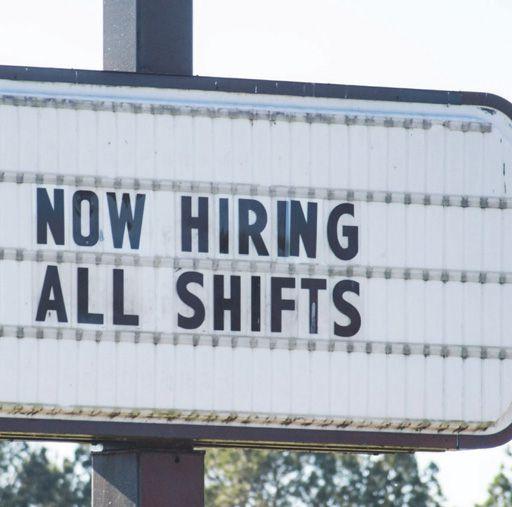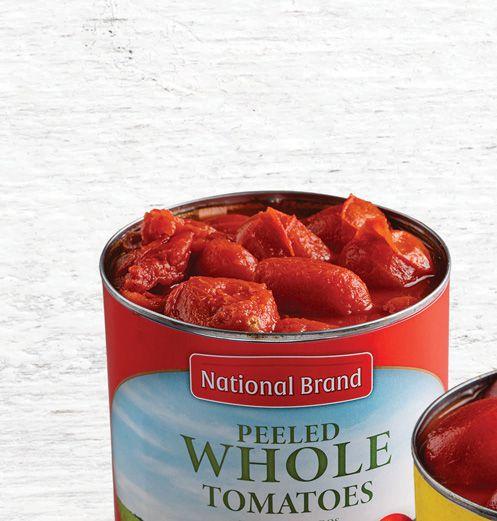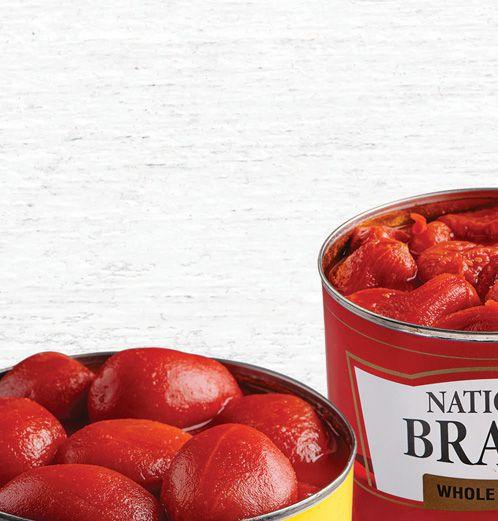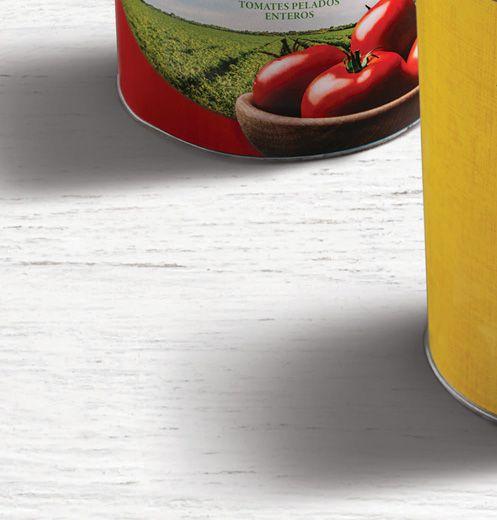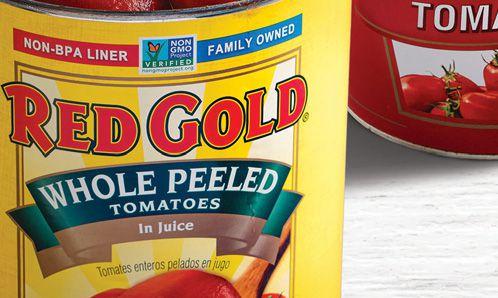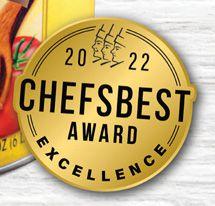






































































Fennel Leek
IDAHO® Potato Gratin

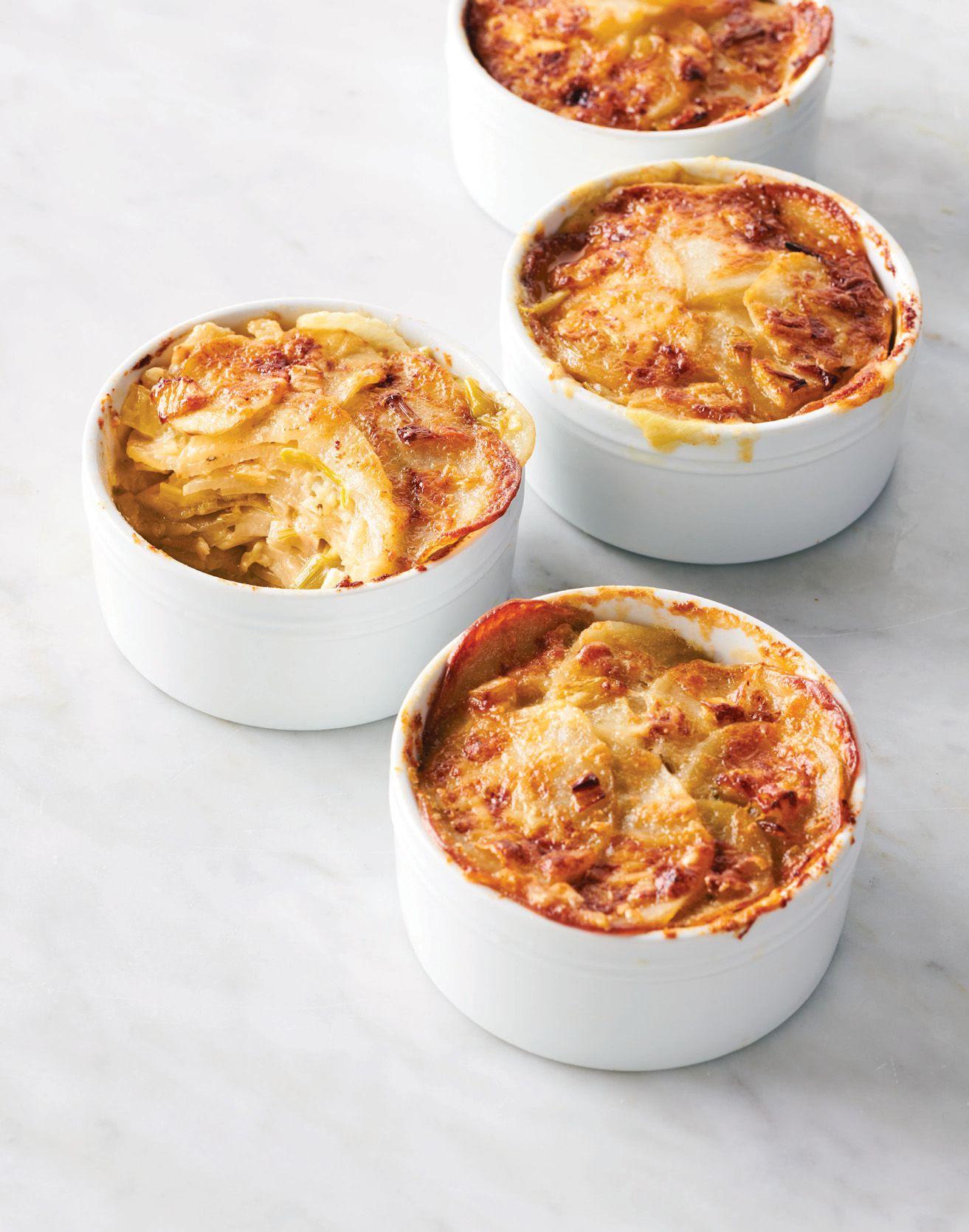
Sliced Idaho® Potatoes, layered with fennel and leeks and smothered in a creamy Gruyère Mornay sauce.
Idaho® Russet Potatoes

Fennel and Leeks
Garlic and Thyme
Heavy Cream
Grated Gruyère Cheese

Chef Credit: Mike Large, Chandlers Steakhouse, Boise, ID

TAKE THE STRESS OUT OF MENU
CAN SIGNATURE SAUCES SAVE YOU FROM MENU BURNOUT?
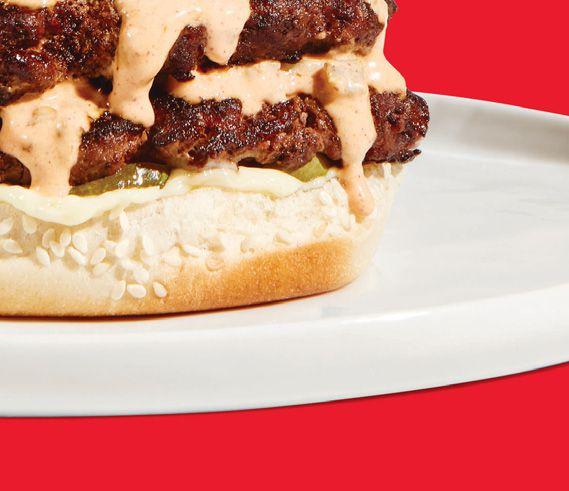

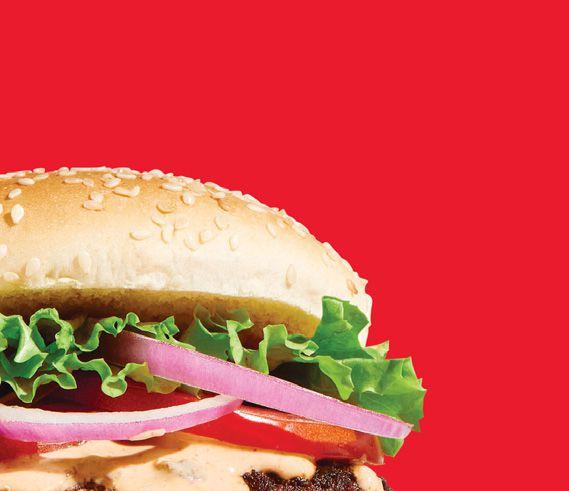


TURN BLAND INTO BAM!
FIND OUT HOW YOU CAN SAUCE LIKE YOU MEAN IT® WITH RECIPE INSIDE!





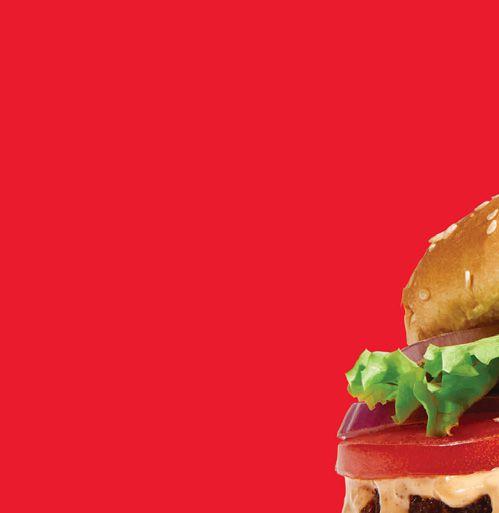
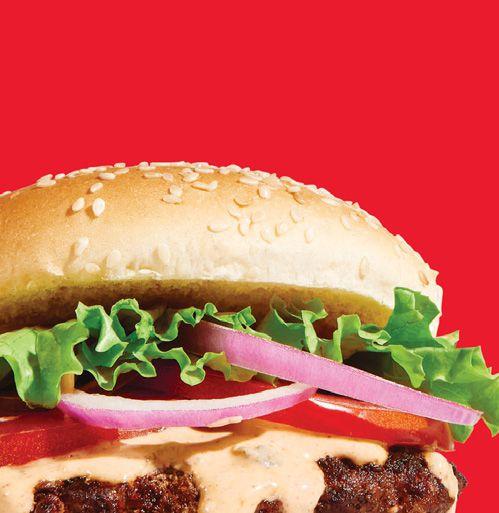


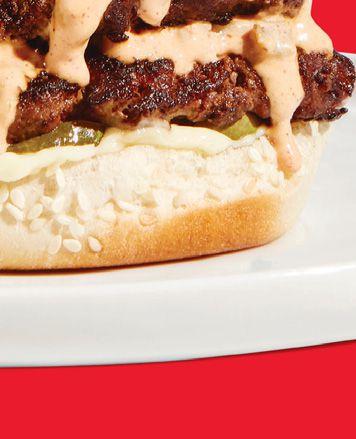
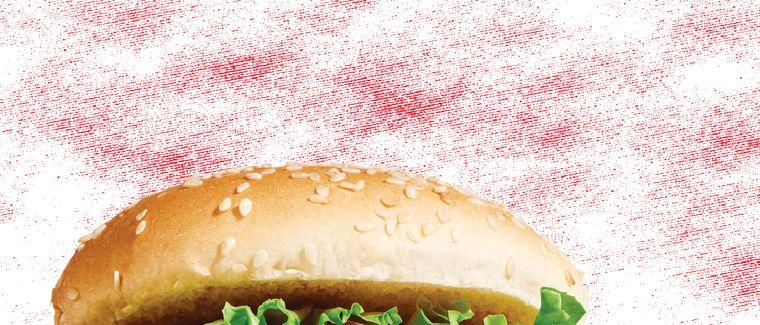




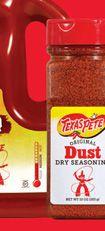
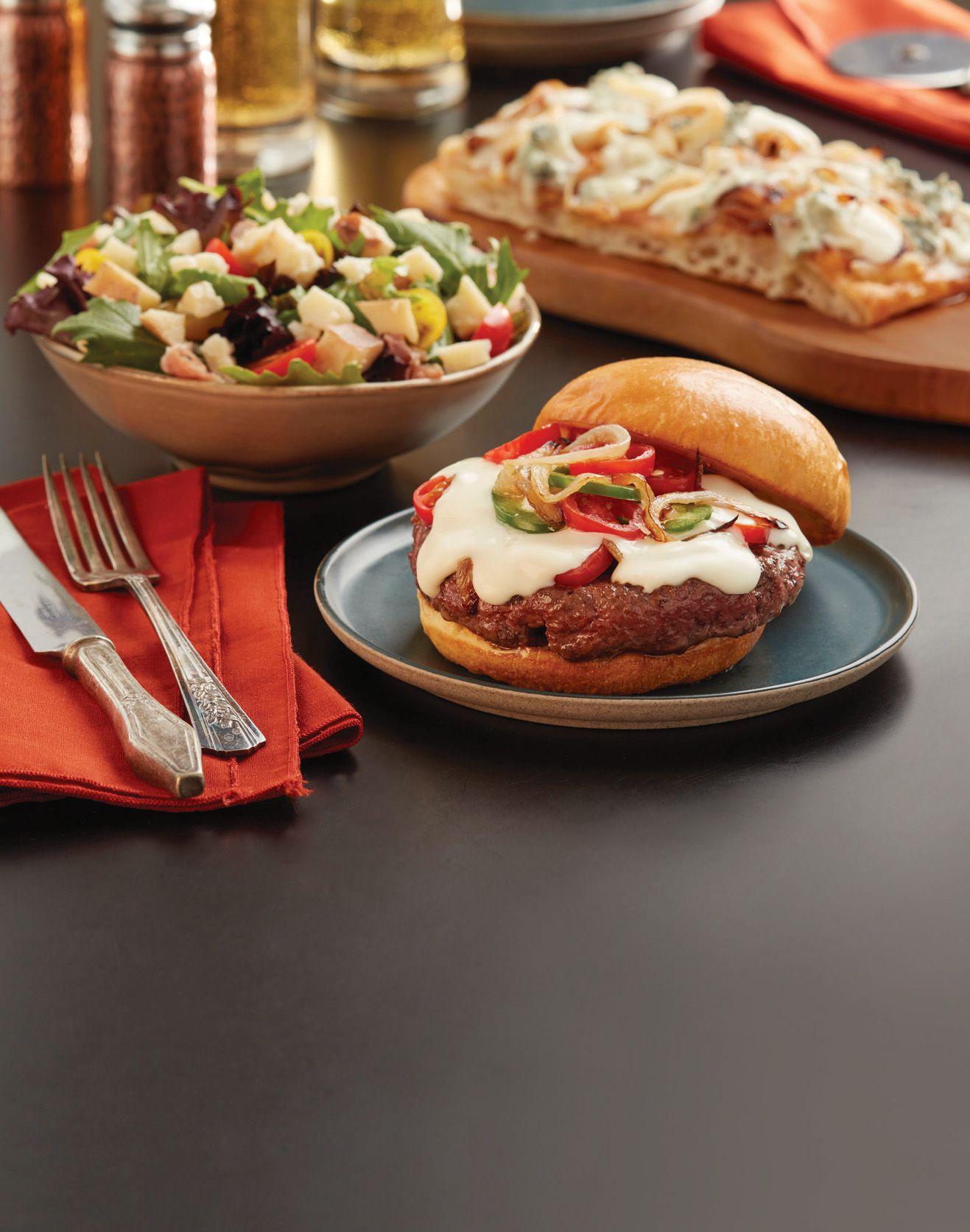















YOU COULD ARGUEQUICK AND FULL SERVICE have never been closer as segments. But it’s still what separates them that makes all the difference. At the same time, the challenges of the past two years have opened the door to fresh perspectives on what role restaurants play in consumers’ lives. Operators need only seize the opportunity.
DANNY: Did COVID-19 blur segments in the restaurant industry?


It’s perhaps the most-worn thought I’ve heard in recent months. It stems from a couple of fronts. Digital access widened the consumer base for brands of every size and ilk, making the potential to engage users
nels limitless. COVID also rattled diners’ expectations of convenience, leading concepts such as Smokey Bones to build casual boxes with fully equipped drive-thrus or chains like IHOP to spin off fast casuals. The role restaurants play has adjusted, and that’s a positive turn. Brands have referred to this as the “trust factor.” When the chips were down, people sought restaurants they knew and loved. It was up to those same operators to reward loyalty with seamless ordering that didn’t remind them why they should have gone elsewhere.
Within the restaurant itself, so much of what’s going on is an exercise in feedback, as our story on page 62 shows. Restaurants pulled the lever on multiple pandemic tools to combat early setbacks, like QR codes, pay-at-the-table, dividers, and so forth. What stays and what goes as we progress forward? As operators in that story noted, it’s not necessarily up to them to decide. If COVID accomplished one thing for restaurants, it was to break down the walls between segments— not necessarily blur them. Who you are and what you offer is not fog-
Two years into COVID-19, both sides of the service format have charted a new course forward, borrowing lessons from one another while still leaning into key differentiators.
gier or more generic than it once was. Taking those core equities and delivering them in fresh ways is where the whitespace lies. The key: Let guests shine the light on where to go.
NICOLE: In reflecting on our second QSR-FSR crossover issue, I realized just how much the rhetoric of the past two years has centered around endings. Of course, the pandemic did end many things ( a general sense of normalcy being one of the most prominent ), but as far as the restaurant world goes, I’m not convinced that’s the right descriptor.
When thousands of upscale establishments closed at the height of COVID, doomsday pundits pre-

while the segment has gone through the wringer, reports of its demise have been greatly exaggerated. Even the recent omicron spike only temporarily curbed recovery; by the end of January, week-over-week sales were growing on pace with fast casual and quick service, per the NPD Group.
teurs, like this month’s cover star, chef Daniel Boulud, are showing renewed vigor as they welcome an increasing number of patrons back for dine-in ( page 50)
On the other side of the spectrum, limited service could enjoy a fresh start of its own. Even before COVID, dine-in business was down at many chains, and Firehouse Subs CEO Don Fox counts his concept among them. But Fox doesn’t think quick service will now be relegated to off-premises-only. Instead, he anticipates a renaissance of sorts, one in which the segment can use the lessons of the pandemic to bring even more guests back into their dining rooms ( page 103)
So let’s put a stop to all this talk of endings. In this industry, you never innovation and new beginnings.
®
EDITORIAL
EDITORIAL DIRECTOR
Danny Klein
Danny@FoodNewsMedia.com
MANAGING EDITOR
Nicole Duncan
Nicole@FoodNewsMedia.com
CONTENT EDITOR
Ben Coley Ben@FoodNewsMedia.com
STAFF WRITER Trevor Griner Trevor@FoodNewsMedia.com
DIRECTOR OF CUSTOM CONTENT Peggy Carouthers Peggy@FoodNewsMedia.com
CUSTOM CONTENT ASSOCIATE EDITOR Charlie Pogacar Charlie@FoodNewsMedia.com

DESIGN & PRODUCTION
ART DIRECTOR Tory Bartelt Tory@FoodNewsMedia.com
ART DIRECTOR Kathryn “Rosie” Haller Rosie@FoodNewsMedia.com
ASSOCIATE ART DIRECTOR Erica Naftolowitz Erica@FoodNewsMedia.com

PRODUCTION MANAGER Mitch Avery Mitch@FoodNewsMedia.com
ADVERTISING ( 800 ) 662-4834
NATIONAL SALES DIRECTOR Eugene Drezner EXT 126 / Eugene@FoodNewsMedia.com
NATIONAL SALES MANAGER Amber Dobsovic EXT 141 / Amber@FoodNewsMedia.com
NATIONAL SALES MANAGER John Krueger EXT 148 / John@FoodNewsMedia.com
NATIONAL SALES MANAGER Edward Richards EXT 149 / Edward@FoodNewsMedia.com
SALES ASSISTANT Tracy Doubts EXT 124 / Tracy@FoodNewsMedia.com
CIRCULATION
CIRCULATION COORDINATOR N. Weber circasst@FoodNewsMedia.com
ADMINISTRATION
Journalistic, Inc. 101 Europa Drive, Suite 150 Chapel Hill, NC 27517
GROUP PUBLISHER FOOD NEWS MEDIA Greg Sanders Greg@FoodNewsMedia.com
PRESIDENT Webb C. Howell
IT MANAGER Jason Purdy Jason@Journalistic.com
SUBSCRIPTIONS
(800) 662-4834 FSRmagazine.com/subscribe QSRmagazine.com/subscribe FSR and QSR are provided without charge upon request to individuals residing in the U.S. meeting subscription criteria as set fo rth by the publisher.
REPRINTS
The YGS Group TOLL FREE (800) 290-5460
EMAIL QSRmagazine@theYGSGroup.com FAX 717-825-2150



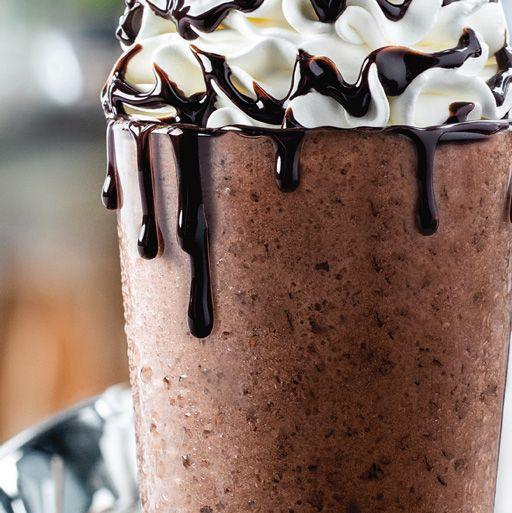
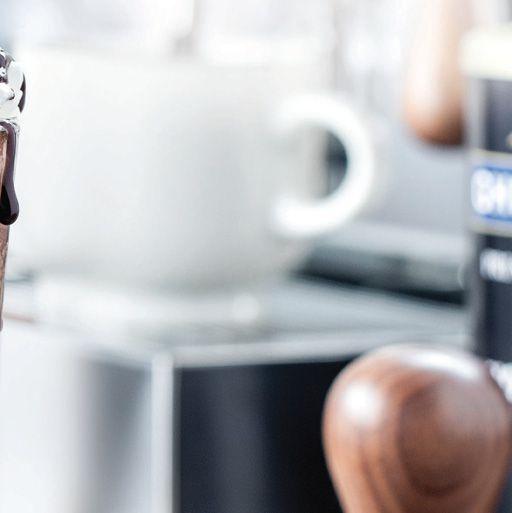

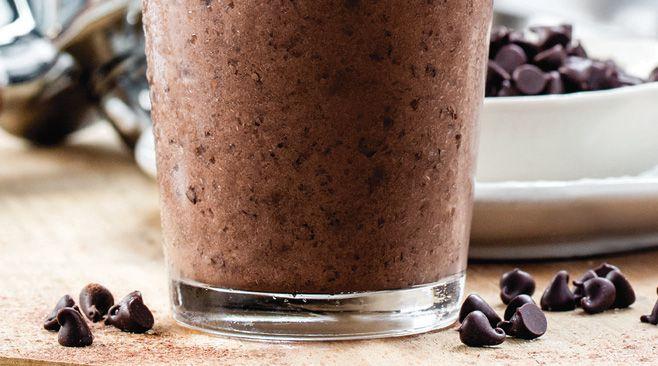
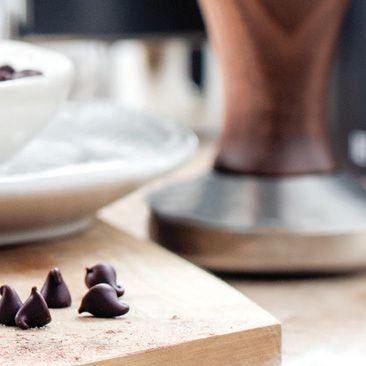





62
Despite ongoing setbacks, consumers are ready to return to restaurants’ dining rooms. Here’s what the future of dine-in could look like.
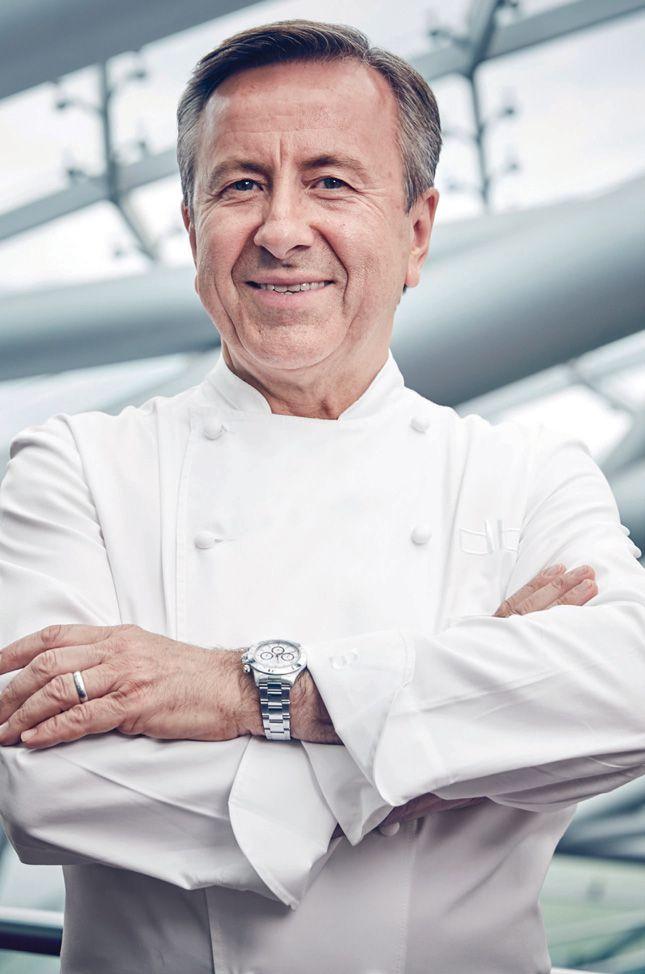 BY NICOLE DUNCAN
BY NICOLE DUNCAN
During the pandemic, the renowned chef took a more casual approach to dining, and with that fresh perspective in mind, he’s ready for a new stage of growth.
74
BY KEVIN HARDYRestaurants rooted in on-site games and sports were hit hard by the pandemic, but the category could be poised for a post-COVID resurgence.
MARCH 2022 / QSR-FSR



CHEFS & INGREDIENTS
15 THE FUTURE OF FOOD
In both quick and full service, a shift toward locally sourced, plantforward dishes with global flavors will dominate menus. BY NICOLE DUNCAN
22 BEER GARDENS IN BLOOM
Not to be confused with patios and al fresco dining, beer gardens bring their own distinct atmosphere, as well as a customizable service format.
BY TREVOR GRINER27 SEVERAL IRONS IN THE FIRE
From launching two new virtual brands to entering the world of CPGs, chef Jose Garces continues to enliven the Philadelphia dining scene and beyond.
BY TREVOR GRINER33 PULLING DOUBLE DUTY
As full-service concept Jinya Ramen Bar continues its expansion, it’s joined by Bushi, a sister fast casual with growth plans of its own. BY BEN COLEY
36 BLAZING THE PATH
The franchising arena is still lacking in diversity, but brands like Noodles & Company and WOWorks are pushing to bring more Black operators into the fold. BY SUZANNE
BLAKE45 PLANT-BASED MEAT’S NEXT ACT Restaurants can stay ahead of the curve with plant-based alternatives that appeal to consumers’ desire for healthier, more eco-friendly options. BY SUZANNE
BLAKE103 DINE-IN DESTINATION: QUICK SERVICE
Dining room traffic at limited-service restaurants was down even before COVID, but Firehouse Subs CEO Don Fox thinks the segment can regain ground. BY DON FOX
105 THE FUTURE OF FOOD IS FEMALE A new organization, Females in Food, aims to advance women into more leadership roles in F&B while also providing a supportive network. BY NICOLE DUNCAN
112 START TO FINISH: LIZ MATTHEWS Taco Bell veteran and chief innovation officer Liz Matthews has been a driving force behind some of the brand’s most inventive and playful menu items.
BY DANNY KLEINON THE COVER
This special combined issue of QSR and FSR features world-renowned chef and restaurateur Daniel Boulud. Boulud previously appeared on FSR’s sixth cover back in fall 2013.
PHOTOGRAPHY BY FOTOSTUDIO SALZBURG / HELGE KIRCHBERGER PHOTOGRAPHY
Eatertainment’s High Score











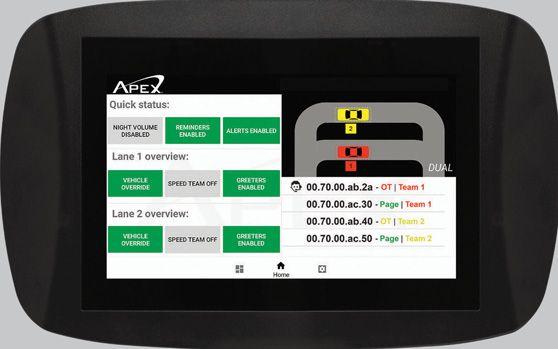
P. 20
Why Operators are Refocusing on the Perfect Takeout Fries
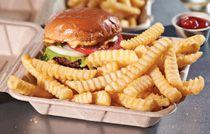
P. 46
Solving the Simple Dining Room Detail That Ruins the Guest Experience One easy fix solves service woes and creates strong bottom-line savings.

SPONSORED BY FLAT TECH
P. 57
FEATURED SUPPLEMENTS:
Diners are still eating off premises more than they were pre-pandemic.
SPONSORED BY LAMB WESTON
P. 30
Taking a Load Off
Say goodbye to headaches of managing equipment and maintenance repairs.
SPONSORED BY 86 REPAIRS
P. 34
Why Brands are Switching to Whole-Peeled Onions Slashing 90 minutes of labor per box is just the beginning.
SPONSORED BY GILLS ONIONS
P. 33
Pizza Party Here are some of the challenges and trends shaping the wide-open world of pizza.
SPONSORED BY SMITHFIELD CULINARY
Why This Taco Bell Franchisee Just Introduced EV Charging Stations


P. 81
Sign of the Times
P. 37
How specialty cheeses are sparking creativity in the face of various headwinds.
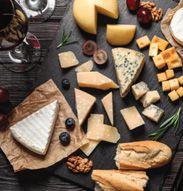

SPONSORED BY BEL BRANDS USA
Two trends collide when electric vehicle charging stations and quick-service restaurants meet.
SPONSORED BY CHARGENET
P. 60
Why Ruby Slipper Cafe is Embracing the Hot Honey Trend Both the brunch concept and hot honey usage are growing rapidly.
SPONSORED BY MIKE’S HOT HONEY
Digital signage rises to mission-critical status in 2022.
P. 82
Show Me a Sign
How digital signage went from “nice-to-have” to mission critical.
P. 90
Drive-Thru Dynamics
The biggest winner in the digital signage game? The drive thru.
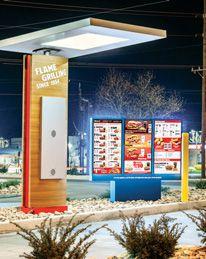
P. 96
Going Mental
The psychology behind digital signage.
P. 100
QSR MAGAZINE ONLINE SEE THIS STORY AND MORE AT QSRMAGAZINE.COM/SPONSORED
How Data Science Gives Small and Midsize Brands a Competitive Edge Operators improve sales with access to better data.
SPONSORED BY CIVIS
Key Players
The biggest names in the world of digital signage.
FSR MAGAZINE ONLINE SEE THIS STORY AND MORE AT FSRMAGAZINE.COM/SPONSORED
How Hotshots Sports Bar & Grill Grew Off-Premises

Sales The brand didn’t have online ordering at the outset of the pandemic. A new solution changed that.
SPONSORED BY DOORDASH




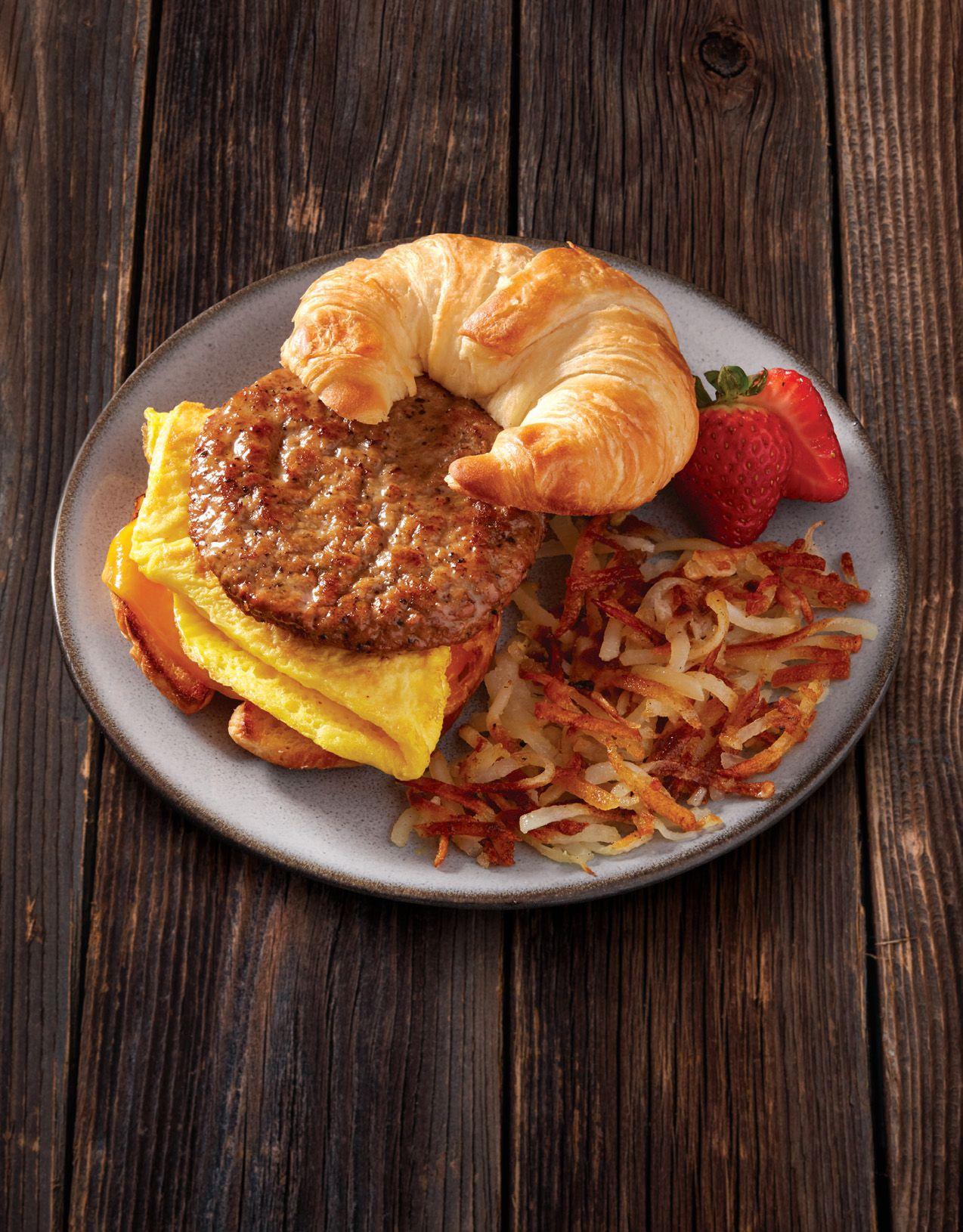

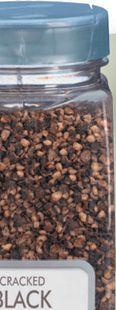
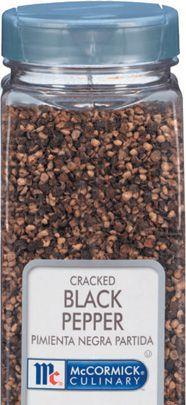





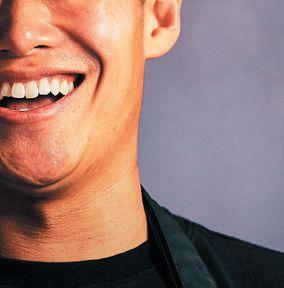




The dish that got chef Steve Chu from hot dog cart to full-fledged restaurant: Thai Chicken Meatballs. It’s got a little bit of everything – crisp mango slaw, tender, juicy chicken meatballs and of course, that phenomenal bite and texture of Cracked Black Pepper. Your Skills. Our Spices. Now that’s a potent combination. Learn more at: McCormickForChefs.com/McCormick-Culinary
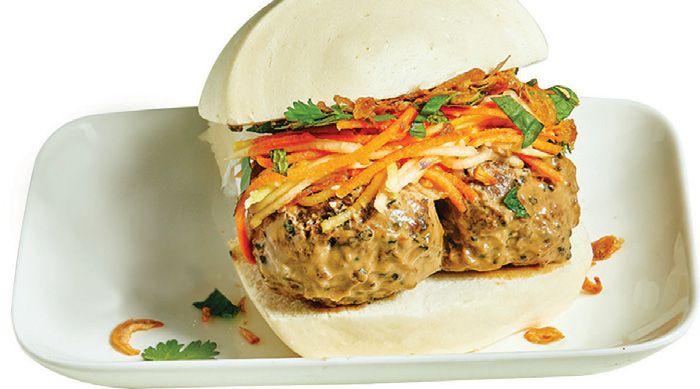
TOGETHER, WE FLAVOR











founder of micro-chain Dish Society has moved forward with a new NextGen Casual restaurant, Daily Gather, which embraces the server-driven, dinein experience.

 BY NICOLE DUNCAN FS R QSR
BY NICOLE DUNCAN FS R QSR



COMPARED TO THEIR QUICKSERVICE counterparts, full-service restaurants had a longer way to go in closing the gap between their standard operating models and the new, COVID-era ones. These radical and often difficult changes may have soured the full-service format for some entrepreneurs, but not Aaron Lyons. The
“People, including myself, took these types of experiences for granted. So this notion of getting together, people reconnecting over dinner and appreciating those moments that were taken from us, there’s just this huge demand for this right now,” Lyons says. “People, quite frankly, are sick of eating out of to-go boxes. By no means do I think delivery is going away. I think it’s going to continue to grow … but when they leave the house, they want an actual experience.”
Daily Gather, which opened in January, serves elevated, New American fare for lunch, dinner, and weekend brunch.
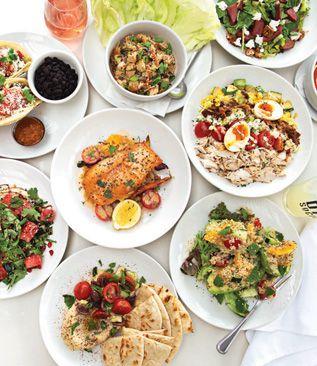
Lyons is hardly the only restaurateur to continue down the full-service path, but it is noteworthy that his previous concept, which now counts six locations across the greater Houston area, defies categorization. Dish Society is counter service at lunch and full ser-

Even as restaurateur Aaron Lyons grows his hybrid fast casual, he still sees potential in full service.
vice at dinner. Though Lyons had been inspired by pioneering fast casuals like Chipotle, he was just as eager to endow his restaurant with craft beer and cocktails as he was with locally roasted coffee. Plus, he didn’t want to leave money on the table when it came to the dinner daypart, which is rarely as lucrative for fast casuals as lunchtime.
But thanks to its limited-service side, Dish Society was better situated than its full-service brethren to adapt to off-premises when the pandemic struck. The restaurant already worked with third-party delivery, offered curbside, and had built-in tech integration thanks to Olo.
ONLY 17% OF CONSUMERS OPTED TO GO THROUGH THIRD-PARTY APPS LIKE DOORDASH AND UBER EATS
For as much as consumers clamor for online ordering and delivery, they’re less keen on using aggregators to place those orders. Within a three-month period, only 17 percent of consumers opted to go through third-party apps like DoorDash and Uber Eats, according to customer experience platform Paytronix. Instead, consumers were more likely to order directly through the restaurant’s website or app
“Had we been strictly full service, we would have been in more of a panic mode,” Lyons says. “So there wasn’t a major disruption from that standpoint. Our sales were down considerably for a while, and then they picked up and finished really strong thanks to that. But it would have been really easy for us to have been caught flat-footed had we not had so much emphasis on that to begin with.”
Dish Society’s transition back to in-person dining started with counter service exclusively. But eventually it reintroduced full service at dinner time as the public became increasingly fatigued by social distancing and longed for the human element of dine-in. It’s that same longing that is now fueling Lyons’ first foray into NextGen Casual. If anything, he thinks Daily Gather is performing better now than it would have pre-COVID.
Although he plans to grow Dish Society beyond the Houston area, Lyons wanted to add a new restaurant to his portfolio, one that allowed for more elevated menu items. The approach also followed in the footsteps of an iconic restaurateur.


“I think Sam Fox is a genius; he’s the guy that I look up to in the industry. He’s very versatile in his concepts and what he does. And if you look at a lot of the other successful restaurant brands, they don’t just have one brand,” he says.
So for Lyons, Daily Gather isn’t a one-off. He sees value in building a diverse portfolio that features various service formats, including fullservice restaurants with plenty of runway ahead.
“We want to expand the Dish Society brand into other markets, and I’d like to have a sister brand to take along on that journey.” ◗
%
BUT
32 % SAID USING AGGREGATORS WAS FASTER
(44 percent) or over the phone (42 percent).
Convenience was a crucial determining factor for those who used aggregators. Thirty-four percent reported that such apps were the only way to order through a specific restaurant, and 32 percent said the method was faster. Unsurprisingly, only 16 percent of those users said aggregators were cheaper.



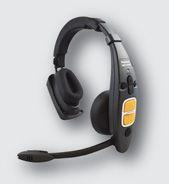
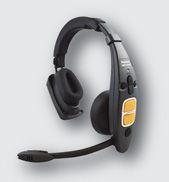




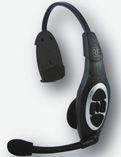







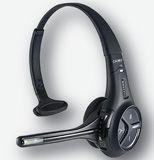
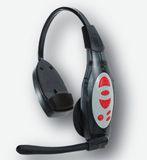
To-go business isn’t going anywhere, but neither are mounting consumer concerns around packaging materials, particularly disposable plastics. Per the Hartman Group, 83 percent of consumers worry about the amount of single-use plastics the world uses on a daily basis. Nearly three-quarters (73 percent) want to reduce their usage but don’t know how.



A number of enterprising restaurants are tackling the issue head-on by deploying their own line of reusable takeout containers or joining networks that share in the resources and responsibilities. And with cities from New York and Chicago to Honolulu and Charleston, South Carolina, moving forward with bans on plastic disposables, it’s an issue more operators could
83% OF CONSUMERS WORRY ABOUT THE AMOUNT OF SINGLE-USE PLASTICS THE WORLD USES ON A DAILYBASIS



••
A NUMBER OF RESTAURANTS DEPLOYING THEIR OWN LINE OF REUSABLE TAKEOUT CONTAINERS

••


CITIES FROM NEW YORK & CHICAGO TO HONOLULU & CHARLESTON, SOUTH CAROLINA, ARE MOVING TO BAN PLASTIC DISPOSABLES



It wouldn’t be a stretch to call 2021 ‘The Year of the Fry.’




It wouldn’t be a stretch to call 2021 ‘T he Year of the Fr y.’ On third-party delivery platform DoorDash, it was the On third-par t y deliver y platfor m DoorDash, it was the most-ordered item. most-ordered item

And while the classic french fry enjoyed a 130 percent A nd while the classic french fr y enjoyed a 130 percent uptick compared to the previous year, it was surpassed compared to the prev ious year, it was sur passed which grew a whopping 341 percent. which grew a 341 percent




130% CLASSIC STYLE


178% WAFFLE STYLE



341 % CILANTROLIME

Where a customer works could influence which types of restaurant they patronize, according to Revenue Management Solutions. Quick-service brands performed well with both consumers working from home and those in the office, while fast casuals lagged among both sets of customers. Full-service orders depended largely on location.
Thirty three percent of offi ce workers reported they had ordered more in the last month from full-service restaurants, compared to 32 percent ordering from quick service and 25 percent from fast casual. On the flip side, 35 percent of telecommuters upped their quick-service orders compared to only 23 percent for fast casual and 21 percent for full service.
35% OF TELECOMMUTERS UPPED THEIR QUICK SERVICE ORDERS COMPARED TO ONLY 23% FOR FAST CASUAL AND 21% FOR FULL SERVICE












Every day, honey bees bring life to over one third of the foods we eat through the process of pollination. And they happen to produce pure, all-natural honey while they’re at it. Consider this Honey Vietnamese Dipping Sauce, made possible by honey bees and the fresh ingredients they’ve so caringly provided. For this and other delicious recipes brought to you by bees, visit Honey.com.
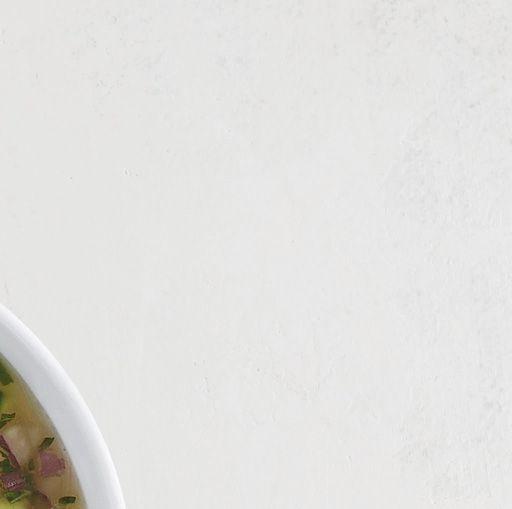
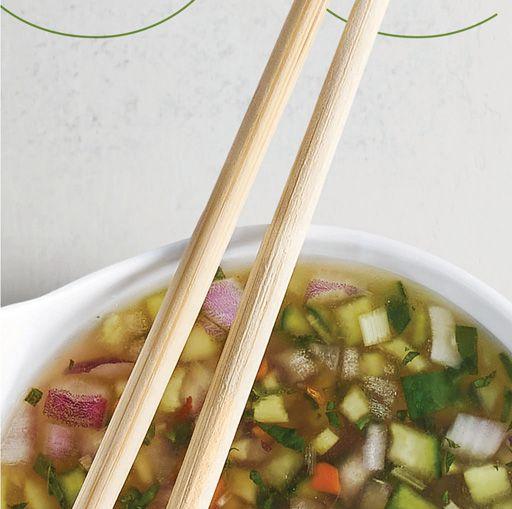

IN THE U.S., LOCAL FOOD SALES began gaining traction in the early 2000s. Around the same time, international cuisines started spreading beyond major metropolises. And though Americans’ overall consumption of vegetables and fruits regressed in the 2010s, the idea of plant-forward eating has become more prevalent in the public lexicon.
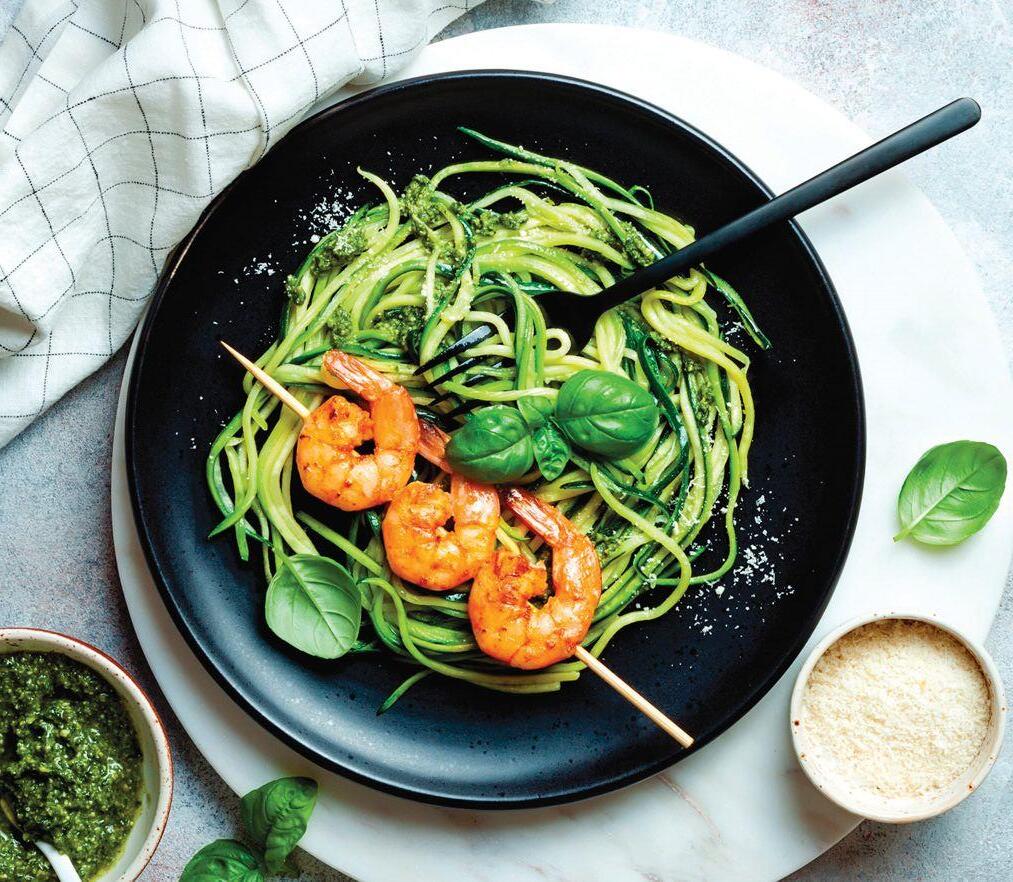 BY NICOLE DUNCAN
BY NICOLE DUNCAN
These are hardly new trends, especially when compared to buzzy items like Nashville hot chicken, Impossible Burgers, and jelly art cakes. But they are trends with staying power, not temporary fads, that permeate both sides of the industry, each of which is grappling with its own set of COVID-forced changes.
Fads may come and go, but larger trends toward local sourcing, plant-focused
“I expect the lines between limited and full service to continue to become more and more blurred. The consumer demand for more culinary innovation from the fast-casual segment continues to grow, and for full service, the demand for convenience is pushing that segment to innovate around the off-premises dining experience,” says Nick Graff, executive chef and vice president of culinary for Noodles & Company.
Not only does Graff think more plant-based options will crop up in menus, he also predicts chefs will push the envelope in that space. “Guests are craving the unexpected. They want to be surprised by the innovation coming from F&B and excited by the possibilities coming from the space,” he says.
Noodles & Company, whose menu is grounded in American, Italian, and Asian bowls, has begun spotlighting veggies with additions like zoodles, cauliflower noodles, and LEANguini, the last of which just launched in January.
Fellow fast casual Veggie Grill has championed vegetarian fare since it opened in 2006. To that end, it works closely with plant-based companies to stay abreast of the latest product launches.


“There is a breadth of activity happening across plant-based and cultivated/precision-fermented food offerings that can substitute for animal products. The innovation continues to improve and become more market-ready every day,” says T.K. Pillan, founder and chairman of Veggie Grill. “But then you need to be willing to put in the time and effort to work with the new products.”

Still, plant-based products are just the tip of the iceberg when it comes to the larger plant-forward trend, which isn’t restricted to veganism. Instead, it merely connotes a greater emphasis on ingredients like vegetables, fruits, legumes, grains, nuts, seeds, and more. In fact, some chefs prefer these basic building blocks to ready-made alternatives.
“I don’t necessarily lean into [ products] like Impossible meat. I’d rather utilize vegetables that can serve as center-of-plate proteins,” says Thomas Dritsas, culinary concept chef for Whiskey Cake Kitchen & Bar. “So whether it be a butternut squash or sweet potato, … there’s really no need for having beef or pork or chicken in the dish. And it makes way for a very interesting conversation.”
Last summer, Dritsas, a 20-plus-year veteran of Del Frisco’s, joined Dallas-based Whiskey Cake, which, at nine units and counting, is the largest concept in the FB Society restaurant group. Already the chef is working to incorporate more Greek and Middle Eastern flavors into the menu.
These cuisines, which fall under the Mediterranean banner, are rooted in vegetables, beans, and whole grains, with animal products like cheeses, seafood, and meats comprising a smaller portion.
While plant-forward might be a completely new approach to eating for some, Dritsas points out that it’s really a return to older culinary traditions.
“For my father growing up in Greece, there was very little protein on the table when it came to meat because they didn’t have the money for it. It was usually special occasions,” Dritsas says. “The staples that always hit the table were fruits and vegetables. I think that’s why they lived so long.”
This philosophy is best illustrated in dishes like the new “Farmshuka,” which is a play on the classic shakshuka dish found throughout North Africa and the Middle East. Dritsas’ rendition features farm-fresh ingredients like eggs, tomatoes, garbanzo beans, and okra, as well as spices like Aleppo pepper and toasted cumin and coriander. The Farmshuka also illustrates another trend: the rise of authentic, yet personalized, global bites.
Similar to Dritsas, Alexander Sadowsky is also weaving more international influences into his menus. The corporate executive chef at Twin Peaks says Tex-Mex will probably take a backseat while the chain experiments with different dishes like Moroccan-fried chicken or bulgogi, which could be styled like a Philly cheesesteak or a bánh mì. Sadowsky sees them as part of a new, globalized take on comfort food.
“Comfort food isn’t going away,” Sadowsky says. “I think it has longevity as long as you’re looking at it from the right perspective. My comfort food might be Thai food; yours might be tacos. We don’t






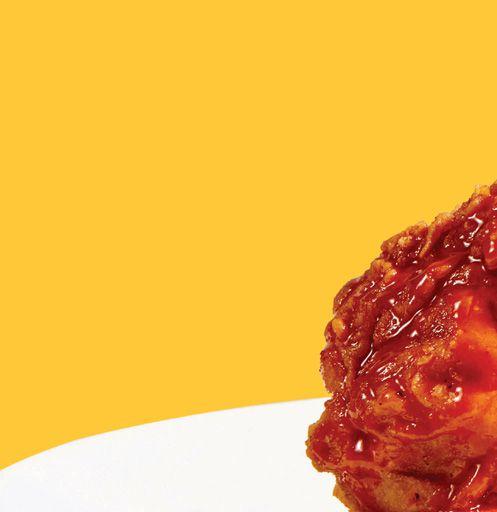
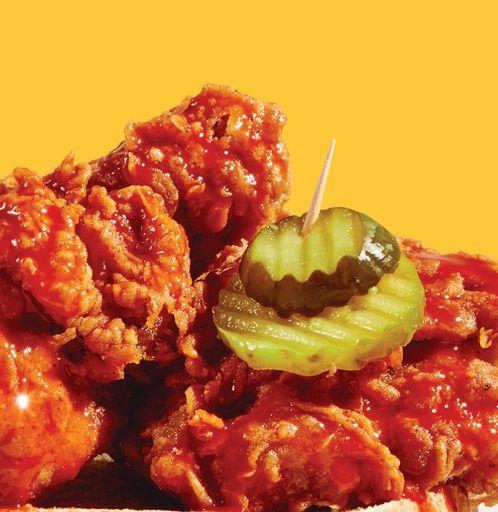

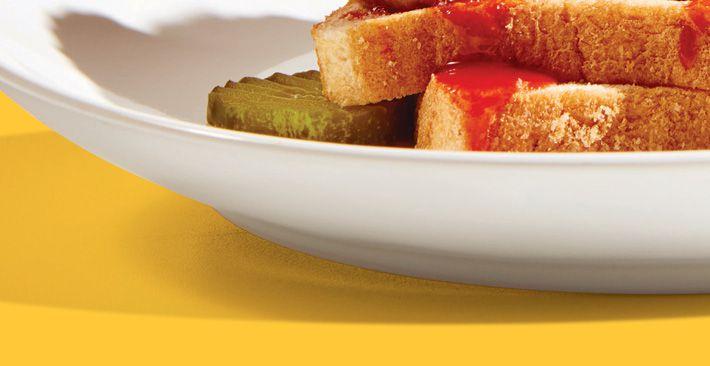

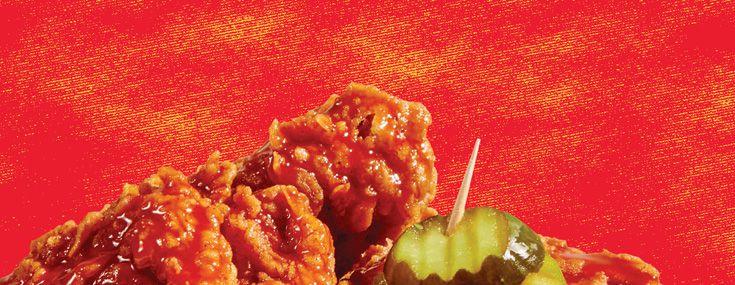



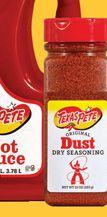
dictate that to the consumer. As long as [chefs] are willing to be a little bit braver and bolder in those statements and the food that they’re putting out, I think it’s going to be more successful.”
This shift was already underway before 2020, but as Sadowsky and so many others have pointed out, COVID was like dousing gasoline on a fire— it only accelerated a growing blaze. In less than a decade, he’s noticed a significant shift.
“Five years ago, if you said ramen in the U.S., you were thinking of those packets that cost 10 cents. Last week, I had really great ramen in South Dakota. I never would have thought that was going to happen,” Sadowsky says.
In his opinion, occurrences like this will only become more common. Plus, the widespread adoption of QR code menus and the advent of ghost kitchens have freed up brands to test new items in a quicker, more cost-effective way. Before COVID, so-called blackboard specials were mostly limited to independents or smaller restaurant groups.
Now, Sadowsky says, multiunit brands like Twin Peaks, which has more than 80 locations, can do something similar. In January, the chef had three 8-foot-tall whiteboards filled with tentative rollouts that corresponded with seasons, special events, and holidays.
But even with a new level of adaptability, Twin Peaks, like every other restaurant, is constrained by the supply chain and workforce. Inflation is also putting operators in a double bind; the increased cost of goods and labor may force restaurants to raise prices just as stagnant wages leave more consumers cash-strapped.
“Value and affordability are a must right now for guests, and we will likely see that continue for months to come. However, restaurants are going to have to offset that need for affordability,” says
Mike Colonna, president and CEO of NORMS
Restaurants, a diner concept with nearly two dozen locations across Southern California.


He offers Domino’s as an example. Rather than raise prices, the pizza chain reduced the number of wings in its $7.99 deal from eight to six in January, citing inflation, not the supply chain.
Trimming the number of SKUs could also drive value by curtailing costs and streamlining menus. Colonna predicts more operators will condense menus moving forward, and he’s not alone in that assessment. Veggie Grill’s Pillan and Twin Peaks’ Sadowsky share that perspective, and Noodles & Company’s Graff adds that the advent of oneoff virtual brands will help restaurants test new menu items in a nimble, commitment-free manner.
Dritsas, however, has a different perspective.
“Since we opened back up after the pandemic, we’ve had a full menu. We didn’t do an abbreviated menu at any point,” Dritsas says, adding that the only exception was when the restaurant first had to close and rely on off-premises meal kits. “So if anything, with ops complexity, we’ve added a little bit more because we believe that if we can outperform our peer set, we’ll be the destination where people want to go.”
Even though Whiskey Cake isn’t changing the number of items it sources, it is doubling down on where it sources from, with an even greater commitment to tapping local channels.
Twin Peaks is also finding renewed benefits in this strategy. Sadowsky points out that what’s considered local can vary, with some brands sourcing regionally and others staying within a 50-mile radius. Either way, he says, progress is being made to build a better system.
“The globalized food chain was so broken when COVID hit,” Sadowsky says. “The longer haul freight is getting so expensive that … it kind of leveled the playing field. Would you rather pay a farmer that’s in your neighborhood $3 for a carrot or would you pay the commercial guy $3 for the carrot, but $2 of that went to the shipping?”
It’s an interesting dynamic; at a time when flavors are expanding far and wide, the ingredients themselves are coming from closer to home. So while Instagram-worthy fads are bound to cycle, these larger shifts will remain more constant. And it’s something consumers are likely to value, too.
“People have opened up a little bit more,” Dritsas says. “I think there’s more of an appreciation for being able to experiment, opening up a little bit, [and] being able to try different things.” ◗
“I think it has longevity as long as you’re looking at it from the right perspective. my comfort food might be thai food; yours might be tacos. We don’t dictate that to the consumer.’”
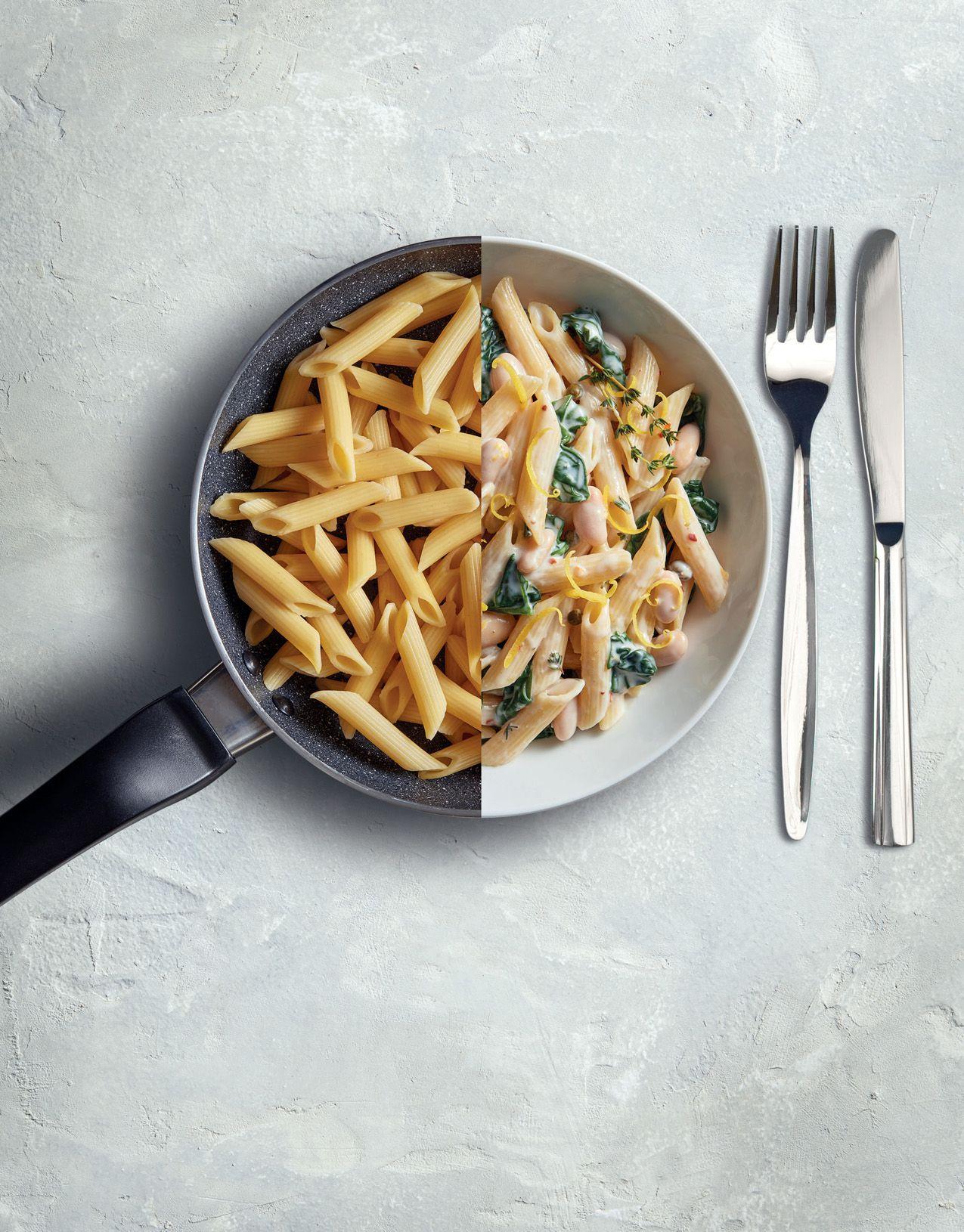
CHEF BRIAN DUFFY—a restaurateur, foodservice consultant, and television personality—recently opened SideBird Kitchen in Philadelphia. Duffy knows as well as anyone that the industry has trended toward takeout and delivery, which is why he designed SideBird Kitchen to have just 55 seats.
Even he, however, has been surprised by just how much offpremises dining has dominated his order mix. He reports that 78 percent of his business is still takeout and delivery.
SideBird Kitchen is not the only restaurant experiencing sustained off-premises orders. Recent NPD Group/CREST data has indicated that even though consumers are dining in restaurants again, overall eating patterns have changed. The share of commercial foodservice traffic for delivery, drive-thru, and digital is well above pre-pandemic level, and remains close to pandemic-high levels.1
For example, prior to the pandemic, delivery made up 3 percent of industry orders. That figure is now 7 percent, down slightly from a pandemic high of 10 percent.1
One of the challenges with takeout and delivery sales is
ensuring food is just as delicious after an off-premises journey as it would be in a restaurant. French fries, in particular, can be a challenge to keep crispy, and crispy french fries are pivotal. In fact, a recent study by french fry producer Lamb Weston found that crispiness was the single most important attribute when it comes to consumers liking fries.2
“Think about when a consumer orders a burger and fries,” Duffy says. “The first thing they do is grab a fry and eat it. If that fry is soggy, you’ve already lost that customer. Now they’re on high alert and thinking everything else is going to be bad.”
There are many strategies that can be taken to help ensure fries remain crispy. Takeout containers with proper ventilation can be a helpful start. But more than anything, Duffy recommends choosing the right fries for the job.
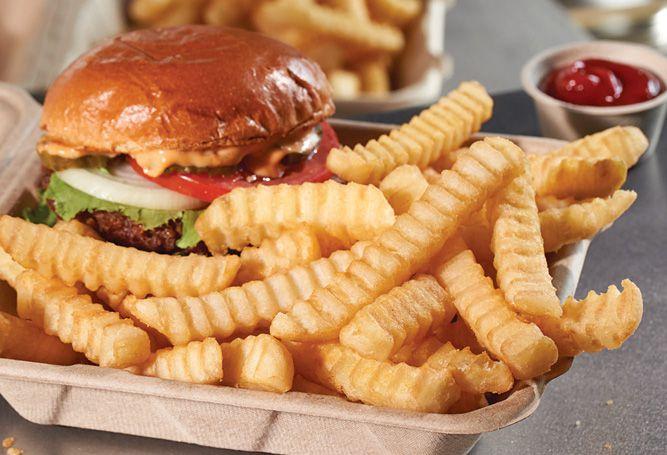
Lamb Weston designed its line of Crispy on Delivery ™ fries after consulting with consumers and chefs like Duffy. The company offers five different fry cuts in this line and has expanded its off-premisesready options, each of which has a battered coating that keeps them crispy for up to 30 minutes when using vented packaging. Other product options include the Colossal Crisp® line featuring a thick, extra crispy, battered coating, and the Lamb’s Seasoned® line with a wide variety of styles and cuts.
“Restaurants like ours have to remain committed to making sure dishes look just as beautiful in a takeout container as they do plated,” Duffy says. “To do that, you have to use the best possible product. And to me, Lamb Weston makes the best french fries. I’m a huge fan of the way they engage with consumers and chefs to help shape their products. They have a variety of fry products specifically designed for takeout and delivery that are a testament to that collaboration.”
Diners are still eating off premises more than they were pre-pandemic.
Whether your guests are dining in or picking up, your fries’ reputation is built on crispiness. Crispiness is the single most important attribute when it comes to consumers liking fries. 1 So as you are considering which fries are going to come through for you on- and off -premises, learn more about the benefi ts of coated fries and how they can help boost your bottom line and your guests’ experience.









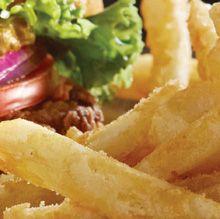
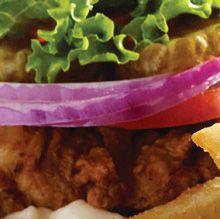
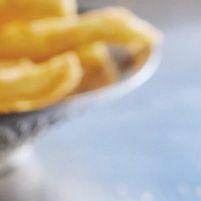
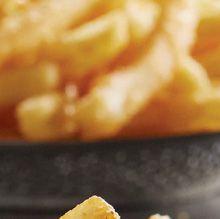
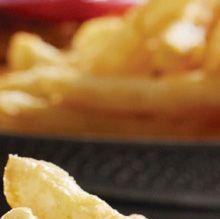
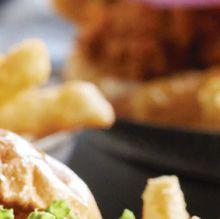

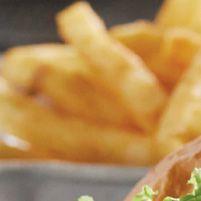

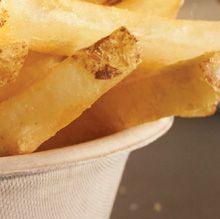
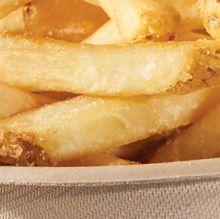

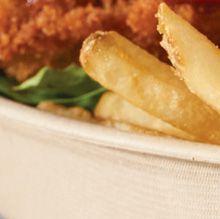


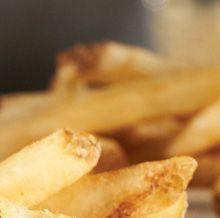
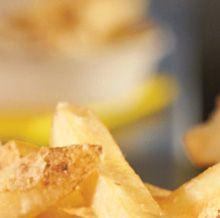
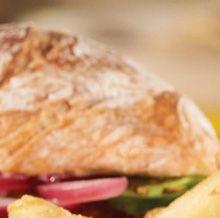

#C0057 go.lambweston.com/crispyfries #LW201











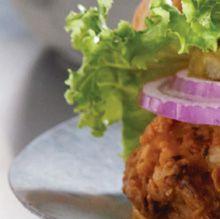
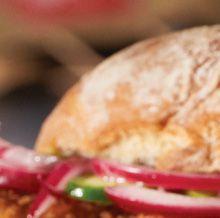
EVEN WITH A MORE RELAXED ATMOSPHERE, TUCKER BREWING PRIDES ITSELF ON PROVIDING RESTAURANT-STYLE HOSPITALITY.
AS THE PANDEMIC intermittently limited indoor seating capacity over the past two years, the need for outdoor dining became increasingly obvious—and important.

According to the National Restaurant Association’s 2021 State of the Restaurant Industry report, 56 percent of casual-dining operators devoted more resources to developing or expanding outdoor dining areas since the beginning of COVID. Nearly one in four quick-service operators and more than a third of fast-casual operators reported doing the same.
Given these statistics, it’s no surprise that beer gardens have become popular destinations for consumers looking for a sense of normalcy.
“People clearly feel more comfortable sitting outside,” says Nico Freccia, cofounder of 21st Amendment Brewery. “What you see consistently

More than mere patios, these al fresco operations can be adapted for both quick and full service.







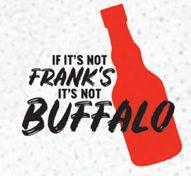


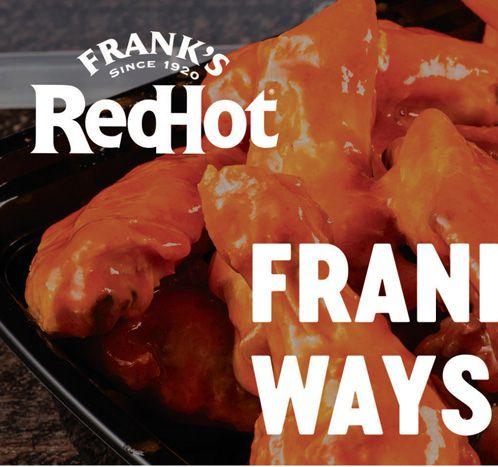
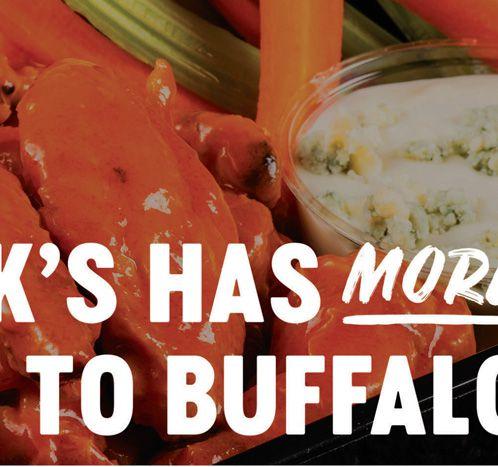








is that people feel way more comfortable about going out if they have an outdoor space where they can hang out.”
In addition to its brewpub in San Francisco’s South Park neighborhood, 21st Amendment Brewery also has a taproom with a large beer garden in nearby San Leandro. It’s roughly 5,000 square feet with 16-foot-long picnic tables.
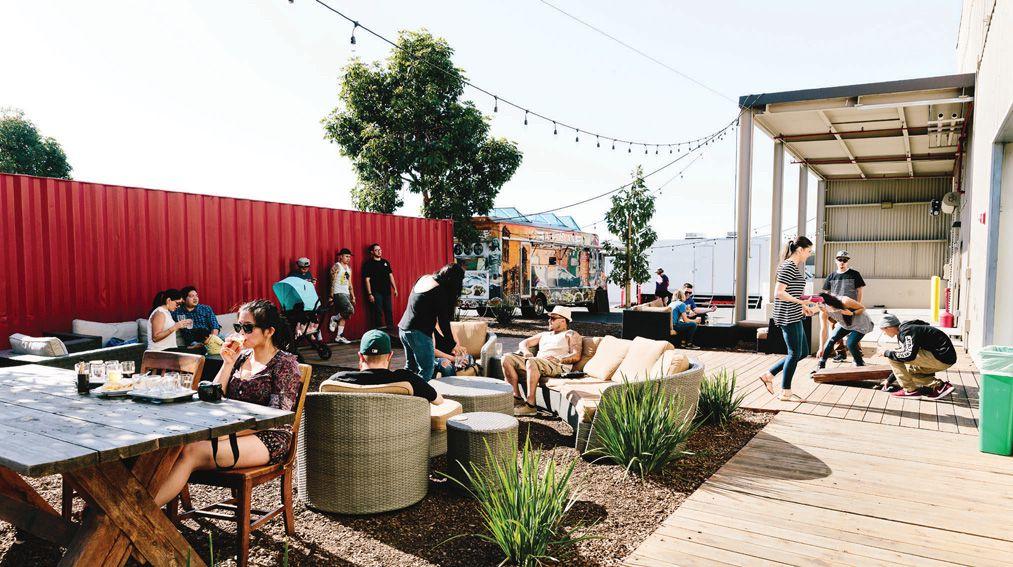
So, what makes a beer garden different from a restaurant with al fresco dining or a neighborhood bar with a patio? Freccia, who launched 21st Amendment Brewery in 2000, says part of the distinction stems from the layout and furnishings.
He adds that a beer garden will generally have long, communal, picnic-style tables, compared to the two- and four-tops found at most al fresco dining areas. Another factor is the overall vibe of the outdoor area and its accessibility, namely whether patrons can enter directly or if they have to go through the restaurant or stop at a host stand first.
“I think of a beer garden as more of a place where you can just walk in and grab a spot,” he says “It’s more casual, whereas other places that have al fresco dining are more restaurants that also have an outdoor area for dining along with an expectation of you ordering food.”
With a food truck on-site and QR codes on tables for customers to scan and order, 21st Amendment’s beer garden is run like a quick-service
“I
restaurant. Freccia says this model allows for faster throughput, especially with recent issues surrounding staffing, but there are some drawbacks.
“We do QR codes, which is sort of a blessing and a curse,” he says. “It’s a blessing because people are able to sit down, scan the code … and they can order a beer and have it delivered to them within minutes. The real downside is you lack that interaction with a server.”
Other beer gardens have faced similar challenges in preserving that human touch.
Ashley Hubbard, who owns Tucker Brewing Company in Tucker, Georgia, says the team tried to integrate QR codes into the 8,500-square-foot operation, but it simply didn’t work with the setup. Instead, Hubbard says Tucker Brewing runs the beer garden like a full-service restaurant.
“It is so much better and makes so much more sense for our staff,” she says. “Also, I think the customer feels it’s better, too. Any [team member] walking by their table can stop and help them … and the customers are happy and feel taken care of.”
Indeed, Hubbard, who graduated from the Culinary Institute of America, feels that the interaction between server and customer is key, even if most other beer gardens model themselves after quick serves.
“You’re taking care of the customer. We want
think of a beer garden as more of a place where you can just walk in and grab a spot. It’s more casual, whereas other places that have al fresco dining are more restaurants that also have an outdoor area for dining.”
Menu CHICKEN & TURKEY with: NO Antibiotics Ever, Never Ever NO Animal By-Products NOTHING But Veggie Feed

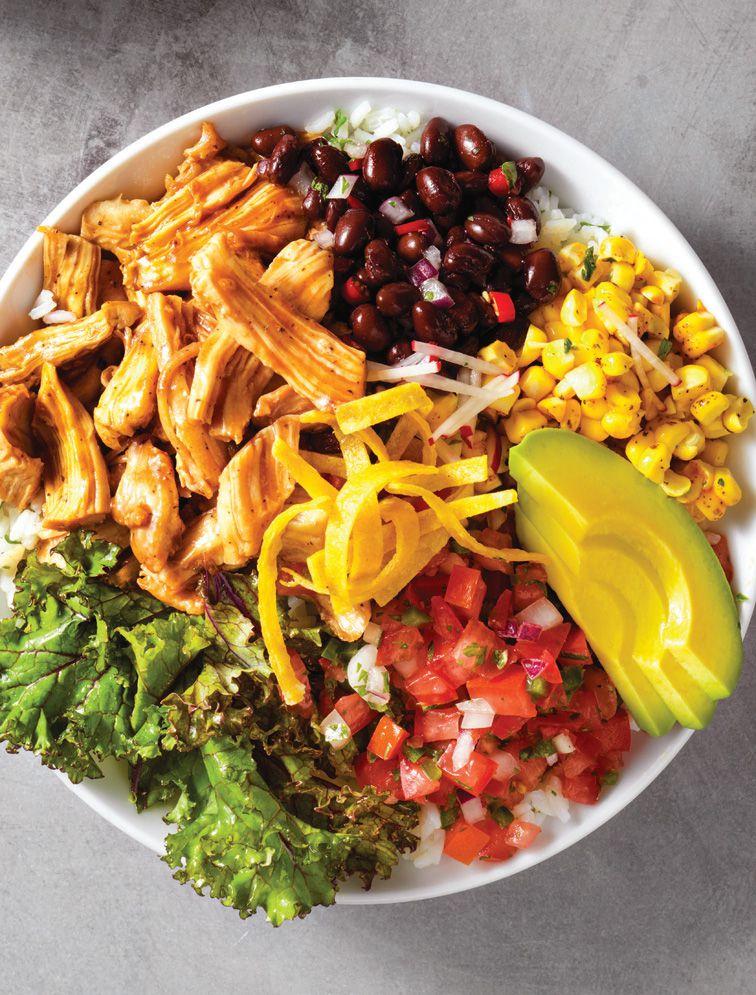
Unlike some of the other guys, we don’t use them in any life stage. Not in the egg. Not in the hatchery. Not in the feed. Couple that with our exclusive All-Veggie Feed with NO Animal By-Products and it adds up to clean-tasting PERDUE® NO Antibiotics Ever Chicken and Turkey with the premium menu claims that can command higher price points.
PERDUEFOODSERVICE.COM®

you to come here and forget about where you’ve been, what kind of week you’ve had,” she adds. “It’s a little more demanding on our staff, but I think at the end of the day, it makes people happier.”
With such a large outdoor space, Tucker Brewing is able to seat 288 people at any given time. Hubbard says that capacity has been pushed to the limit over the last several years due to customers being eager to get out of their pandemic bubbles. In terms of sales, June 2020 ended up being the best month in the business’s now five-year history.
Warm months are definitely the busiest, Hubbard says, and having good weather and a communal outdoor seating area is a winning combination at a time when people are looking for well-ventilated venues to unwind.
While most beer gardens share the same atmosphere—relaxed, communal, casual—the drinks can vary. Some, like Tucker Brewing, focus strictly on beer, while brands, including Dog Haus, extend the offerings to wine and even stronger libations.
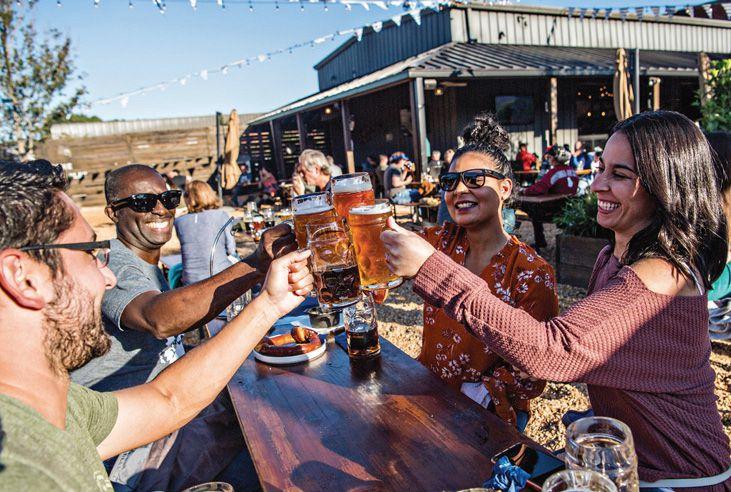
“Two years ago, we launched our cocktail program where we partnered with No Kid Hungry and donated a dollar of every cocktail sold to that charity,” says Quasim Riaz, a founding partner at Dog Haus. “Our goal now is to further progress that cocktail program, and one thing that will definitely be on the menu are mocktails.”
Dog Haus has 51 total locations comprising 42 brick-and-mortar fast casuals and nine ghost kitchens. Of the 42 traditional sites, 29 are Dog Haus Biergartens.
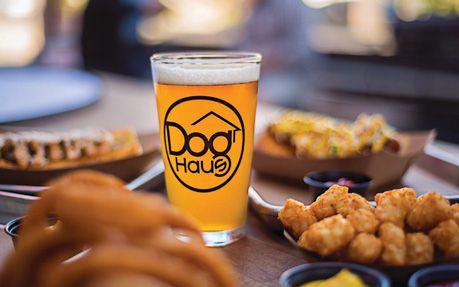
Riaz describes the model used at the beer gardens as craft casual, noting it oper-
ates like a fast casual where customers order from the bar or POS. He says the craft casual term describes the elevated nature of the food and experience.
“We do turn it up a notch,” he says.
The decision about whether a new Dog Haus location opens with a biergarten is entirely up to the franchisee. Oftentimes, Riaz says, it’s the real estate that dictates that choice.
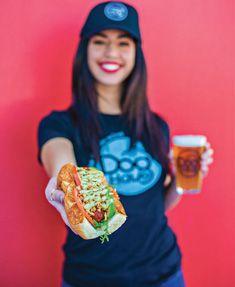
He adds the Dog Haus team has more than one reason to gravitate toward sites with outdoor space. The ability to transform patios into beer gardens allowed the brand to offer in-person dining during dine-in restrictions. But another reason is the added value the outdoor space brings in terms of foot traffic and sales. “Even in a normal climate where there isn’t a pandemic, it’s free rent,” Riaz says. “So, we love that.”
Capitalizing on rent-free space is exactly what Freccia and 21st Amendment Brewery are doing in San Leandro. The company’s production facility would be leasing the spot regardless, so the taproom and beer garden are just capitalizing on the existing real estate.
“We’re paying rent and utilities on this space, whether we have a taproom or not because it’s devoted to production. So, the fact that we have a taproom that’s generating revenue makes it a much higher margin business than, say, a standalone restaurant,” Freccia says. “Spaces that have that kind of opportunity are always going to be very attractive.” ◗


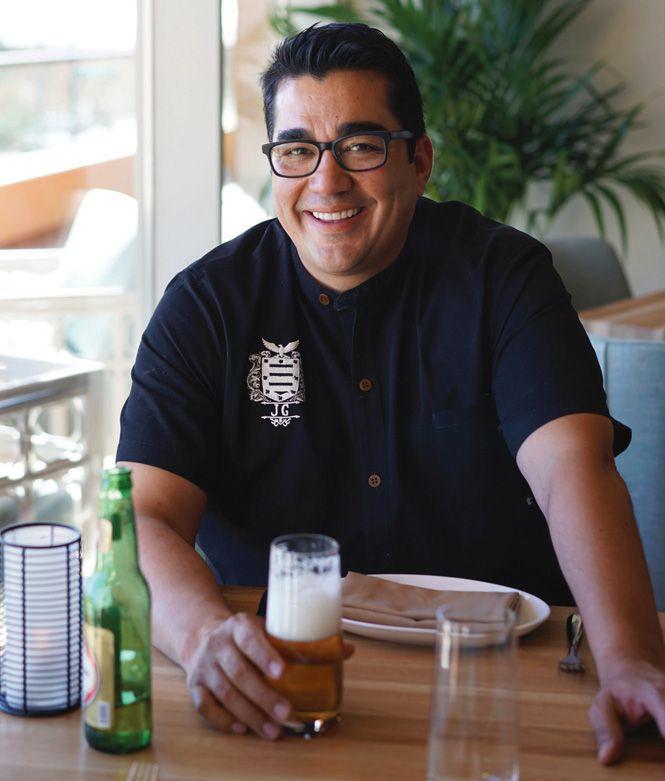 BY TREVOR GRINER
BY TREVOR GRINER
LIKE MANY CHEFS, Jose Garces built his restaurant empire around in-person dining, whether it was a fast casual or a full-service establishment. Over the years, the Iron Chef and James Beard Award winner has become skilled in shepherding new restaurants from idea to reality, but nothing could prepare him for what COVID would bring.
“Full-scale foodservice was going to have to evolve,” Garces says. “This has all been a bit of a reckoning for the industry.”
Garces’ eponymous group includes multiple restaurants in his home base of Philadelphia, as well as a couple of satellite locations in Atlantic City, New Jersey. With menus ranging from Spanish tapas and modern Mexican to seafood and burgers, the chef has ventured into new territories before; his restaurants also vary in their level of formality, with fast casual Buena Onda being the most laid-back and fine-dining establishment Volvér the most elevated.
Building pandemic-era concepts was an altogether different experience, but Garces says he already had some projects in the works. COVID-related closures and restrictions simply reinforced the need to get the ball rolling on those idled ideas. In fact, he relished the challenge.
“I think it is kind of my sweet spot,” he says. “Creating sustainable brands that have high impact with low SKUs



and doing them in an efficient way.”
But before introducing new concepts, Garces dove into the ghost kitchen world with his existing restaurants. When indoor dining bans once again swept Philadelphia in December 2020, he transformed his original catering business, Garces Trading Company, into a virtual hub for Amada (tapas), The Olde Bar (seafood), and Village Whiskey ( burgers). The platform has since grown to include dishes from more of his restaurants, and at press time, Garces Trading Company still sold heat-andserve meal packages, as well as hybrid experiences that incorporated Zoom sessions with an on-staff chef.
“I started pulling myself out of the brick-and-mortar restaurant mindset and really thinking about other aspects,” he says.
Garces Trading Company operates out of The Olde Bar, which also hosts
another concept, one the chef didn’t create himself. Last summer, he welcomed New Orleans–based World of Wings into the fold through a partnership with Ballard Brands, which acquired Garces Group in 2018 (the chef continues to lead the group on the creative side)
Just a couple of months after launching the online marketplace, Garces opened two new digital-only concepts: Livy’s Plant Based Foods and Rustika Pollo a la Brasa, which centers around Peruvian-style rotisserie chicken. Operations for the two brands set up shop in Distrito, Garces’ casual Mexican eatery in West Philadelphia.
Rustika was inspired by the chef’s travels, but the idea—and name— behind Livy’s originated much closer to home.
“The inspiration for Livy’s Plant Based Foods really revolved around my daughter’s dietary restrictions,” he
says. His daughter, Olivia, had already followed a gluten-free diet for a few years, but during the pandemic, she went vegetarian, citing not only the health benefits but also the environmental ones.
So Garces began learning about plant-based dining. As a self-described “meat eater,” he says it wasn’t easy initially (indeed, animal proteins anchor many of his menus). But he came to develop an appreciation for plant-based dining and the preparation that goes into it.
“I appreciate and support any environmentally conscious and sustainable practice out there,” the chef says. “I’ve also been known as a meat cookery chef by trade; I was on the National Pork Board … and I still have a passion for those things. However, applying my skills and knowledge and cooking techniques to the plant-based world has been really exciting and fun.”
More than a year in, both Livy’s and Rustika have been performing well, and Garces hopes to eventually turn them into full-fledged brick-andmortar restaurants. If and when that happens, he says he’d like to launch Livy’s as a quick-service restaurant, while he thinks Rustika could be better suited for a sit-down model.
“I think that [ Rustika] lends itself to a full-service experience,” he says. “The beauty of it is I have the ability to flex up and down with the menus. Right now, we have the delivery-only menu. By adding appetizers, a drink program, and more entrees, I could get that to full-service capability.”
Garces is also flexing in the reverse direction. While Buena Onda is a brick-and-mortar in Philadelphia, it’s now slinging tacos—deliveryonly—in D.C. This offshoot is just the beginning of robust expansion plans for the fast casual, which, thanks to Ballard Brands, is opening the door to franchising opportunities in both quick-
serve and kiosk formats.
The digital versions of Buena Onda and World of Wings have given Garces first-hand experience in the logistics and promotional strategy behind delivery. Now, like many of his peers, he’s focused on perfecting those operations.
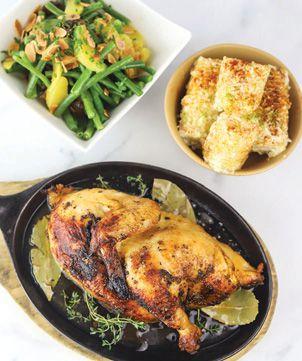
“We’ll have to embrace the delivery aspect of it,” he says, “so, making more menus that are delivery-friendly, embracing that as part of the overall business strategy. … And that’s been the problem for full-service restaurants. They weren’t ready. They weren’t mobile, and they weren’t knowledgeable of how the quick-service world works.”
Another of Garces’ joint business ventures is a new line of plant-based, shelf-stable, ready-toeat meals called Casa Verde. Like Livy’s, these CPG products mark a departure from traditionally meat-centric Latin American dishes. The initial series features Garbanzos Al Pastor, Lentil Mole, Red Bean Pozole, and Coconut Chowder. Garces says Casa Verde has been in the works for two years and has already secured distribution. The ready-made meals are slated to hit shelves this calendar year.
FAVORITE KITCHEN UTENSIL: Offset griddle spatula
RESTAURANT INDUSTRY IN A WORD: Evolving BEST DISH UNDER 30 MINUTES: Veggie frittata
FAVORITE QUICK SERVE: In-N-Out Burger
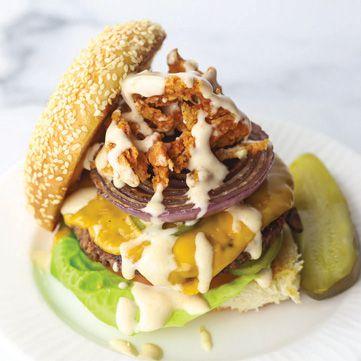
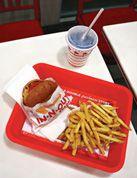
Business duties may have pulled Garces out of the kitchen to a degree, but he is still passionate about cooking and F&B innovation. Stepping out of the brick-and-mortar mindset has meant trying new things, like creating a web series titled, “Cooking Space.” Averaging about 10 minutes apiece, the episodes walk viewers through some of Garces’ favorite recipes, like Fish Tacos & Elote, Paella Valencia, Chicken Burrito Bowls, and Gambas al Ajillo & Crema Catalana.
He and his team even built a studio kitchen to film even more content. For Garces, being flexible and finding new channels of revenue are key elements in ensuring his company’s longevity.
“That’s something I’m really going to sink my teeth into [this] year,” he says.
As for the future of full-service dining, Garces says there are going to be some tough, necessary changes for the business model to remain successful. He thinks borrowing ideas from quick service, such as digital menus and off-premises options, will be key.
“The sooner full-service operators get on board with that, the better off they’ll be. Then they can take advantage of the quick-service revenue that’s out there,” he says.







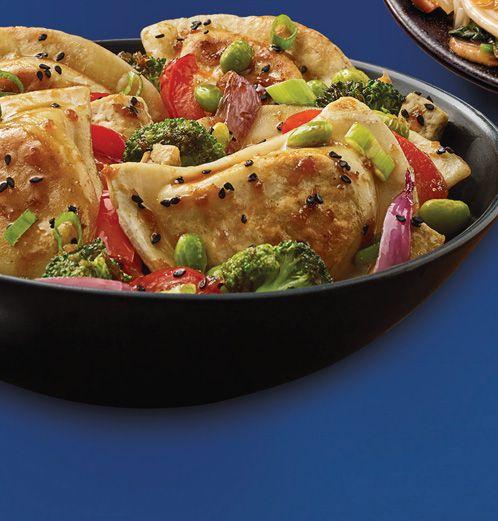
They’re every restaurant manager’s nightmare: equipment breakdowns. A broken cooler, freezer, or beverage machine can cost an operator thousands of dollars in lost sales and inventory, plus the cost of repair or replacement. And, preventive maintenance is yet another necessary evil that demands attention.
Now, operators can take the tiresome task of finding and managing maintenance and repair vendors off their to-do lists. Here, Daniel Estrada, CEO of 86 Repairs, explains how and why many quick-serve operators are moving to a more modern maintenance solution.
When restaurant equipment breaks down— as it inevitably will—frontline staff may not have time to stop what they’re doing, contact
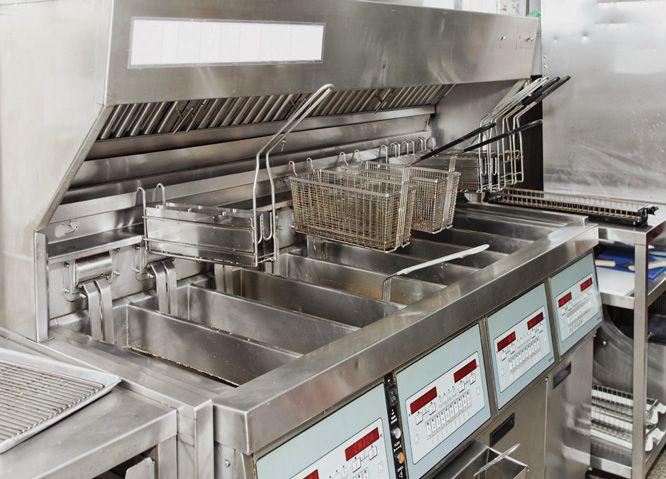
vendors, compare prices and availability, and wait for someone to show up.
86 Repairs is a simple concept. When something breaks, you send us a text message, and we manage the end-to-end process of getting it fixed. For a monthly fee, the company manages all repairs and preventive maintenance, from hood cleaning and grease trap removal to HVAC system maintenance, plumbing, drive-thru systems, electrical, and more. We don’t just give operators another tool to manage—we manage tasks proactively on their behalf and own the process until it’s resolved.
WHAT IF IT’S A MINOR ISSUE? DO RESTAURANTS STILL NEED TO WAIT FOR A VENDOR TO COME OUT?
If possible, we help troubleshoot the issue to avoid the cost of an unnecessary service visit.
We don’t make any money from service companies—there are no referral fees or markups. Because of that, our incentives are aligned with the customer’s. Our customer success managers are able to successfully troubleshoot one in five incidents.
HOW DOES 86 REPAIRS DIFFER FROM OTHER
The last thing most operators want is another piece of software to manage. General managers, line cooks, and other staff who identify and report issues want to communicate on their terms. So instead of building an application where customers submit requests solely through an app, we use a variety of more accessible channels. Frontline staff can communicate via text, Slack, WhatsApp, email, or by submitting a request through the 86 Repairs Portal—that is what makes our solution stand out.
Over the last 18 months, we’ve seen a shift in focus on how the operation affects the employee, and not just the other way around. Operators are trying to do more with less, and part of that is empowering their teams to manage their responsibilities more effectively and efficiently. Removing maintenance and repairs from managers’ plates allows them to focus their energy where it really matters—on customer service and meeting the company’s growth goals.
“86 Repairs is a simple concept. When something breaks, you send us a text message, and we manage the end-to-end process of getting it fixed.”REPAIRS/ SHUTTERSTOCK






















Here are some of the challenges and trends shaping the wide-open world of pizza. B Y C H A R L I E P O G A C A R BY
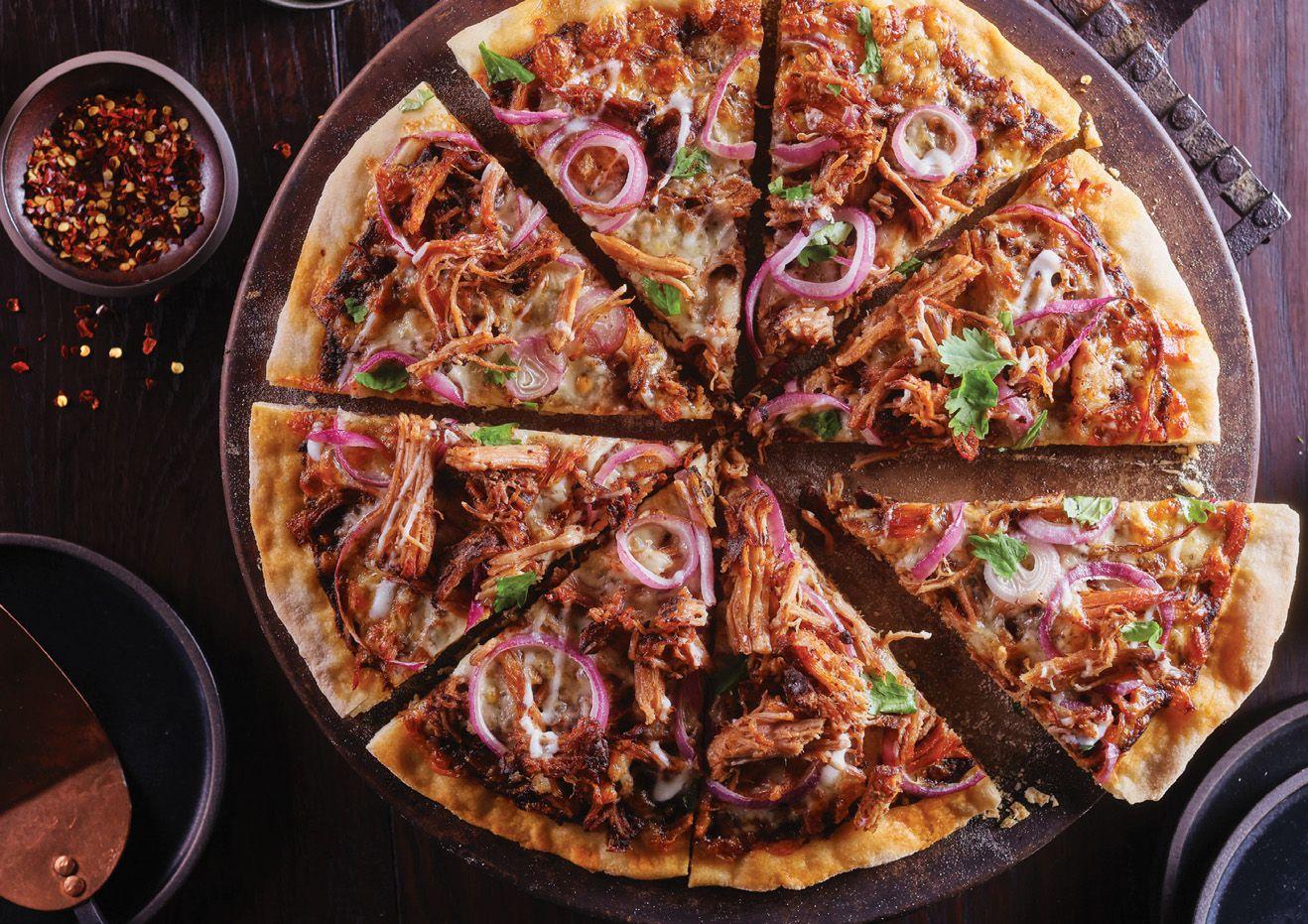 CHARLIE POGACAR
CHARLIE POGACAR
ONE WOULD BE HARD PRESSED TO FIND A PAIR of operators who love pizza as much as Jamie Culliton and Alex Koons.
“After my wife and my son, pizza is the love of my life,” says Koons, who owns Purgatory Pizza in Los Angeles. Koons worked his way up from delivery driver to the owner of Purgatory Pizza, and will soon be opening a vegan pizza parlor. “I love talking about pizza. I’ll do it with anyone.”
Culliton could talk for hours about the science that goes into perfectly tossed dough cooked to spec. He also happens to be the Michael Jordan of pizza acrobatics, having won several national and world cham-


pionship titles for his dough-spinning heroics—but he still prefers talking about a nice, crispy crust.
“There’s a certain cell structure that you look for in a perfectly cooked pizza,” says Culliton, owner of The Nona Slice House outside of Tampa, Florida. “It’s something many people don’t understand. They think pizza has to be this greasy, doughy mess, but when pizza is cooked right, it’s way more enjoyable, and it isn’t nearly as heavy on the stomach.”
While the duo may love pizza, their small businesses have been challenged by the many complications that touched the industry at large. The following pages will take a look at some of the insights the two operators recently shared with this publication in an attempt to help other pizza operators—and operators in general—navigate what is shaping up to be another rollercoaster year.
In Sept. 2021, Datassential reported that 95 percent of pizza operators believed that their pizza














sales would increase or at least stay the same in 2022. The same survey found that 88 percent of consumers had increased or shown a steady amount of pizza consumption when compared to the year prior. This is great news for



trending—the entire segment has zones, wings, and salads offering guests a wide variety of options at even the average pizza place.
As a result, like many pizza places, The Nona Slice House and Purgatory Pizza have not lacked for certain side effects, though, as Culliton has noticed a scourge of hangry visitors at The Nona Slice House in recent months. He lists this as one of his biggest challenges: It’s harder than ever to fully staff his restaurant, and yet, customers have rewarding experience outside of the home. Tensions are high, and patience can wear thin. “Of course, this is still the exception rather than the rule,” Culliton says.
pizza operators, or operators who were considering adding pizza to their menus.
It makes sense, too, as pizza is where so many current trends intersect: It’s a comfort food that is highly customizable and has always traveled well as a takeout item. It’s not just pizza that is



Cup-n-char Pepperoni: Margherita cup-n-cha pepperoni is what it might sound like: pepperoni tha is shaped like a cup and chars more easily than pepperoni that lays flat. Chef Jamie Culliton, owner and operator of The Nona Slice House in Tampa, Florida, favors this shape of pepperoni, saying it’s a thicker cut with a better mouth feel. “And it collects that grease,” Culliton says. “A lot of people say they don’t like grease, but they secretly love it, right? I just thin it adds a lot of flavor.” A
“Yeah, the attitudes from some guests have been really strange,” Culliton says. “I just think everybody is stressed. You just have to scratch your head sometimes and wonder why people are treating your staff so poorly. But look, that’s the 1 percent of visitors, if that. Ninety-nine percent of our customers are awe-
“I think we as restaurant owners have to do a better job to create an atmosphere that people want to be a part of.”
some and very understanding.”
Culliton knows this isn’t unique to his restaurant—it’s been a theme across the country the past year-plus. He also knows he isn’t the only operator who has had trouble attracting employees. He says he’s had occasions where he has run ads for months at a time without getting a response.
“It’s really unlike it’s ever been,” Culliton says, noting that he still has an “awesome core of people,” that he has grown his business around. But as his business grows, he’s had the need for more people,
with will also be familiar to operHe notes that his packaging costs have risen by about 200 percent, while the price of something as simple as chicken wings have gone up 400 percent.
Koons echoes many of these same issues, noting that packaging has been hard for him as well. Similar to Culliton, Koons prides himself on building a culture within his organization, but even he admits the responses he gets to job listings are different than they had previously been.
“Frankly, people sat at home for a year and had time to think about how the restaurant environment can be a really gnarly place,” Koons says. “We work tough hours, and there’s a lot of pressure on workers. I think we as restaurant owners have to do a better job of sphere that people want to be a part of.”
The solution to the labor problem, Koons says, is to create a work environment that is more entic-
Smoked Meats: Barbecue has long been a great way to quite literally spice up pizza offerings. It’s why things like Smithfield Smoke’NFast beef brisket and pulled pork have begun to show up on pizza menus. They are ingredients with great versatility, too—pizzerias can easily feature a barbecue sandwich or cal-
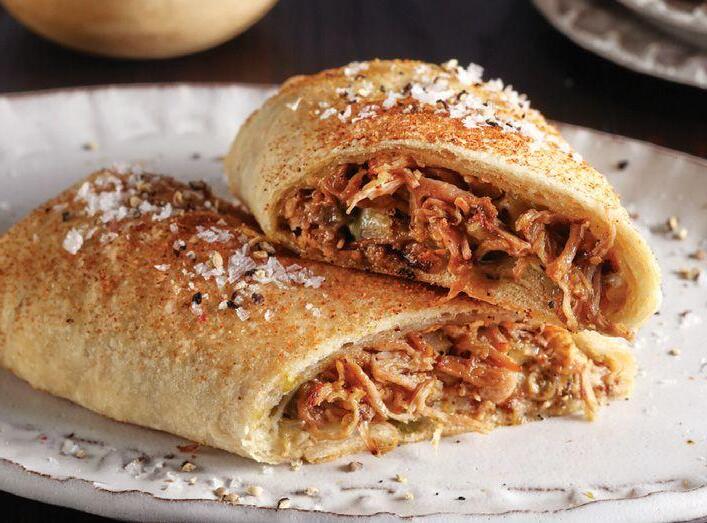
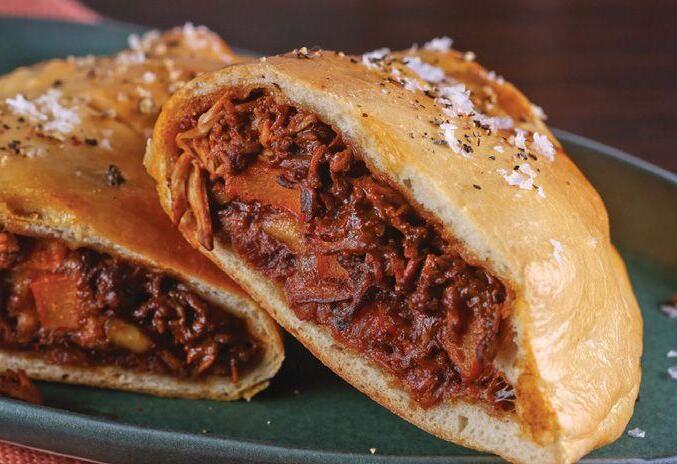
“I think it’s super important to let diners know about the quality of life they are supporting.”SMITHFIELD CULINARY




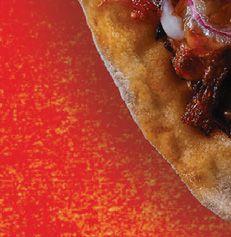
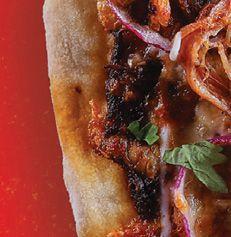

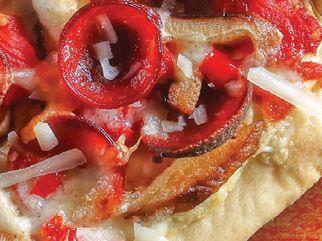
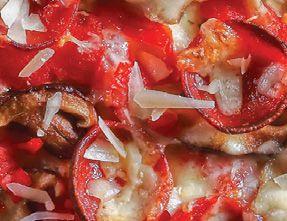
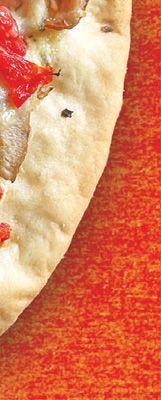
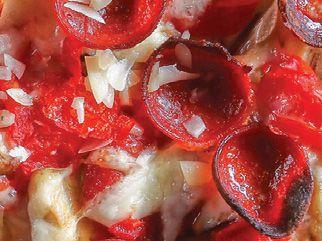
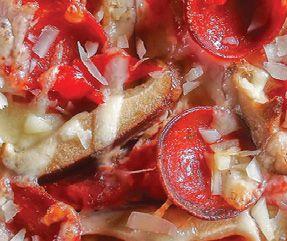

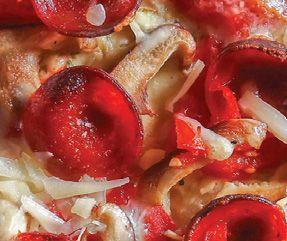

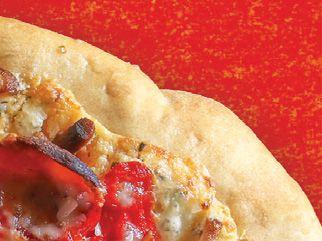
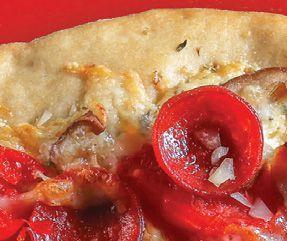
Stay ahead of the game with Pizza Plus. With 44% of consumers eating pizza at least once per week, the opportunities are huge. We’ll help you identify areas for growth, plus offer all the products you need to keep up with demand. It’s just how we keep you on top.









 Technomic Pizza CTR, 2020
Technomic Pizza CTR, 2020








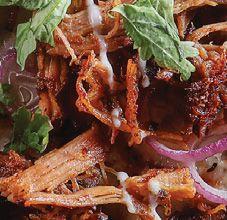





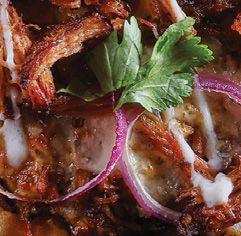
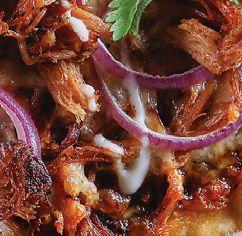
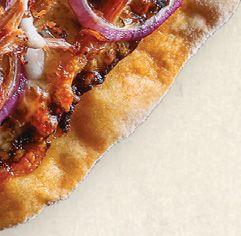



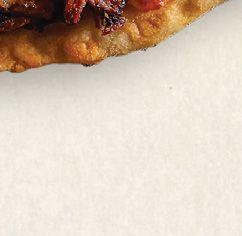









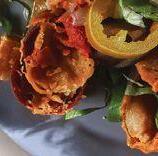







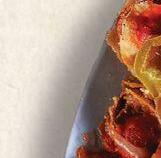
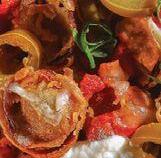















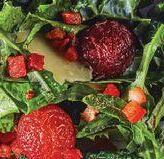



KC Wild Wings: Smithfield Smoke’NFast KC Wild Wings are another trendy ingredient that operators are leveraging in times like these. They are pork shanks that offer a nice, meaty canvas for chefs to work with. Where Culliton estimates that chicken wings have gone up 400 percent in price at times from where they were at pre-pandemic, KC Wild Wings offer an alternative.
Detroit-Style Pizza: Detroit-style pizza—rectangular in shape and baked in pans—is said to have originated at Buddy’s Pizza in Detroit in the 1940s. Now it seems like everywhere one looks, a pizza company is adding Detroit-style pizza to the menu. Indeed, Datassential reports that Detroit-style pizza showed 99 percent four-year growth between Sept. 2017 and Sept. 2021. “Pizza in general is going super hard right now,” says Alex Koons, owner and operator of Purgatory Pizza in Los Angeles. “Chefs are trying to find their niche inside of that ongoing mega trend. One of the places you’re seeing that is with the square, Detroit-style pies—there are a lot of places making that, or concepts opening up based on it.”
Hot Honey: Datassential reports that “spicy honey” has grown on pizza menus by 513 percent over the past four years. Mike’s Hot Honey, which was originally served at Paulie Gee’s pizzerias in New York, is largely credited with starting the trend. But some operators, including Culliton, have begun menuing local hot honey. “A friend of mine started raising bees and making her own honey,” Culliton says. “Now she makes a local hot honey for us. It’s one of those trends we saw and thought, ‘Okay, how do we make this even better?'” B
ing for people to work within. This isn’t exactly a new idea, he admits, but he has plenty of examples of how this can be accomplished because he happens to have done it himself.
Koons believes pizza restaurants can realize their potential by doing things like sourcing quality ingredients, making fresh dough and sauce from scratch, and offering unique and exciting menu items to command high dollar and create margins that will support a sustainable living wage.
Then, operators need to share that story with their diners.
“I think it’s super important to let diners know about the quality of life they are supporting,” Koons says. “When they are supporting my restaurant, they aren’t just supporting great food. We give all of our employees a living wage— that’s not easy in Los Angeles, by the way—as well as a 401K
the reasons that our pizza costs $32. And you know what? Most people don’t mind paying it when they know what they are investing in.”
One way that Culliton has built up a great working culture at The Nona Slice House is by tapping into his employees’ creative side. For example, The Nona Slice House has built up a reputation for daily specials, with the 7,000 people who follow the pizza restaurant’s social channels clamoring on a daily basis for what the specials will be.
Culliton works with his team members and has them help design those specials and come up with catchy names for them. It helps them get some skin in the game, and it means they are eager
to share those specials on their own social channels.
“We have a lot of fun with it every day,” Culliton says. “We name them after Blues songs, superheroes, whatever. I have a guy, Kevin, who I love to death. He names them after Pokemon characters and stuff like that. The same with our daily cheesecake specials—I have another employee, Eduardo, who takes it and runs with it. You can tell they really love being a part of stuff like that.”
“Of course, not every customer is interested in the story behind a pie,” Koons notes. Some just want delicious food that is made in a timely fashion, which is why it’s important to be making the best quality product and using ingredients that even the greenest of employees will be able to execute with time and time again.
“I think another way to put it is that our customers, neighbors, and community know that we aren’t some run-of-the-mill pizza shop,” Koons says. “We go above and beyond when we are sourcing ingredients and how we’re cooking their pizza. Yeah, we’re paying for great ingredients because that’s something we want to share with them.”
Again, using the quality products helps an operation achieve a solid margin, which makes it easier to hire employees, and so on and so forth.
This is why both Koons and Culfor pork products. They both rave about the consistency and taste of the products that they use—
while for Culliton, it’s an assortment of different Margherita pep-


peroni styles, as well as capicola ham.
“Consistency is the name of the game in the world of pizza, and Margherita really goes hard on the consistency,” Koons says. “That’s why I like it, and our customers seem to really like it, too.”

Culliton echoes this sentiment, has been a great partner when it comes to listening to input from operators and helping highlight
some of the things he and other operators have accomplished in the face of a couple of grueling years in the industry.
recently put together a video series that highlighted the operations that Culliton and Koons run, among others.
“We wouldn’t be using Smith-
they weren’t really high quality,” Culliton says. “But I’ll go a step further—I recently got to meet a lot of people on their team at a video shoot we recently did, and they are some of the kindest, easiest to get along with people. That’s what I want to work with—I want to work with people who aren’t just there to make a dollar, but they believe in what they are selling and the partnerships that go into that.”
» For more info, visit SCPizzaPlus.com «THERE AREN'T MANY INGREDIENTS THAT ARE OUT OF PLACE ATOP A PIE.
“We wouldn’t be and Margherita products if they weren’t really high quality.”SMITHFIELD CULINARY











































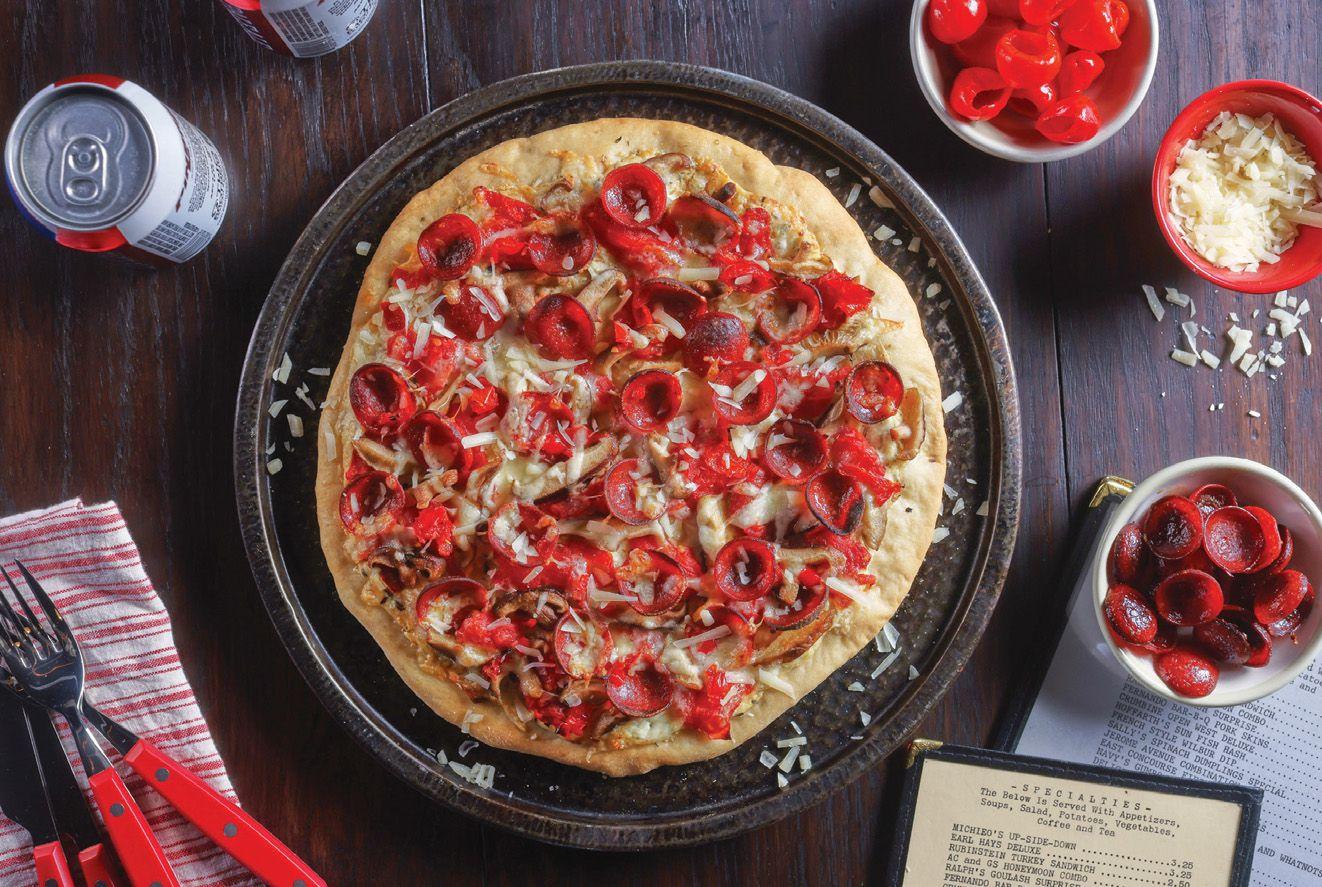
Bar and sister fast casual
Bushi are charting their own respective growth plans.
BY BEN COLEYIN 2010, TOMO TAKAHASHI came to the U.S. with the goal of elevating ramen to the likes of hamburgers and pizza.
The dream became reality through the domestic debut of Jinya Ramen Bar in Studio City, California. The brand has since expanded to roughly 40 locations across more than a dozen states and Washington, D.C.
During that growth, the company ensured ramen and the rest of the menu were as accessible to the everyday consumer as possible. So when a Jinya Ramen Bar faced difficulties in 2018 due to a smaller kitchen space, the restaurant simply adapted to a condensed fast-casual version called Bushi by Jinya.
And when an unprecedented global pandemic shut down dining rooms nationwide, the brand pivoted even further by transforming Bushi into an off-premises-only format. As of January, the concept had California locations in Glendora and Westwood.
“As we fought to adapt to consumer needs and industry trends, the crisis ended up being the nudge we needed to reinvent our concept while still holding true to our vision of serving bold Japanese flavors to more of the world,” Takahashi told QSR magazine in October.
Twelve years after Takahashi planted his first restaurant flag in the U.S., the industry innovator now has two concepts primed for franchise growth, both in full service and fast casual. The pair
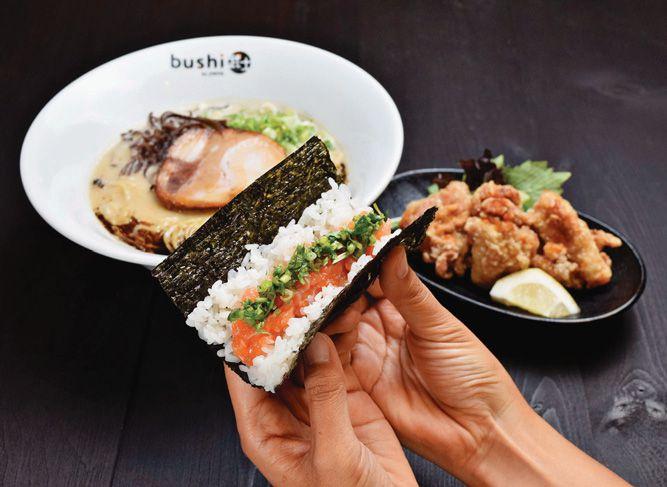
FOUNDERS: Tomo Takahashi
HEADQUARTERS: Burbank, CA
YEAR STARTED: 2010
ANNUAL SALES: $110 million+
TOTAL UNITS: 46
FRANCHISED UNITS: 42
fall under parent company Jinya Holdings, which also owns Robata Jinya and Jinya Ramen Express.
Mike LaRue, vice president of franchise sales, says many developers think Jinya prefers markets that skew Asian, but that’s far from the case.
“When [ Takahashi] came here, his whole idea was to obviously introduce ramen—the way it’s done in Japan— to the United States, but doing so in a manner that attracts more of the American demographic,” LaRue says.
While Jinya Ramen Bar is more about ramen, small plates, and craft beer, Bushi focuses on ramen, karaage ( Japanese fried chicken), and hand rolls. Both
brands have also inserted plant-based items onto their menus via Impossible Foods, with offerings like the Impossible Rice Bowl, which features meat made from plants, crispy chickpeas, kale, pickled red cabbage, crispy garlic, and roasted pine nuts over steamed rice with vegan curry ranch dressing.
The technological differences are notable, as well. Jinya Ramen Bar, which offers a more traditional, dine-in experience, didn’t have online ordering at every location prior to the pandemic.
In comparison, Bushi is built with QR ordering and will eventually incorporate self-ordering kiosks, all in an effort to leverage less labor. The idea is that someone would float between the kitchen and front counter instead of standing at the cash register.
“[Takahashi] just was thinking ahead with the pandemic and everything else,” says marketing director Justin Bartek. “We want to make it as easy as possible. Then with our
THE RESTAURANT INDUSTRY has always been something of a rollercoaster for operators, but that’s never been more true than the past couple of years. It’s been challenging for restaurants across all sectors to find ways to produce consistent, quality dishes despite labor, supply, and inflation issues. Gills Onions can appreciate just how unpredictable the restaurant industry can be. As a 39-year-old soil-to-table onion-growing operation, the company has seen a lot over the years. When brothers Steve and David Gill founded Rio Farms—now the growing operation that supports Gills Onions—in Oxnard, California in 1983, they couldn’t have known that they would soon become the largest fresh-cut onion processor in the country. It happened by accident, really, when a company that made salsa asked if the Gills could take care of whole-peeling the product for them. The Gills added processing capabilities and later, due to surging demand from
the restaurant industry for labor-saving solutions, they began their journey as a foodservice vendor.





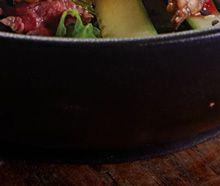

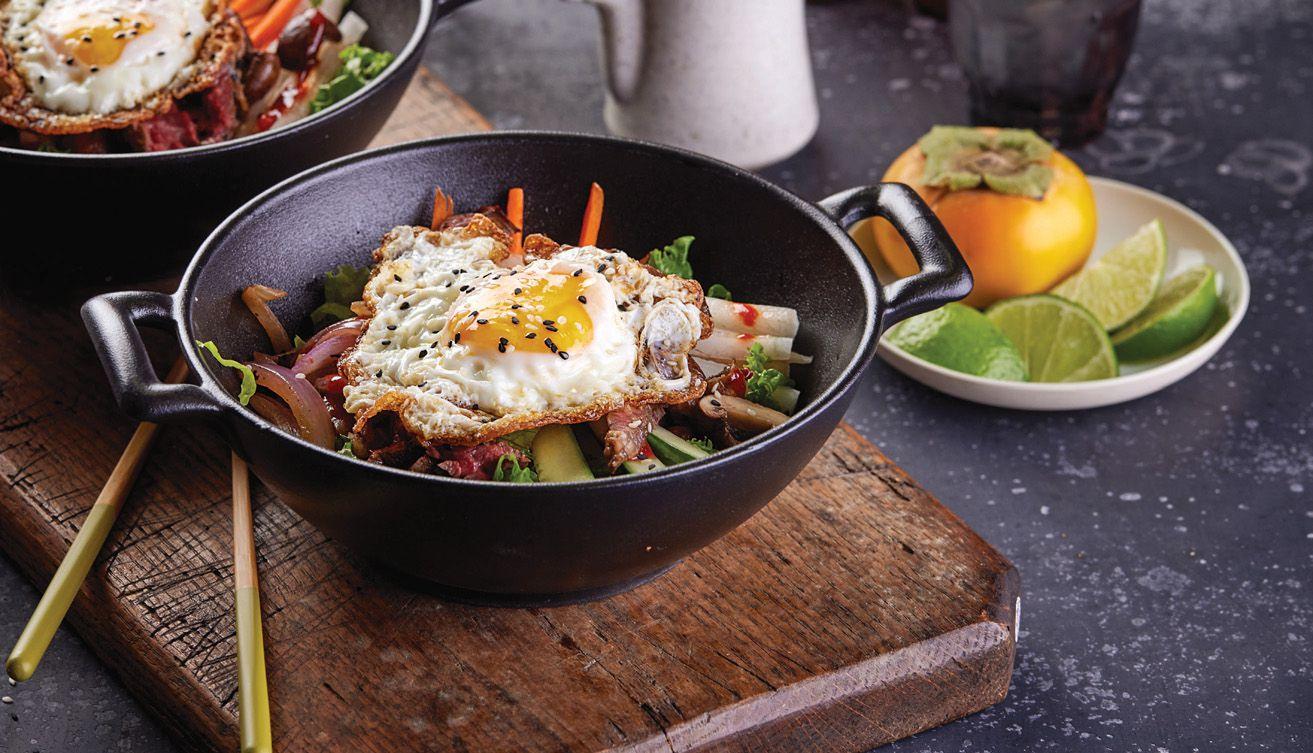
Now, Gills Onions offers value-added products—whole-peeled onions, with various options for diced or chopped onions in different thicknesses—that are as useful as ever. Pivotally, restaurants can save 90 minutes peeling and dicing onions per 50-pound sack. But there’s more nuance to this, says Megan Jacobsen, vice president of sales and marketing for Gills Onions, who happily reports that the labor savings are just the beginning of the ROI when restaurants make the switch to Gills Onions.
“Having less skilled labor in your kitchen means a task like peeling and chopping onions can be especially time consuming,” Jacobsen says. “It also means that employees are more prone to injuring themselves. So when we talk




about the ROI from our value-added products, we tell restaurants there’s a lot to consider, including reduced worker comp claims.”



Another area where Gills Onions
offers an ROI edge over its competitors is with an 18-day shelf life. There’s a science behind this—always looking to innovate in order to offer the freshest, most high-quality end product, Gills has reduced the nitrogen in its soil by nearly 50 percent over the years. Th is helps create a dry onion ideal for restaurants—it keeps the product fresh and nutritious, explains Jacobsen, while extending the shelf life.
“Our company is super passionate about soil health and creating a truly sustainable product,” Jacobsen says. “Th at all starts with soil, and our product is healthier, better for the environment, and simply a higher quality product overall.”
Gills Onions also offers its customers what it refers to as “100 percent full traceability.” There’s a code on each box or bag of onions that Gills sells to its customers that shows everywhere those onions have been since the day the seed was put into the ground. Th is gives operators a piece of mind when it comes to food safety, and is another area where Gills is helping operators run their restaurants more efficiently—and safely—in the face of myriad challenges.
“We are passionate about helping address a lot of these things that tend to keep people up at night,” Jacobsen says. “Being the answer to some of those problems is something we really care about.”
For more on adding whole peeled onions, visit GillsOnions.com.
Cutting out 90 minutes of labor per box is just the beginning. BY CHARLIE POGACAR
At Gills, we’re committed to a superior onion. It’s all we do, so we have a distinct advantage. Raised from seed to harvest by our experts, our onions are processed in our own facility and fully traceable. They also come to you whole or peeled and pre-cut to save your kitchen time and labor. Any way you slice it, we come out ahead.











THROUGHOUT THE YEARS, progress has stalled on the restaurant diversity front. To date, only 8 percent of restaurants are owned by Black people. It’s a figure that inspires the Multicultural Foodservice & Hospitality Alliance’s Pathways to Black Franchise Ownership program alongside 4thMVMT and PepsiCo.
Pathways aims to create 100 Blackowned franchise restaurants by the end of 2023, aided by a $2.5 million commitment from PepsiCo over the next five years. Two major restaurant companies, Noodles & Company and WOWorks ( parent of Saladworks and Frutta Bowls) have joined the charge.

Since WOWorks’ formation, strong core values have been at the heart of the company, says CEO Kelly Roddy.
“If you want to have strong results, you obviously got to have good brands with good food and all that stuff, but you have to build a great culture,” Roddy says. “Part of building that culture is putting core values in place.”
Pathways presented an opportunity for WOWorks to accomplish another goal as well: eliminating the food deserts in the company’s core markets.
Two of those, Philadelphia and New Jersey, have long lacked healthy,
affordable food for residents in select areas. According to the USDA, nearly 39.5 million people, or 12.8 percent of the U.S. population, were living in low-income and low-access areas. It’s estimated 19 million people had limited access to a grocery store.
In turn, the Pathways to Black Franchise Ownership program presents a way to continue bringing nutritious food to these areas, Roddy says.
“Our belief is, we should have diverse owners running these restaurants,” Roddy says. “It’s a win-win. You’re creating business opportunities for people in these communities. You’re also creating options for healthy food.”
Noodles & Company likewise joined
the Pathways program due to its own people-centric core values, says CFO Carl Lukach. Over the years, Noodles & Company formalized its diversity and inclusion initiatives, creating an impact report and a special council alongside taking a CEO pledge to boost diversity.
Women now comprise 56 percent of the Noodles’ operations team, as well as 50 percent of its executive team, and the company invested $7.6 million in new team member benefits since the onset of COVID-19.
The Pathways program was a natural extension of Noodles’ company goals, Lukach says. Additionally, the program encourages a longer perspective than just
Noodles & Company and WOWorks hope to help create 100 new Black-owned franchise restaurants by 2023.
MARCH 2022 // Specialty Cheeses ADOBE
SPECIALTY CHEESES ADD ELEVATION TO MENUS ACROSS DIFFERENT DAYPARTS.
How specialty cheeses are sparking creativity in the face of various headwinds.
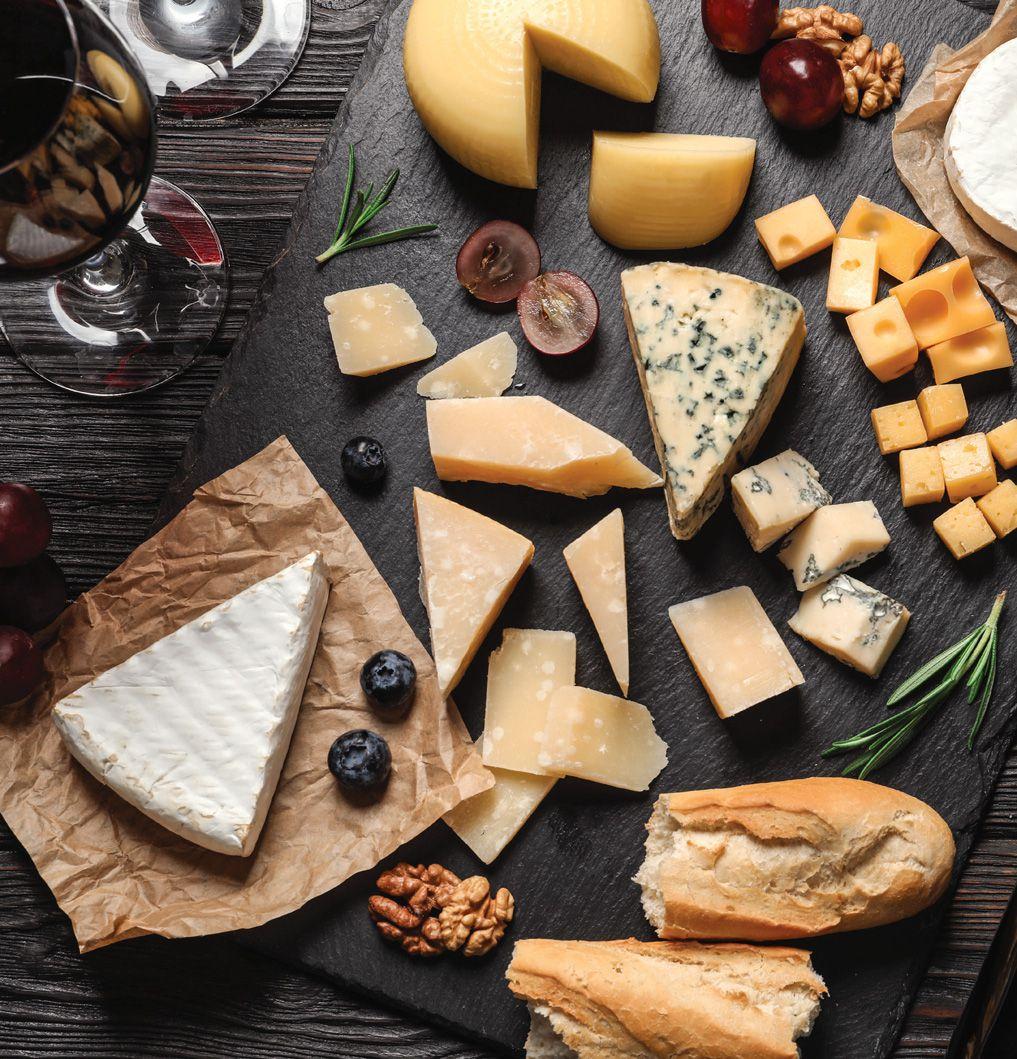 BY CHARLIE POGACAR
BY CHARLIE POGACAR
STORY // 38
A Chef’s Best Friend
DATA // 42
By the Numbers
Being a chef is as challenging as it’s ever been, with persistent labor woes and supply chain infl ation causing headaches across the industry. But chefs tend to be a resilient bunch.
“So many of us became chefs because we really love being creative,” says Ian Ramirez, director of culinary and operations for Creative Dining Services. “We’re working hard on getting back to our roots in terms of doing what we love,
and that’s creating fl avor-forward menu items.”
Aiding in the journey to stay innovative in the face of ongoing challenges are versatile, easy-to-use ingredients that boast distinct fl avor, helping chefs tap into their creative side.

Enter: specialty cheeses. Chef Amy Miller, senior director of culinary innovation at Miller’s Ale House, defi nes specialty cheese as “something that doesn’t
come in an 8-ounce bag at the grocery store.” Ramirez adds that specialty cheeses tend to be something that has some type of fl avor or prep that’s taken place prior to packaging.
Many specialty cheeses have brand recognition that commands the attention of diners, helping menu items stand out. “Even just the names of specialty cheeses give consumers the sense of elevated offerings,” Ramirez says.

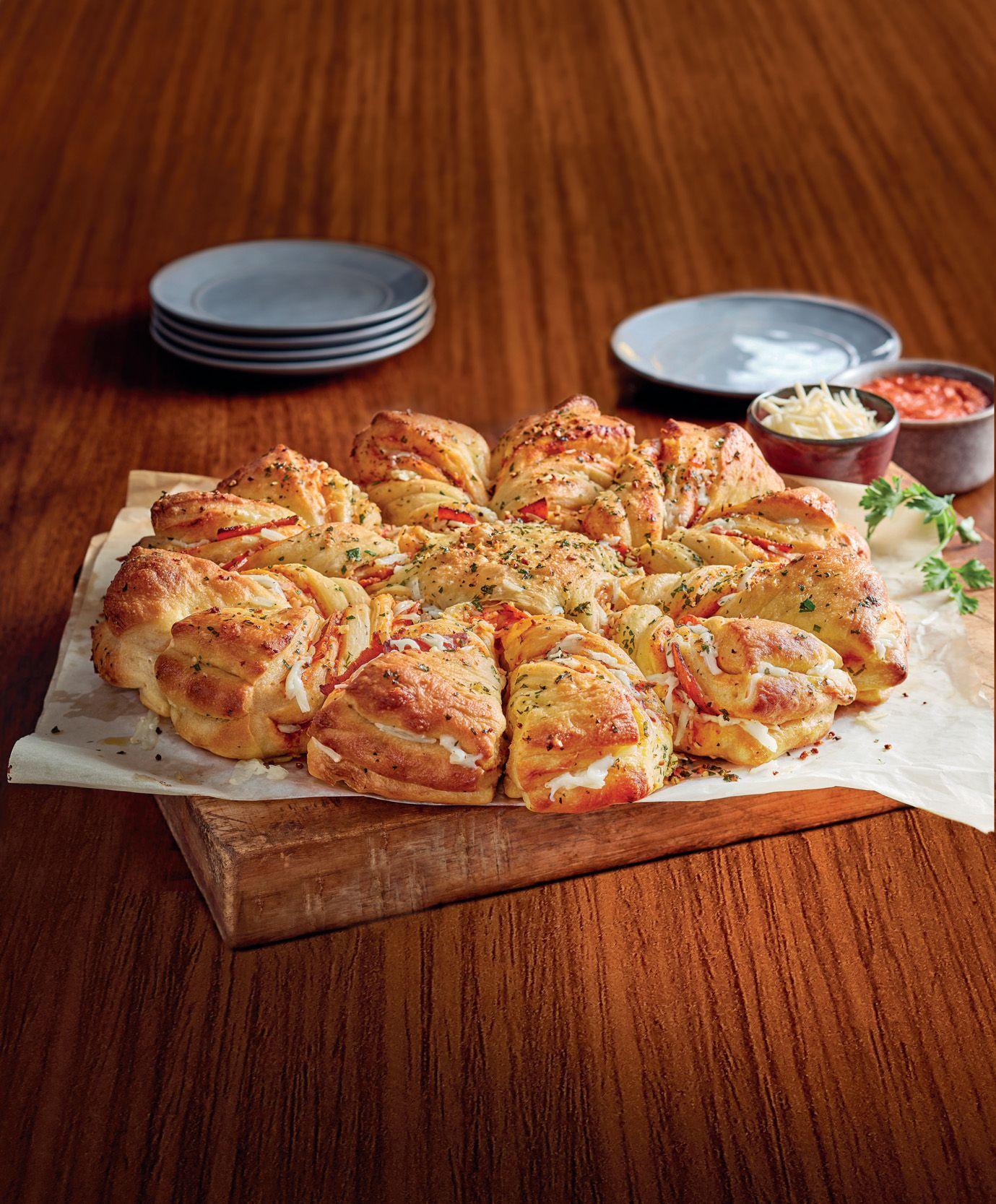










In that way, specialty cheeses can increase an operation’s profitability by adding perceived value to different menu items.
“A specialty cheese can end up actually lowering my food costs because I can get more of a margin out of it,” Smith says.
tomatoes, I can charge, say, $6 more than if it were just plain chicken breast, but I only had to add a fraction of that in food costs.”
As the senior brand manager at Bel Brands USA , Katie Driscoll is an expert when it comes to specialty cheeses. Driscoll’s team at Bel Brands USA— makers of iconic cheeses like Boursin, Price*s, and Merkts—has recognized the role that specialty cheeses can play in creating great dishes despite ongoing challenges. It’s why the company offers chef-friendly versions of its entire lineup of cheeses.
For example, Bel Brands USA has reimagined how it packages and supplies fan-favorite Boursin, which according to Datassential appears on 1.3 percent of U.S. menus. Chefs can now order 2-pound buckets of Boursin, as well as IQF Boursin Frozen Gournay cubes that tizer, or put on top of a salad.
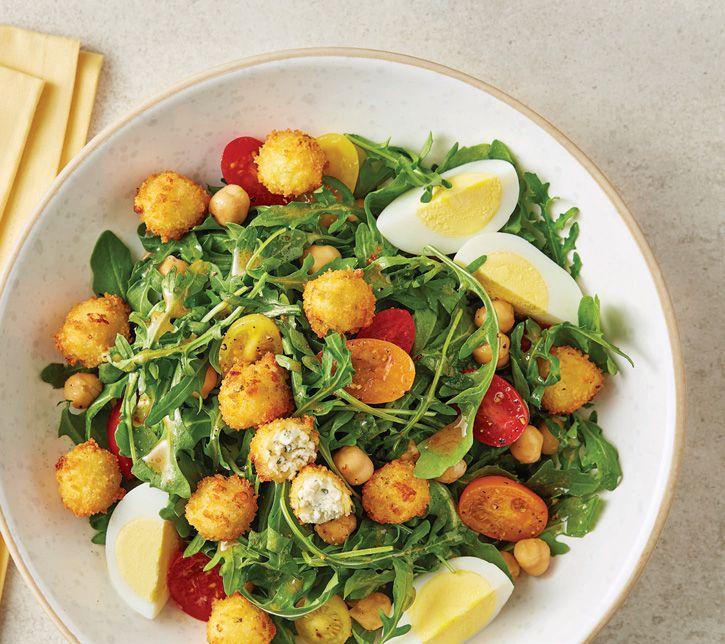
“We have listened to chefs who like using our cheeses and taken that feedback to create solutions that minimize labor and prep time,” Driscoll says. “We’ve also invested a lot into a chef council to increase the amount of culinary resources we have available to chefs.”
Another cheese that Bel Brands USA has focused on making convenient to chefs across the industry is Price*s pimiento cheese. Making pimiento in house can be time-consuming, and Price*s is a scratch-quality solution for chefs.
Having been a Southern staple for years, pimiento has started appearing on industry menus across the country of late, having grown 9 percent across four years, according to Datassential, and now appearing on 3.3 percent of menus.
Originating in the Midwest, beer cheese is similarly a versatile regional cheese that has begun to achieve national recognition, thanks at least in part to the iconic Merkts beer cheese, which is also now available in foodservice-sized tubs. According to Datssential, beer cheese has grown on menus by 56 percent over the past four years.
“If you’re from the midwest, you know Merkts,” Driscoll says. “It’s such a good product to help chefs create menu items that stand out—one of our fantastic partners has been Smashburger, which recently rolled out its second LTO using Merkts.”
But perhaps the trendiest specialty “cheese” of all is plant-based cheese, which has grown 82 percent over the past four years, according to Datassential, and now appears on 4.5 percent of industry menus. The undeniable momentum of plant-based products is why Bel Brands USA recently launched Nurishh, its line of plant-based cheese.
“Plant-based cheese has come so far,” Ramirez says. “Nurishh is fantastic compared to some of the vegan cheeses that used to be around. I find it interesting when people say plant-based cheese is just a fad—it’s been around for well over 20 years. It’s only gotten better, and it’s not just for vegans—this is in response to the people who want to replace cheese for whatever reason.”
Nurishh is yet another option for chefs looking to innovate, as it’s easily used in a host of applications, from burgers, to casseroles, to pizzas.
“We know it’s such a challenging environment right now,” Driscoll says. “But Nurishh is an example of a place where we identified what the market needs, and we have dedicated ourselves to making sure it works for operators. We want to make sure we’re continuing to provide that value for chefs and operators in everything we do.”
“A specialty cheese can end up actually lowering my food costs because I can get more of a margin out of it.”
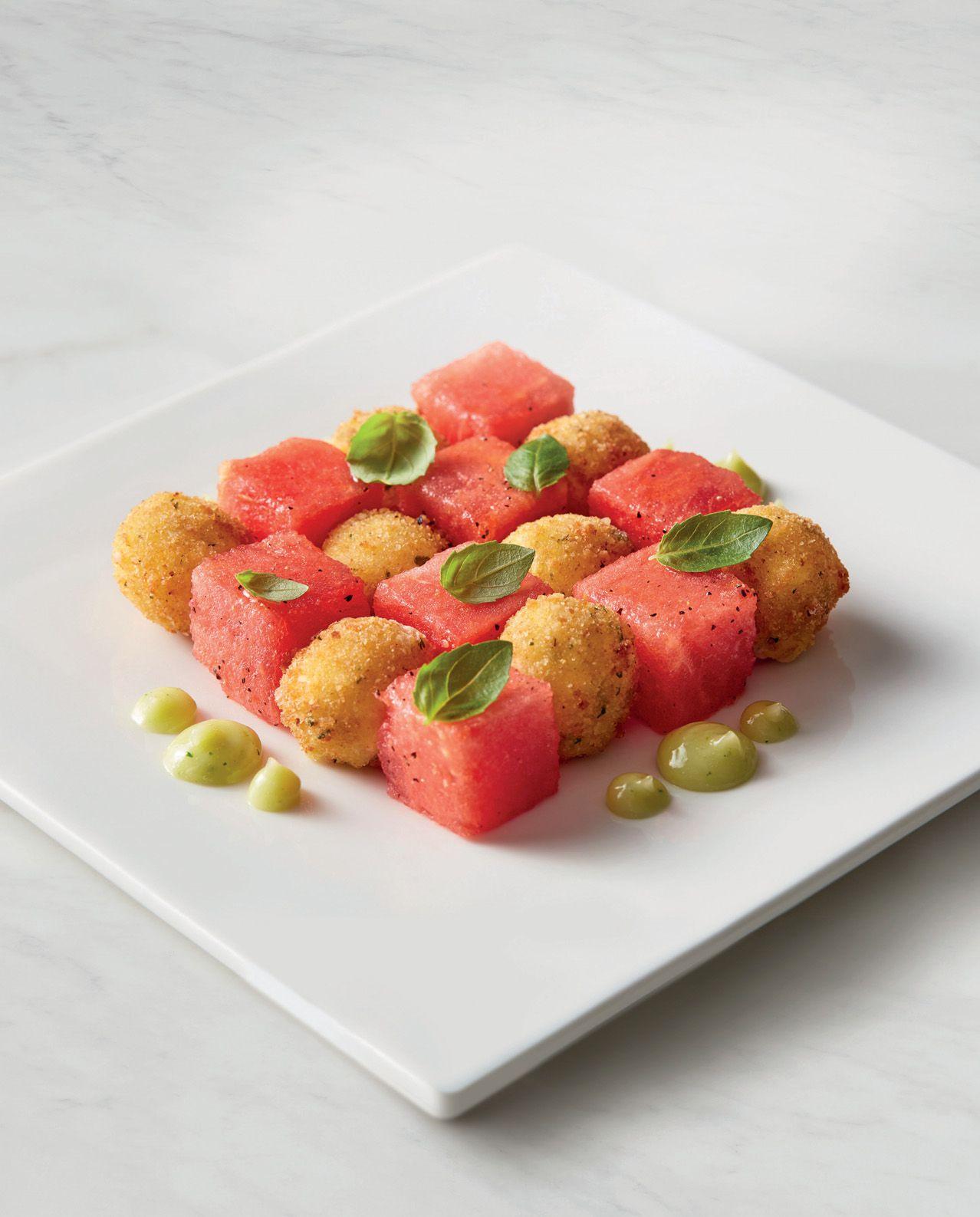



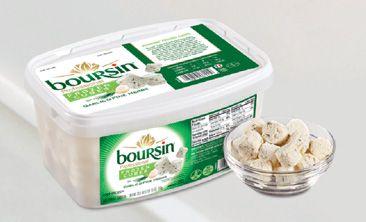








• The growth in the cheese space underscores two major food trends: the rapid rise in plant-based alternatives and a growing desire for Latin foods, like tacos, nachos, and chilaquiles.
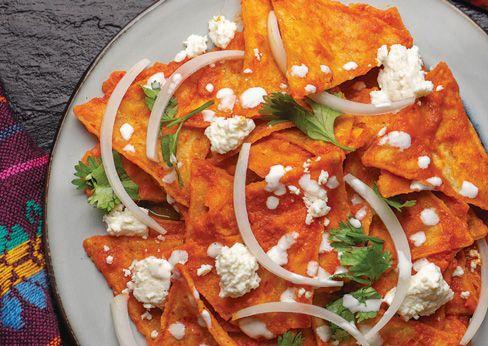
• Three of the top seven fastest-growing cheese varieties are Mexican, driven by a growing interest in Mexican and Latin foods, an increased demand for authenticity and premium offerings, and the fact that cheese is essential in so many of the fastest-growing Mexican dishes, like street tacos.
• The fact that Mexican cheese varieties are trending isn’t surprising when considering that the top two fastest-growing cuisines are Asian and Mexican, and Asian food doesn’t use a lot of cheese.


VEGAN/PLANT-BASED CHEESE Plant-based menu items have increased by nearly 2,800 percent in the last four years, led by vegan alternatives of classic American foods, like the burger. And as more diners experiment with veganism, if only for some meals, demand for plant-based cheese has grown as well.
CONSUMERS
MENU EXAMPLE:
Vegan Cheese Pizza: Daiya vegan cheese, oregano, tomato sauce.
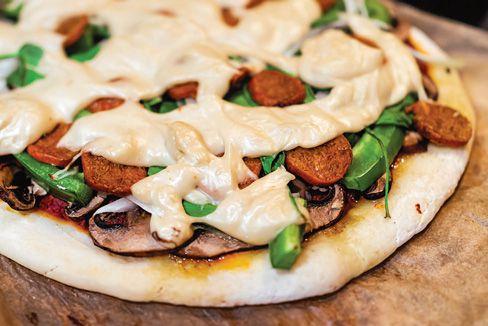
Extreme Pizza // CA/ VA, MULTIPLE LOCATIONS
COTIJA Cotija cheese derives its name from a municipality located in the Mexican state of Michoacán. Beloved for its crumbly texture similar to feta, it has versatility while also providing authenticity to a variety of Mexican dishes.
CONSUMERS KnowItHaveTriedIt 28%18%
MENU EXAMPLE:

Chilaquiles & Eggs: chorizo, avocado, cotija topped with salsa verde Colonial Cafe // NAPERVILLE/


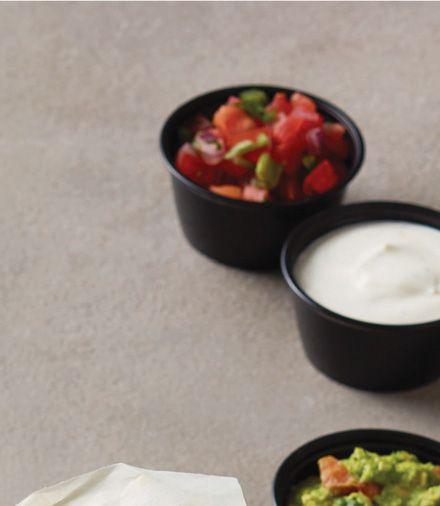

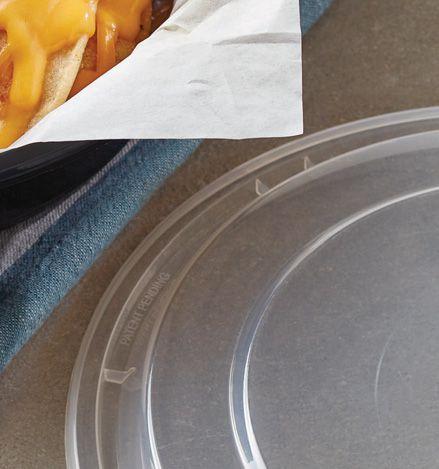




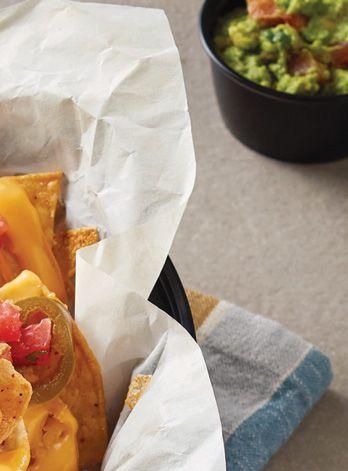


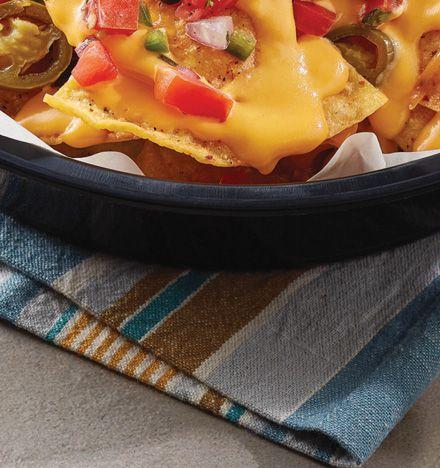






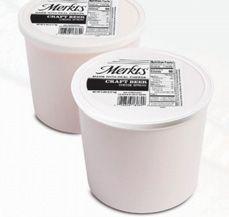




BEER CHEESE cheese as a dip, soup, or incorporated into premium
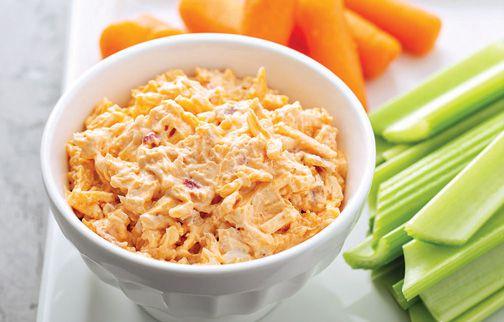
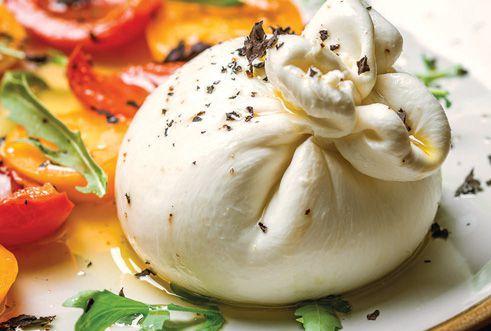
CONSUMERS
rant foods from the comfort of the couch.
CONSUMERS
KnowItHaveTriedIt
43%25%
MENU EXAMPLE:
Beer Cheese Soup
94th Aero Squadron Restaurant // MULTIPLE LOCATIONS
KnowItHaveTriedIt 28%18%
MENU EXAMPLE: Chilaquiles Con Pollo y Huevos: corn tortilla, chicken,

MENU ADOPTION CYCLE: SPECIALTY CHEESE INCEPTION presentation.
ADOPTION erally authentic ingredients.
PROLIFERATION
found across all sectors of the food industry.

As consumers come out of COVID, where is the plant-based meat movement heading?
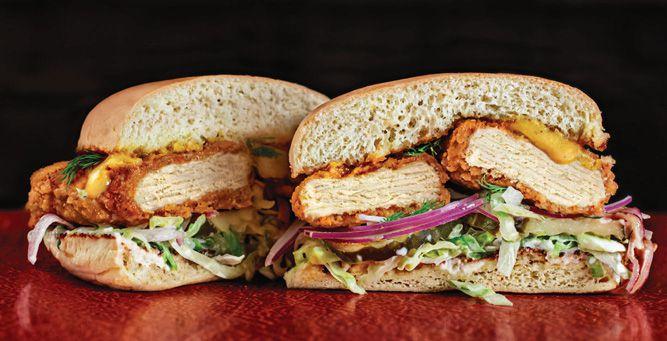 BY SUZANNE BLAKE
BY SUZANNE BLAKE
THE PANDEMIC DISRUPTED much of consumer behavior, but the tide was already turning with meat alternatives.
Even more so today than preCOVID-19, health and sustainability are top of mind for diners, says Tim Smith, Beyond Meat’s vice president of foodservice North America. As consumers become more aware of the health and environmental implications of their food choices, they are looking closer at concerns associated with animal protein.
“We believe there is a better way to feed our future and that the small everyday choices made by individuals, such as shifting the protein at the center of the plate to plant-based meat, can have a great impact on our personal health and the health of our planet,” Smith says.
In 2019 and 2020, plant protein grew at an explosive pace, consistently in double digits, year-over-year.
According to the Good Food Institute, the retail market for plant-based foods is worth $7 billion, and plant-based sales jumped 27 percent in the past year.
The reasons why don’t appear shortterm: Plant-based meat alternatives present a lower environmental footprint and an attempt to catch up with competitors. In quick service, this could mean capturing some of the market share of fast casuals.
McDonald’s, A&W, Burger King, Carl’s Jr, Wendy’s, Subway, and Nathan’s Famous all either launched or are currently testing plant-based meat alternatives. The menu items can be a strong indicator of brands that will walk the talk of environmental sustainability. Even throughout COVID, when comfort food reigned supreme, Smith says Beyond Meat witnessed consistent progress in household penetration and repeat rates of sales. The Beyond Burger is perhaps the company’s most notable contribution to the movement.
Likewise, Incogmeato, Lightlife, and Impossible Foods are seeing a steady flow of repeat customers and restaurant operator interest.
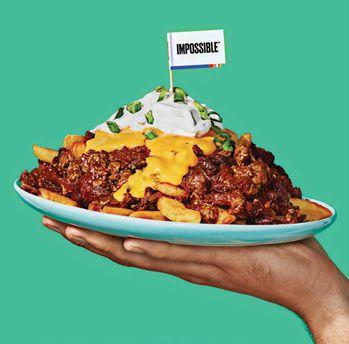
Impossible Foods grew from being in nearly 150 grocery stores at the start of the pandemic to more than 22,000 today. The brand is also sold at close to 40,000 restaurants and counting and did not slow down last year. Dennis Woodside, Impossible Foods’ president, says the company experienced an 85 percent growth spike in quarterly retail revenue, a tripling
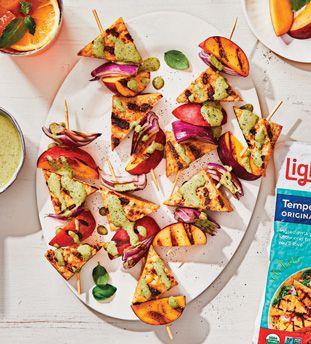
 BY PEGGY CAROUTHERS
BY PEGGY CAROUTHERS
AMID THE OUTSET OF THE COVID-19 PANDEMIC IN 2020, restaurant leaders were faced with an onslaught of developing health and safety guidelines—as well as the sudden, astronomical growth of off-premises dining. This forced them to become laser focused on the basics: executing pared down menus well and offering what service they could amid ever-changing restrictions. Consumers, for the most part, were patient as brands worked out the challenges in their operations; however, since the summer of 2021, many consumers have returned to dining rooms and outdoor on-premises spaces. Now, with the re-emergence of on-premises dining, diners crave a return to the elevated brand experiences they enjoyed prior to the pandemic.
However, providing an elevated guest experience is not as simple for






















labor-strapped restaurants as it was in 2019, yet failing to deliver on any single detail of the dining experience—even something so simple as the stability of the tables in the dining room—can make or break a customer’s visit and alter their perception of a brand for years to come.
Take, for example, this experience all diners are familiar with: They (or a member of the wait staff in a full-service restaurant) carry a
tray of hot food and cold drinks to a table, only to place it down on a table that rocks, which dumps the food and beverages they’ve
worse, on the diners. Not only do wet, dirty clothes create discomfort for diners, but spilling the food and beverages also disappoints hungry patrons who, in thinking back on their visit to the restaurant, remember only this negative impression.
While the situation seems simple, the stakes for restaurants are high. A recent survey conducted by YouGov for FLAT Tech—a company that stabilizes tables for major brands in the hospitality industry world-wide—found that 56 percent of Americans would reconsider returning to a restaurant where their experience had been ruined by a wobbly tables. Furthermore, if that statistic is not frightening enough, each bad experience a diner has at a restaurant is another chance for a negative social media review, which can lead to more lost business and brand damage.
This is exactly the issue Tony Pike, founder of FLAT Tech, set out to solve in 2004.
“Our founder, Tony, was in a cafe in Sydney, Australia, in 2004, and his friend, who owned the restaurant,

surface had caused Tony’s coffee to spill,” says Barry Mancell, CEO of FLAT Tech. “The friend looked up at Tony and said, ‘I need a permanent
Pike, spent the next few years developing the technology that became FLAT®, including the brand’s Patented Actuator Device (PAD), which sits underneath a huge range of FLAT® Table Bases that instantly adjust and stabilize on
uneven surfaces. Not only does FLAT’s technology help restaurants stabilize tables to help bolster the guest experience and prevent spills, but it also gives restaurants more
Today, FLAT has expanded its product line to better serve the needs of operators at some of the biggest restaurant, brands, hotel, and casinos in the world.
When the pandemic necessitated brands add more space between tables for indoor dining or that they expand their outdoor dining options, tables equipped with FLAT’s technology could be placed anywhere, including on an uneven


cally be avoided in a parking lot or on an outdoor patio.
Additionally, Mancell says tables
and align. Meaning that when staff bring tables together for a large party, FLAT’s technologies can help eliminate that annoying ‘lip’ that’s created where the tables join.
“Usually for large gatherings, restaurants have to push tables together to accommodate the group, and there is usually a lip caused by the surface of the tables not aligning,” Mancell says. “Not only do items fall off the lip, but this also prevents restaurants from using tablecloths or using that space for plates or other items, causing more crowding at the table.”
While staff members often try to compensate for wobbly and misaligned tables by propping them up them with sugar packets, napkins or coasters, this is not a longterm solution and will need to be repeated every time the table moves. Additionally, at a time when consumers are paying more atten-
tion than ever to sanitation, seeing -
“When wait staff attempt to stagrime, such as the bottom of the Moreover, this work is oftenbetter spent on customer service most severe labor crunches in his-
propping up tables, the number of
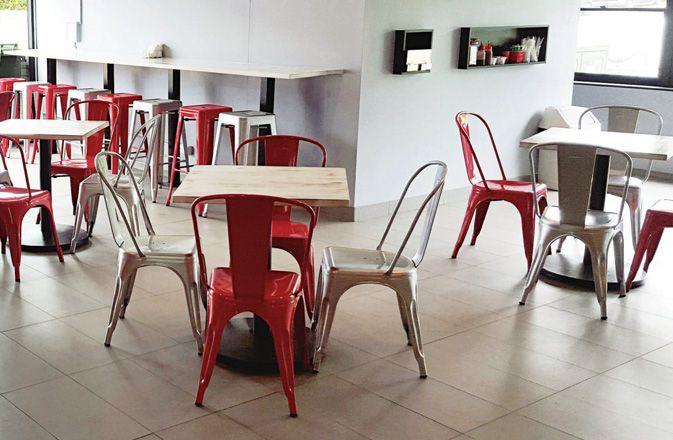
Despite these massive sav®stabilize it with a gentle press on bottom lines, the team has cresuch as their number of tables,-
Visit FlatTech.com to learn more.
“The costliest expense is the lack of repeat business caused by a ruined dining experience and a bad social media review.”


Protect your image with FLAT.® Our selfstabilizing Table Bases eliminate wobbly tables and seamlessly align to make better use of spaces indoors and out. They also come in a variety of colors and styles to match any ambiance. Learn more at FlatTech.com or call 855-999-3528.

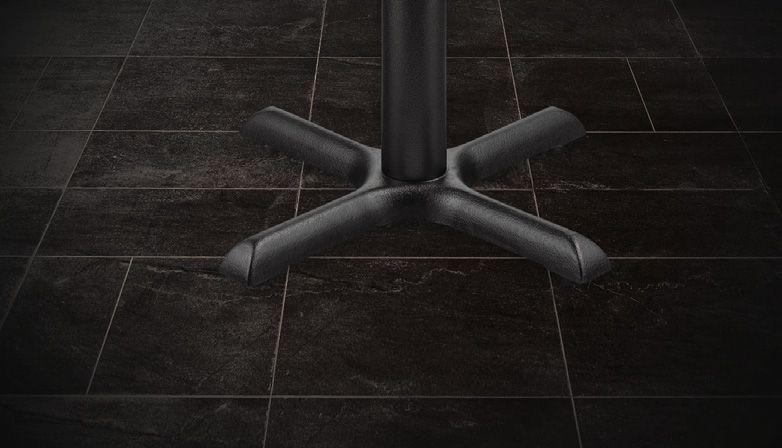
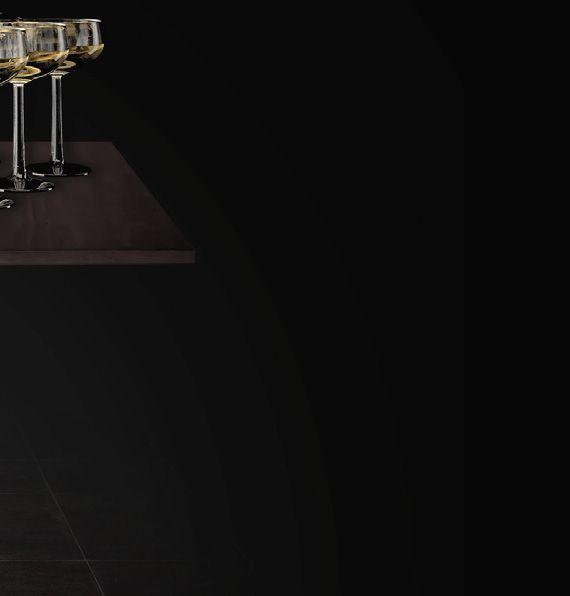





Daniel Boulud may be best known for bringing forth fine-dining establishments that feature classical French cooking, but that reputation doesn’t bar him from embracing the new. In fact, the famed chef and restaurateur makes a point of updating his restaurants every decade or so.

The latest refresh for his flagship, Restaurant Daniel, was originally slated for 2019. But due to long lead times with items like chairs and carpeting, those plans were pushed back—a delay that was soon exacerbated by the pandemic. To get through those months of uncertainty, Boulud, who
has won multiple James Beard Awards and been inducted into the Culinary Hall of Fame, introduced new business models and updated existing ones. Some of these measures were temporary, but others, like a subtle shift in mindset, endured. Already the chef was leaning toward a more casual atmosphere, and the dining restrictions from COVID validated that decision.
He remains committed to fine dining, albeit an updated vision of the category.
“Fine dining was associated with pretension and, I would say, maybe attitude. That’s not at all what it is today. Fine
THE CELEBRATED CHEF AND RESTAURATEUR USES LESSONS FROM THE PANDEMIC TO CHART A NEW COURSE FOR HIS CONCEPTS AND THE FINE-DINING CATEGORY.OVER THE YEARS, DANIEL BOULUD HAS BUILT THE DINEX GROUP PORTFOLIO, WITH CONCEPTS RANGING FROM FINE DINING TO CASUAL CAFES.
dining is really about the connection people have with our staff, how relaxed people feel in an environment where we are there to pamper them,” Boulud says. “And people craved that. During COVID, they couldn’t have access to that, and I think life was not the same. It feels like a real celebration to go to a fine-dining restaurant again.”
And Boulud has much to celebrate. Despite the challenges of the last two years, his New York–based company, Dinex Group, has moved forward with expansion and innovation. In summer 2020, he launched Daniel Boulud Kitchen, the group’s first non-catering off-premises operation. By fall, he welcomed guests back to Restaurant Daniel with an outdoor pop-up ideally suited for socially distanced dining. The following May, Le Pavillon, a project five years in the making, debuted in Midtown Manhattan. And then in late September 2021, a renovated Restaurant Daniel unveiled its refreshed environs.
This year, Dinex still has plenty of irons in the fire. Boulud has partnered with the newly branded Mandarin Oriental Residences in Beverly Hills, California, to open a restaurant on the ground floor and a rooftop bar/lounge. The project is also
reported to include at-home dining experiences for property residents—a service that is likely to benefit from Boulud’s experience building offpremises programs during COVID.
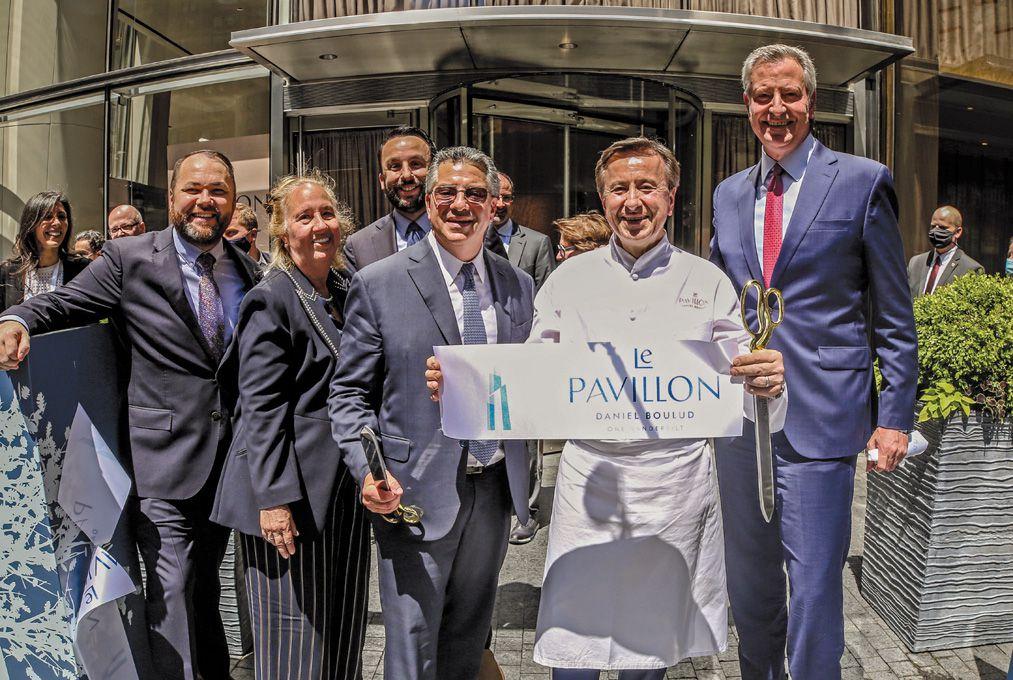
In addition to his first West Coast outpost, the chef is also seabound with Le Voyage by Daniel Boulud, a restaurant aboard the Celebrity Cruise liner Beyond, which is set to embark on its maiden voyage in April. Boulud is also taking over a space in New York’s Financial District, which has remained empty since summer 2020. While the name has yet to be announced, the chef is already committed to showcasing the cuisine of his hometown, Leon, France.
“The one project we have downtown, where Augustine used to be, is going to be a classic French bistro,” he says. “It will be more French classic, which is something I’ve always practiced in my life and on my menus, but I never really did a bistro as such, so that will be fun. I look forward to that, something very Leonese.”
With these high-end restaurants in the pipeline, it’s easy to assume Dinex has eschewed the steady
NEW YORK CITY LEADERS WERE AT HAND FOR LE PAVILLON’S DEBUT LAST MAY: (LEFT TO RIGHT) FORMER COUNCIL SPEAKER COREY JOHNSON, MANHATTAN BOROUGH PRESIDENT GALE BREWER, SL GREEN CEO MARC HOLLIDAY, BOULUD, AND FORMER MAYOR BILL DE BLASIO.
“Fine dining was associated with pretension and, I would say, maybe attitude. That’s not at all what it is today. Fine dining is really about the connection.”

Don’t let supply chain issues slow you down. We are fully stocked and ready to deliver!
6 MODELS TO FIT YOUR KITCHEN!
SAFE COUNTERTOP FRYER OIL DISPOSAL HAS ALWAYS BEEN AN ISSUE—WE ARE YOUR SOLUTION!
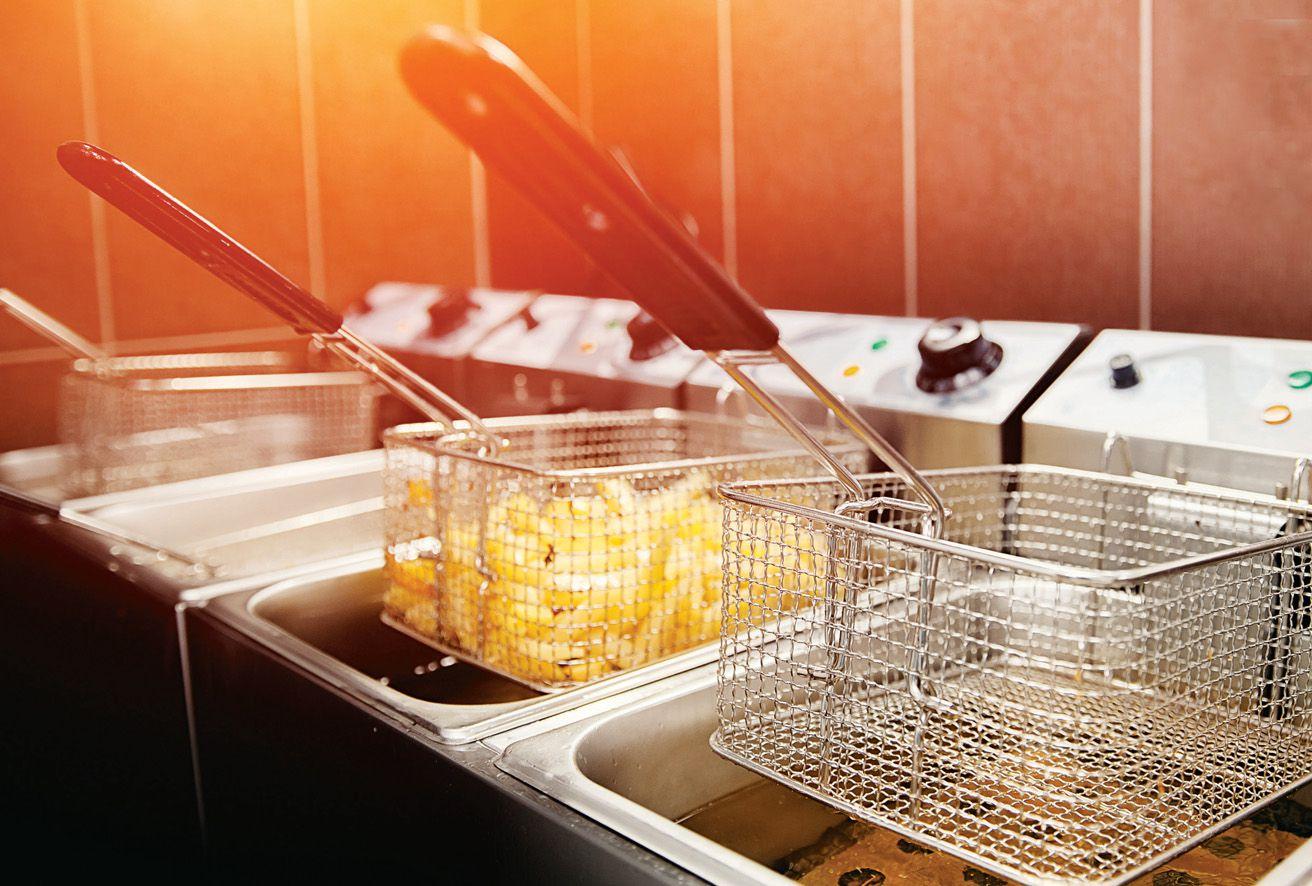
THE ISSUE: Safe fryer oil disposal.
THE SOLUTION: The Shortening Shuttles® allow you to safely and easily transport hot oil to the dumpster.
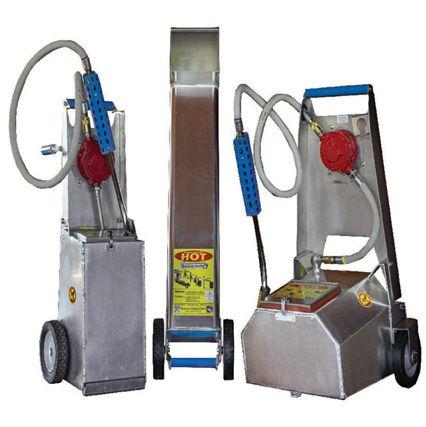

THE ISSUE: Limited space for necessary equipment.
THE SOLUTION: Small foot print of 14" x 19" x 37" tall. Generous capacity of 5.5 gallons. The new SS-645 MINI FITS!
THE ISSUE: Quality. There is so much junk out there folks are reluctant to buy ‘more junk.’
THE SOLUTION: 30+ experienced industry provider of PROVEN quality equipment.
+Menus might be shrinking, but comfort food is sticking around.
Worcester Industrial Products
SAFE WASTE OIL TRANSPORT
migration toward laidback dining—a movement that had started prior to the pandemic and only picked up steam since then. In some ways, it’s true. For the most part, über-casual restaurants are not in the cards for Boulud.
“I think the fine casual is something good for me. I don’t want to go too casual unless I’m creating a [quick-service] type of business, but that’s not the case, except for Épicerie Boulud, which I think is the most approachable and casual,” he says. The market/café has three locations in New York, and Boulud believes there’s still plenty of white space in the city. His other New York concepts include Bar Boulud, DB Bistro Moderne, and Café Boulud, an upscale, but not quite fine-dining, restaurant slated to reopen this year. Dinex also has outposts in other domestic markets, like D.C. and Miami, as well as international ones, including Montreal, Dubai, and Singapore.
And while Boulud might not be charging toward the limited-service segment any time soon, casual elements have seeped into the formula, thanks to pandemic-era operations like Daniel Boulud Kitchen. The new business model was originally born out of another project altogether. Just a month after COVID began, the chef teamed up with Marc Holliday, CEO of SL Green Realty Corp and Boulud’s business partner in Le Pavillon, to found the Food1st Initiative, which brought back restaurant workers across New York to prepare thousands of meals for healthcare workers, first responders, elderly residents, and food-insecure families.
With limited staff in the kitchen, Boulud saw an opportunity to reignite business, at least in some fashion. Customers were regularly calling to ask if the restaurant could prepare meals for
takeout, so the chef decided to do just that, beginning Memorial Day 2020. Like Restaurant Daniel, the off-premises menus regularly changed and included dishes like bouillabaisse, cassoulet, and braised short ribs, among others.
At a time when consumers were relegated to a mix of cooking and takeout, Boulud’s to-go option presented a welcome upgrade. Customers might not be able to revel in the ambiance, but they could still enjoy fare from a storied, TwoMichelin Star institution.
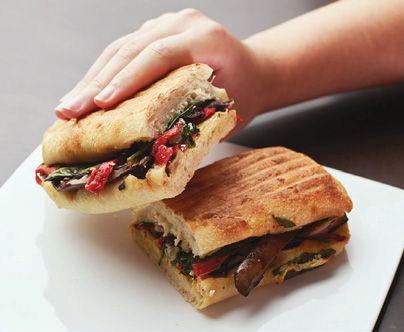
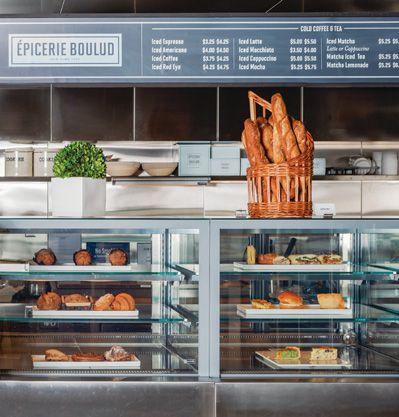
Over the summer, Daniel Boulud Kitchen expanded to the Hamptons, where it would send a truck on weekends with meal kits. The concept also moved onto platforms like Caviar and Grubhub.
“Suddenly we ended up with boxes everywhere, and we became a cooking-and-packing operation, which was not really in line with what Restaurant Daniel was meant to be,” Boulud says. “At the same time, we had a lot of fun making amazing dishes, and we didn’t care about being the cheapest. We cared about being the best.”

“Suddenly we ended up with boxes everywhere, and we became a cookingand-packing operation, which was not really in line with what Restaurant Daniel was meant to be.”


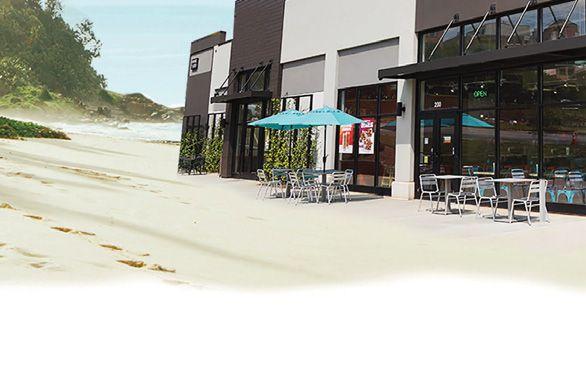





















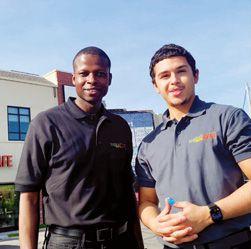
Daniel Boulud Kitchen eventually moved onto Goldbelly where meal kits, macarons, and more are still available for nationwide delivery. But once restrictions eased to permit 25 percent capacity, Boulud eagerly turned his attention back to the dine-in experience. Given the months of lockdown, he wanted the restaurant to be an escape of sorts, and thus began Boulud Sur Mer.
Designed to evoke the coast of southern France, the pop-up encompassed the inside of Restaurant Daniel as well as its long sidewalk. Boulud worked with architect Stephanie Goto to add greenery and ocean-blue screens for a stylishly distanced interior.

“We needed to break the expectations and take people to a different setting. So that’s what [Goto] successfully did inside,” Boulud says. “The vegetation, trees, and screens really helped make people feel very safe and comfortable.”
The chef adds that his gravitation to “go more green” started while building Le Pavillon, where half the venue is a garden and the other half a 120-seat restaurant.
But for all these flourishes, the real departure from the norm was the exterior of Restaurant
Daniel where private bungalows were constructed for intimate and secluded dining. Though they sported beachy pink-and-white stripes, the bungalows stayed up through the winter months, thanks to heaters and closable curtains.
“We were trying to create a fine-dining experience in a very casual setting, and that worked out very well. I think that kind of helped us,” Boulud says. It should be noted that even though the chef describes his pop-up as more laidback, it still utilized luxury materials, including Hermes wallpaper, Emeco chairs, and Perennials fabrics.
This seemingly disparate dynamic—luxurious yet casual, refined yet relaxed—works for Boulud and his restaurants. To him, casual doesn’t mean muting the elegance but rather making the environment more comfortable for both guests and staff members.
Servers shed their typical black blazers and dress shoes in favor of sweaters and Converse hightops. The menu was pared down for a smoother back-of-house operation, and prices were also, accordingly, reduced.
“We needed to relax ourselves with the idea of staying open during the pandemic. I think it helped everyone else relax, [too],” Boulud says.
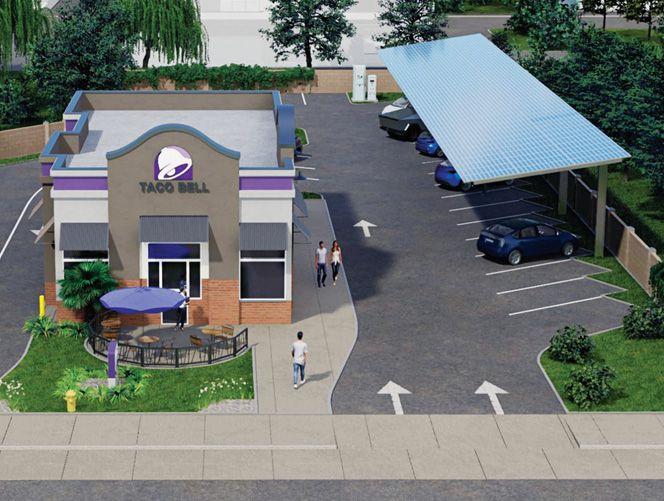
THE PANDEMIC RAPIDLY ACCELERATED consumers’ comfort with mobile ordering and consumer-facing technology. At the same time, investment in electric vehicles ( s) and the infrastructure needed to make
As more people purchase EVs, they’ll need spaces to charge them. Charging providers partnering with quick-serve
everyone involved. Here, SG Ellison, presioperates over 300 Taco Bell and Arby’s restaurants) shares why his company partnered with ChargeNet Stations to bring rapid EV charging stations to the restaurant industry.
Drivers can quickly and easily pull off, charge the car, and enjoy a meal at the same time—it’s all about the convenience factor.
In addition, we are exploring the ability for ChargeNet Stations’ App to integrate with a restaurant brand’s app or point-ofsale ( ) system. This will allow operators to gain operational insights and also customize and target offers to those same EV drivers.
ChargeNet Stations offers an opportunity to put that space to use at no risk to us. As a bonus, we’re helping the environment. We are accommodating EVs, which reduce fossil fuels, and, using solar we are using clean energy to charge clean energy. We’ll be able to run part of the store off that clean energy and receive reduced energy costs from the utility company. Whatever we don’t use, goes back into the utility grid, completing the sustainability circle. We’re also exploring partnerships with third-party delivery services who are
our restaurants.
order points, customers don’t have to stand in long lines to order their food, which reduces staff anxiety and makes interactions in the restaurant less stressful. This means more effort and care preparing the food, ensuring orders are accurate, or cleaning the restaurant. Additionally, we know our team members appreciate working for a company that does good for the community.
ChargeNet Stations’ business model incorporates everything you need to get the project done. They handle the development, engineering, construction, and software. Our initial investment thus far has been our time, working with ChargeNet CEO Tosh Dutt and the team to ensure we are implementing the best system possible. We’re
With the increase in mobile and pickup orders, our larger parking lots are underused.
In everything we do, we look for how an initiative can improve the team member (employee) experience. With more digital
expect in energy savings and credits, brand image, and industry innovation.
“We really enjoyed seeing our regular customers back. And we were also welcoming a new generation of customers. We saw that a lot during the pandemic because not too many fine-dining restaurants were open.”
The pop-up has since given way to a new take on Restaurant Daniel, just as the iconic restau-
opened the door for chef Eddy Leroux, a near 20-year veteran of Dinex, to assume Bruel’s former role. The menu remains firmly rooted in French cuisine and cooking techniques, and dishes still adhere to hyper-seasonality, rotating about every two months. Nevertheless, the menu did undergo its own update. Leroux has said in interviews that it was important the plates visually reflect the restaurant’s new aesthetic.
Restaurant Daniel has long been a destination unto itself. While it may welcome some regulars, for many, it is a place reserved for special occasions. And Boulud is fine with that.
“I think the restaurant business is about—whether you’re in Paris, New York, Singapore—bringing something special to your city and becoming sort of a destination to that city,” he says.
rant nears its 30th anniversary next year. Though the plans had been underway pre-COVID, Boulud went back to the drawing board with Tihany Design’s Adam Tihany and Peter Lu. The result is a space that’s still sophisticated but with an altogether different feel.
“The change is a little more fresh and young and less formal, I would say. And yet it keeps a certain elegance, a certain quality in the service, in the food, in the experience that is the hallmark of fine dining,” Boulud says.
One of the more intensive changes was nixing the split-level layout by raising the center dining area to the same height as the surrounding border. Similarly, the balustrade was removed to brighten the dining room and create more fluidity. The ceiling, chairs, and carpets were also updated.
Though more subtle than Le Pavillon and Boulud Sur Mer, the nature theme weaves its way through Restaurant Daniel. The renovated space made its debut last fall with landscape paintings by artist Alex Katz. The plan is to rotate the artwork twice a year and spotlight different artists.
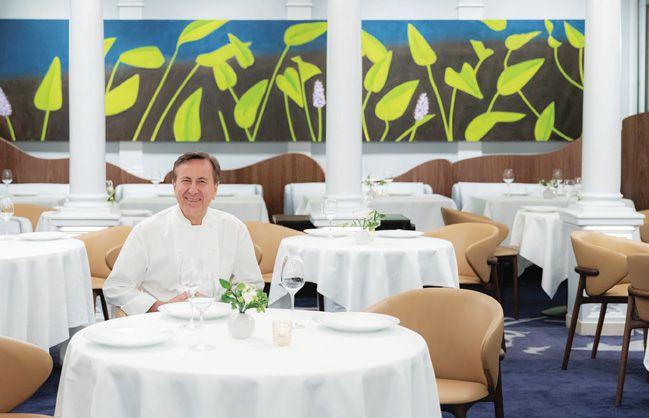
Changes have also permeated the back of house. Executive chef Jean Francois Bruel was promoted to corporate chef, and now, as Boulud’s right-hand man, splits his time overseeing Restaurant Daniel and Le Pavillon. That move
This outlook, however, is not shared across the industry. Operators might also bill their restaurants as “destinations,” but many are more concerned with luring guests on a regular basis. Some even tout their menus as so versatile that customers could dine there every day of the week without getting bored or ordering a repeat meal.
At a time when ambitious NextGen Casuals and emerging fast casuals are eating up market share, some critics have argued that old-school, fine dining chefs and operators like Boulud are out of touch and no longer as relevant as they were in decades past. And it’s true that these restaurants comprise a relatively small percentage of the industry.
But size does not equal relevancy. Dinex Group’s steady stream of business and popularity continue to prove its staying power year after year. The fact Boulud is opening fresh concepts and expanding into new markets further drives home the point. And through it all, he still deeply believes in the magic of fine dining.
“What is the definition of fine dining in the end?” Boulud says. “It’s not because we’re giving you gold-plated silverware and fancy crystal; it has a lot to do with the experience of the food, the service, the setting, the opportunity to indulge in a way that maybe you cannot find everywhere.”
“I think the restaurant business is about—whether you’re in Paris, New York, Singapore— bringing something special to your city and becoming sort of a destination to that city.”

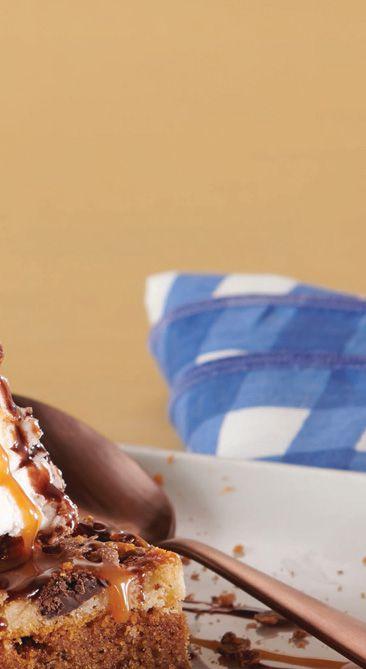







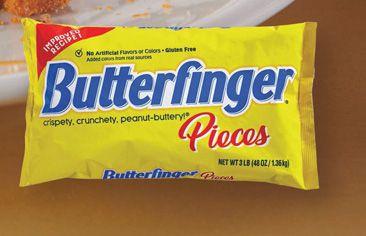




Ruby Slipper Café was founded in 2008 in New Orleans as the city was beginning to rebuild in the wake of Hurricane Katrina. Not only was the brunch concept a trailblazer in the economic resurgence of its home city, but Ruby Slipper Café has proven to be a culinary innovator in the greater brunch space, too.
The brand’s menu is a study in New Orleans-style authenticity: Diners are greeted with options like Crawfish & Grits, seasonal beignets, Bananas Foster Pain Perdu, and much more. One of the brand’s signature menu items, Sweet Heat Chicken & French Toast Bites, uses Mike’s Hot Honey and further exhibits the brand being willing to push the envelope when it comes to creating new and exciting brunch items.
Marla Chua, culinary operations director at Ruby Slipper Café— which now has 20 units across six states—reports that while her concept was one of the first brunch brands in the southeast using Mike’s Hot Honey, other competitors have recently caught on. This isn’t terribly
surprising considering “hot honey” has grown on menus by nearly 200 percent in the past four years, according to Datassential, while “sweet heat” was named the 2020 Flavor of the Year by the National Restaurant Association.
The reason for this growth, Chua says, is two-fold. For one, the flavor profile is something diners love. Secondly, an ingredient like Mike’s Hot Honey can be used up and down the menu and help unlock practically unlimited possibilities for brands like Ruby Slipper Café.
“For years and years, people have always used that sweet-savory flavor combination,” Chua says. “Sweet heat has really started to take off. When I first tried Mike’s Hot Honey, I thought, ‘This is exactly how I want my dishes to taste.’ It wasn’t as popular in the breakfast and brunch space then, but it’s such a versatile and addicting ingredient that we’ve been able to find so many different ways to use it.”
Aside from the Sweet Heat Chicken & French Toast Bites, Ruby Slipper Café has used Mike’s Hot Honey in a “sweet heat” glaze diners can add to a Fried Chicken Sandwich. They have also used it in Hot Honey Ham and Greens Benedict, a Hot HoneyInfused Vanilla Cheesecake, and an Iced Mocha LTO.

Beyond the versatility of the product, Chua and her team have loved working with the Mike’s Hot Honey team as well. After Chua tried the product for the first time, she reached out and heard back immediately from Mike’s Hot Honey founder Mike Kurtz who has remained a “true partner” and wealth of information for Chua and her team in terms of how the product can be used and marketed.
“From a marketing partnership standpoint, they are super open and easy going,” says Melissa Carter, marketing director at Ruby Slipper Café. “They do a great job helping highlight some smaller brands like us and we really appreciate it. On top of that it’s just a great product and complement to our dishes and beverages—I anticipate Mike’s Hot Honey will continue to be featured on our menu for a long time.”
Both the brunch concept and hot honey are growing rapidly.




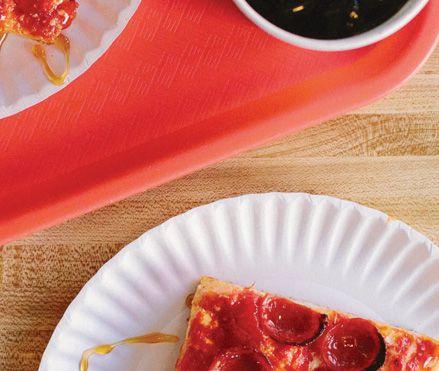
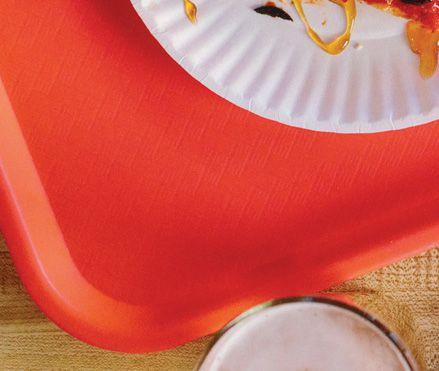










Mike’s Hot Honey started out of a pizzeria in Brooklyn 11 years ago when its signature sweet-heat combo launched a best-selling menu item. From pizza and chicken to dessert and cocktails, Mike’s Hot Honey elevates any dish from ordinary to extraordinary. Request a sample today to see what all the buzz is about. www.mikeshothoney.com/sample




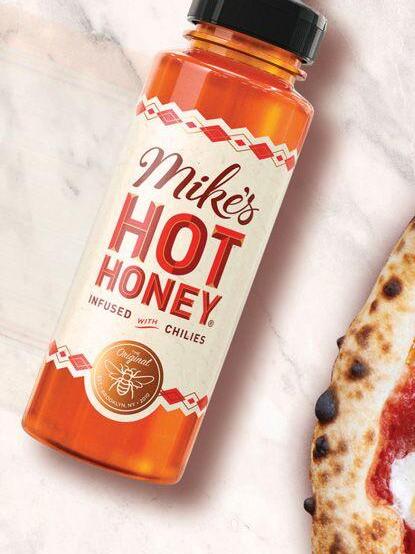







RESTAURANTS. BUT THERE’S ONE THING THAT CAN’T BE DISPUTED: THE DINING ROOM ISN’T DEAD. FAR FROM IT.
BY DANNY KLEIN FS R QSROnce restaurants began closing their dining rooms in mid-March 2020, it was like removing a log from a delicately crafted dam. McDonald’s, Chickfil-A, Starbucks, and a host of mega-chains flipped the locks as operators tried to strategize a virus that’s only blueprint was 7,000 miles away in China. From “15 Days to Slow the Spread” to hopes of shaking off the pandemic by Easter, the reality was hardly the prognosis, to put it rather lightly.
At this stage, though, restaurants are experts on the fallout. Years of tech innovation took hold in months. Socially distanced prototypes, patios and plastic bubbles, double- and triple-lane drive-thrus, and curbside became routine parts of industry vernacular.


Yet with any disruption, guessing the future is as much a predictions practice as it is a hindsight one. And one early doomsday topic under the hot lights: Would COVID kill the dining room as we knew it?
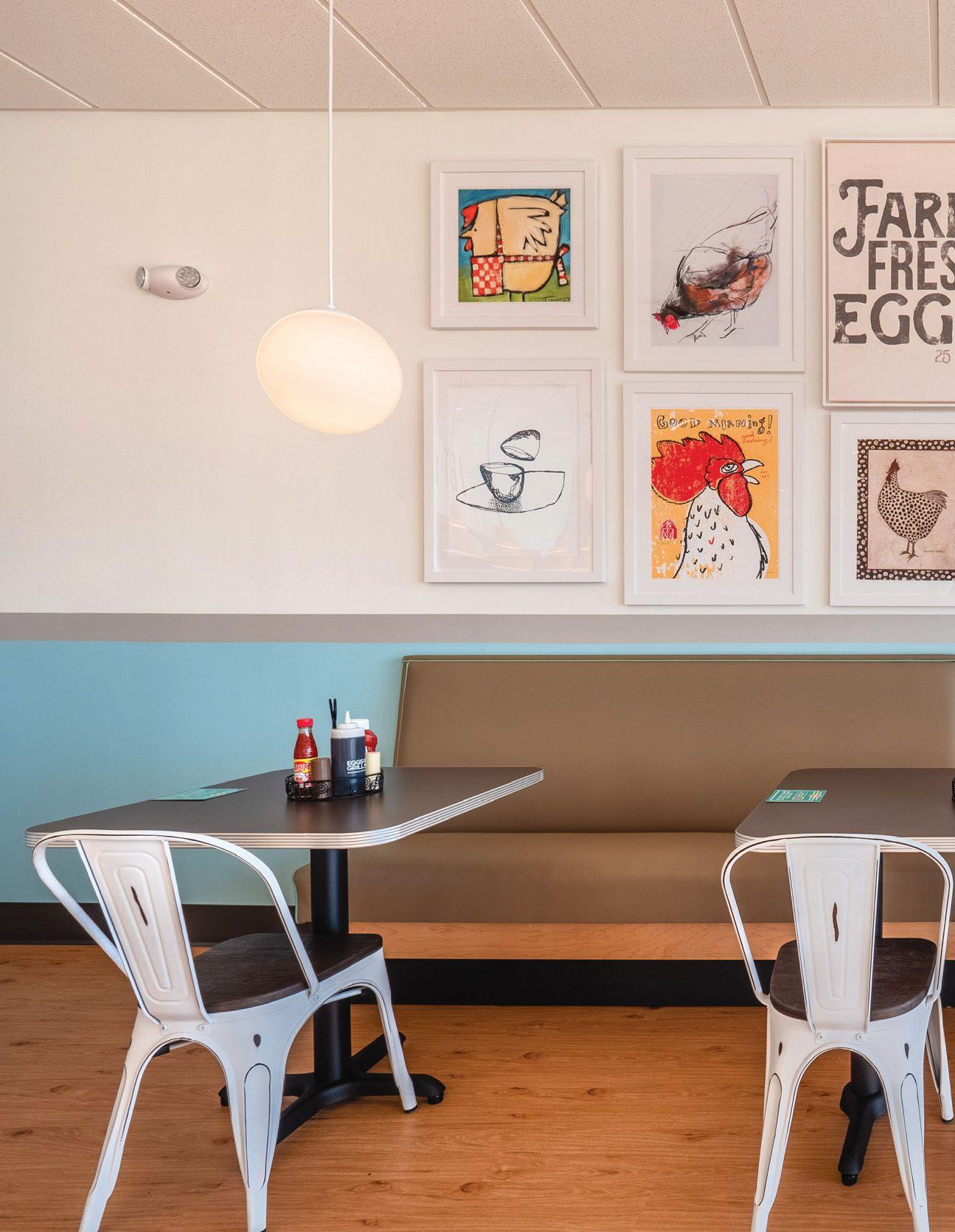
AT EGGS UP GRILL, THE GROWTH OF OFF-PREMISES BUSINESS HAS NOT COME AT THE EXPENSE OF DINE-IN.
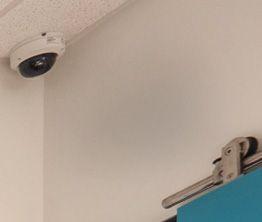
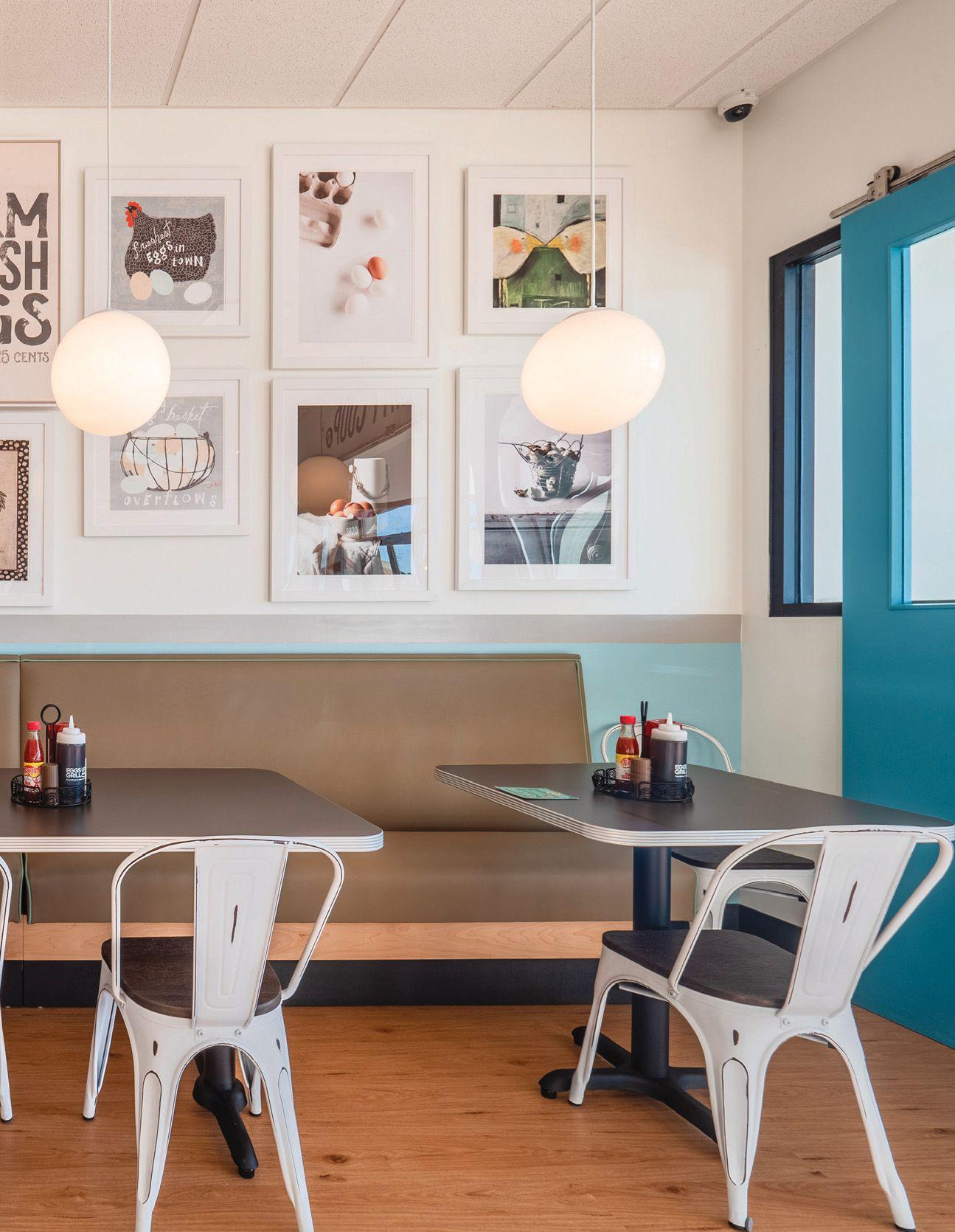
“Kill” is hardly the right label, says Ricky Richardson, CEO of Eggs Up Grill, a NextGen Casual brand that reached 50 locations last August. Richardson, also the former president and chief operating officer of TGI Fridays, says the breakfast concept has seen “phenomenal growth” in its total sales—a combination of off-premises gains joined by in-store returns. Eggs Up Grill’s comps are 20–30 percent above 2019 levels. “I think fundamental behaviors have shifted with a lot of our consumers in their acceptance of offpremises that wasn’t there before,” Richardson says. “But fortunately, we’re not seeing that as a replacement to the dine-in experience.”
Recent data pulls back the curtain on the potential Richardson references. Visits to dinein at breakfast jumped 51 percent last September through November compared to the same period in 2020, when on-premises traffic plunged 55 percent, according to The NPD Group. Lunch, in the same window, rose 44 percent.

Online and physical orders/visits from and to full-service restaurants rose 8 percent, year-overyear, from January to October.
And all of this has transpired as 75 percent of restaurant visits remain off-premises. That latter category, which includes carryout, drive-thru, and delivery, climbed 9 percent versus 2020 and 19 percent over pre-COVID marks.

In simple terms, consumers’ appetite for restaurants didn’t wane during lockdowns. And the idea that fervor will subside when novelty does is a narrow one at best. Accessibility and connectivity broadened restaurants’ ability to drive revenue via multiple channels. In that shift is where the dining room has started to evolve.
So what common COVID tactics are here to stay, which are falling off, and what does 2022
and beyond hold? It depends on the consumer, Richardson says.
“I think all of the things like social media— those types of channels—are very complementary. But you can’t replace in-restaurant observations to really see how the [new] tools are working,” he says. “I think you’ve got to look across all channels, but what you can’t ever defeat is what you see inside your restaurant.”
Randy Sharpe, CEO of multi-concept operator Xperience Restaurant Group, which directs El Torito, Chevys Fresh Mex, Acapulco, and others, believes pay-at-the-table is one adjustment with legs. Consumers are touching fewer things. The idea of a credit card not leaving their sight is a win.

But QR codes are a more convoluted matter. In terms of resuscitated technology, the QR code might have been COVID’s true poster child. The ability for guests to pull up menus on their phones was one of the most widespread introductions. Companies like OneDine and Olo made it possible to order and pay, too. This was a disruption that can’t be understated. In Q2 2021, delivery, all buzz included, represented just 8 percent of the industry’s overall transactions, according to NPD. That 92 percent “non-delivery” world was changing. And so was the makeup of the digital transaction itself. “Digital delivery” comprised 6 percent, whereas digital overall was 17 percent. The other 11 percent? The confines of “nondelivery digital.”
Ten percent of the block, to nobody’s surprise, flowed from takeout. For the first time in restaurant history, though, 1 percent of transactions belonged to “digital on-premises.” When you consider restaurants generate some 60 billion transactions in a typical year, kiosk and QR code ordering enjoyed a significant COVID moment.
At some of XRG’s restaurants, Sharpe says, QR codes performed well. “The vast majority,” he adds, “were rejected. Guests wanted to touch the menu.”
That was especially true at XRG’s upscale locations. “We started out all QR code, and this is the wave of the future,” Sharpe says. “There are a lot of benefits, obviously, from the back end, too. You want to make a menu change—it’s super easy. It just didn’t work in a lot of our restaurants.”
As the pandemic’s initial crater settled, XRG restaurants, where guests seek experience over just getting a meal, held their identity as places where
“I think fundamental behaviors have shifted with a lot of our consumers in their acceptance of off-premises that wasn’t there before.”


















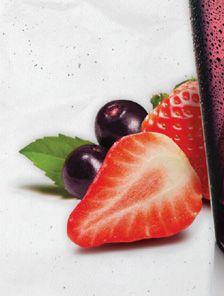










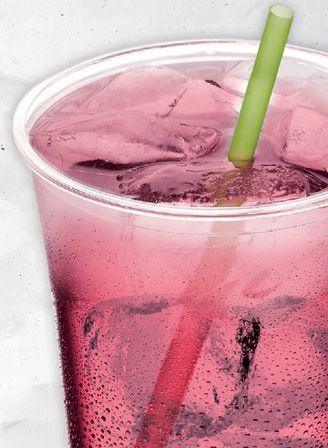



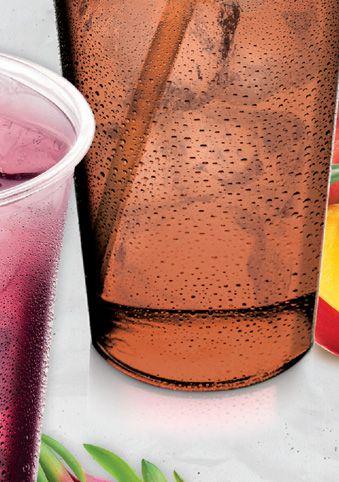

people craved the “ways things were before.”
The same was true at Ascent Hospitality Management’s Huddle House and Perkins brands.
Alison Glenn Delaney, the company’s chief brand officer, says they’ll keep the QR code option available for those who want it. Yet generally, it wasn’t in line with what diners expected, and so there’s been a backslide to old dining room staples. “We find QR codes are much more applicable to somebody applying [their information] right away,” she says. “Or signing up for loyalty … something like that. Not so much on the menus.”
Justin Bartek, marketing director at Jinya Holdings ( Jinya Ramen Bar and fast-casual spinoff Bushi) says there’s space for both, which is a mindset that applies to a lot of what’s taking shape within today’s four walls.
“How do we make the QR code experience better?” Bartek says. “I think the future is going to be [augmented reality]. If you use a QR code menu, you’ll be able to point your phone at the table and see the dish in front of you in new and exciting ways.”
This vision differs from the current sentiment in which guests assume technology in restaurants is an extra step or even a hassle “But the future is going to be much different from today,” Bartek adds.

In reality, much of the technology ignited by
COVID is still in its infancy for restaurateurs, even after a year for the record books. Where operators have arrived at is a search for balance.


To Sharpe’s point, getting customers off the couch and into the restaurant is often a task of providing a familiar escape. But there’s a line to walk. Consumers’ standards for cleanliness aren’t just higher than before—they’re far more demanding. Brands are under a constant microscope, Sharpe says. Employee protocols. Where other guests sit and how they act. How servers and staff respond.
Meanwhile, brands can’t push the envelope so far that diners feel they’re grabbing a meal in some apocalyptic dystopia where efficiency and cleanliness trump experience and hospitality.
All-you-can-eat brunch is one of XRG’s biggest draws at some of its brands, including El Torito, where it’s the No. 1 daypart. Sharpe says this came “roaring back” when restrictions lifted. “Not crawling, [ but] roaring back when we reopened,” he reiterates.
Instead of abandoning the feature, XRG reconfigured the setup, erected plexiglass, and put attendants behind the barrier at each station to guide diners through the entire process.
Even when mandates dropped, XRG left updates in place. It helps with cleanliness and sentiment, speed, portion control, and even guest experience by providing service at every station.
It’s an example, Sharpe says, of how the return of the dining room remains an exercise in feedback and flexibility.
Edithann Ramey, chief marketing officer at On The Border, notes guest listening is an area COVID lifted the lid on in myriad ways. Interaction and engagement across social skyrocketed as it became the only connective avenue for many people. On Cinco de Mayo, typically On The Border’s biggest day of the year, it hosted a Face-













The dish that got chef Steve Chu from hot dog cart to full-fledged restaurant: Thai Chicken Meatballs. It’s got a little bit of everything – crisp mango slaw, tender, juicy chicken meatballs and of course, that phenomenal bite and texture of Cracked Black Pepper. Your Skills. Our Spices. Now that’s a potent combination. Learn more at: McCormickForChefs.com/McCormick-Culinary

TOGETHER, WE FLAVOR






book Live where the brand talked to guests and “had a party through social.”
“As such, it’s been two-way communication channels,” Ramey says. “Not just to talk about complaints, but also to give us feedback on some of the things that are working and some that are not.” Everything from menu changes or paredowns to the aforementioned QR codes.
Quick serve Fazoli’s has also been on a mission to drive more guest reviews, too, as it tries to sort operating myth from reality, CMO Jodie Conrad says. “The majority of those come though Google,” she says. “But that really is a way to get real-time feedback on what the experiences are like and where the pain points are. And what people find is working for them versus not working for them.”
Has this been a frustrating process at times? No question. Higher prices, standards, and elastic regulations stir a cauldron of problems that make it difficult to deliver the experience consumers demand. Limited-service turnover was 106 percent in June 2021, according to Black Box Intelligence. It was 144 percent for quick serves. Both are higher than 2019 levels of 102 and 135
expensive; it’s taking the family out,” Bartek says. “We want that thing we had. But it’s different. Why is it different? That’s something [customers] are not thinking through. … How do we combat that? The labor isn’t going to change. The supply chain isn’t going to change immediately.”
Indeed, Conrad says, it’s challenging for consumers today to find a great experience, whether they’re spending $5 or $50. You can say the same of retail and grocery, where supply has stretched expectations of time and availability.
Navigating this current stretch has become the present and future of the dining room. Per a Q3 dive from Black Box, as quarter-over-quarter traffic growth eased and restaurants caught their breath, a new connection emerged.


In full-service restaurant reviews, when “speed of service” and “attentiveness” net sentiment improved, perception of “food quality” often did as well. When positive chatter around “fast,” “quick,” and “prompt” coincided with quality mentions of “attentive,” “refills,” and “checking back,” upbeat comments of “fresh,” as in the food was “hot and fresh,” trended higher.
One example: “They were short on staff, but the manager stepped in to help. We had hot, fresh food. Server and manager were friendly and checked on us several times.”
Richardson says restaurants have to be careful at this inflection “to not let our expectations of what makes us different and what makes guests choose us slip.
percent, respectively. More than 25 percent of employees claimed less than a year on the job.
The number of hourly workers in a limitedservice restaurant was down 1.2 percent and 6.2 percent for full serves ( but only 2.8 percent in the full-service back of the house).
“The classic review [today]: I know we’re in a pandemic, but…” Sharpe says.
Consumers want service, supply, and labor from two years ago in the dining room, Bartek adds. In recent months, he’s noticed a slight decline across the board with Jinya’s reviews.
“It is those little things, but it makes a huge difference for these people now because it’s more
“There are so many very significant and real challenges in our business,” he says. “It would be very easy to start rationalizing because we experience it everywhere else we go. But the minute you start letting your teams think that way it becomes corrosive,” Richardson says. “It is a reality they have to deal with. But it also becomes an excuse to not be passionate about those standards.”
Eggs Up Grill is a predominantly franchised system. So the message from corporate down, he says, has been to remember why consumers picked the brand in the past and find ways to make it right for every guest in the restaurant, in a positive and memorable way.
Sharpe agrees. “You are who you are,” he says, “and your guests use you for who you are. I think there’s a perception—and some of it is real—that during the pandemic a lot of brands tried to make it a little easier on [franchisees], which is completely understandable. But if you go too far you actually lose your identity, and
INTHE FUTURE, TECHNOLOGY AT JINYA RAMEN BAR COULD INCLUDE INTERACTIVE COMPONENTS LIKE AUGMENTED REALITY.
“It would be very easy to start rationalizing underperformance because we experience it everywhere else we go. But the minute you start letting your teams think that way it becomes corrosive.”






your sales are going to fall.”
That identity, as mentioned earlier, needs to includes what Conrad calls “sanitation theater.” It’s an operating practice she believes won’t ever go away. Hand sanitizer on display. Guests watching employees clean tables.
“I think, formerly, the expectation for all of us was to provide a clean and safe environment,” she says. “But the point was, I didn’t need to see you cleaning; I just needed to notice the place was clean. Now, I need to see you cleaning. I need to see you demonstrating these steps for my safety and my crew’s safety.”
Gregg Koffler, vice president of franchise development at Roy Rogers, had a unique challenge at hand when COVID arrived. The classic quick serve has long differentiated with a “Fixin’s Bar” where guests self-serve their add-ons. Once dining rooms reopened, Roy Rogers had to remove it. Guests could request a “Fixin’s Cup,” but it was a feature outweighed by a new expectation of cleanliness and safety. That’s come back, however. “But we’re still cleaning at a level that we’ve never had before,” Koffler says.
And speaking of operating on the fly in the dining room, dividers and other physical changes have propped up and come down, too. Richardson says in Eggs Up Grill stores that have removed partitions, there’s been “no pushback from our guests.” Again, what has fundamentally changed, however, “is the expectation around sanitation,” he says.
About 40 percent of XRG’s units are in Los Angeles County, a market where a health order
claimed dividers didn’t, in fact, compensate for 6 feet of distance. “So that went out the window [more than a year] ago,” Sharpe says. “The dining room looks like it did before at this point. The cleanliness theater is predominant.”
“People are very, very conscious nowadays of cleanliness in a restaurant environment,” says Nils Hughes, executive vice president of sales in the Americas for FLAT Tech. “And it’s almost become a show. People are over-exaggerating the cleanliness and getting rid of things like menus and putting a QR code on the table. So there’s been some fundamental shifts that have definitely happened. Creating environments is more important than ever. ‘Micro-social environment’ is becoming the buzzword now of the industry—to make sure that people do feel protected.”
Sharpe and Richardson say their brands’ dining rooms are stuffed these days. It’s one reason patio extensions, originally made to combat fears of dining inside and expand capacity, aren’t going away. Richardson says they’re a near requirement for new builds at Eggs Up Grill.
That’s important considering the density inside restaurants doesn’t appear to have changed all that much, a fact, Richardson admits, surprised him. “If you had asked me a year ago, I would have told you that new restaurants would have been less dense in terms of seating,” he says.
In truth, there’s been a “very small amount of guest feedback” concerning seating adjacencies. “You occasionally get that, but it’s not consistent at all,” Richardson says.
Quick service could end up telling a different story. Drive-thru, which represents 52 percent of offpremises traffic, according to NPD, was up 9 percent through October last year, and 23 percent higher than 2019. Carryout (39 percent of offpremises mix ) was 3 percent better, year-over-year, and delivery 32 percent. An eye opener—delivery was tracking 123 percent above 2019 levels.
You see this progressing with futuristic prototypes, everything from conveyor belt drop-ins to Shake Shack’s multiple-lane drive-thru entry to Taco Bell’s Go Mobile unit, which has turned a typical site pad into an omnichannel transaction center, complete with smart technology and spaces dedicated to curbside orders.
Before COVID, 40 percent of Fazoli’s sales were dine-in. Even fully open, as of December 2021, it was down to about 27–28 percent. “To
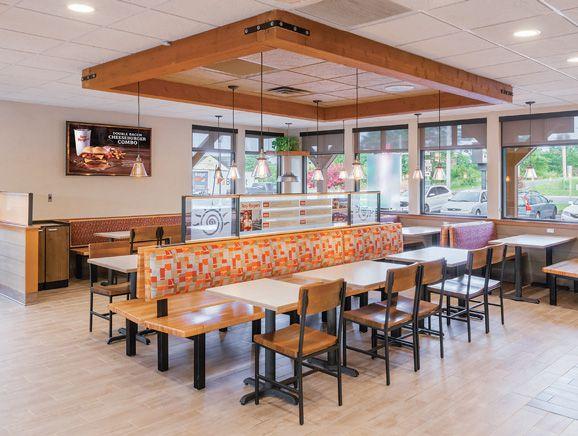
“It gave us an opportunity to really look at what we do in our physical building and how dowe increase the value proposition for our franchisees
overall.”





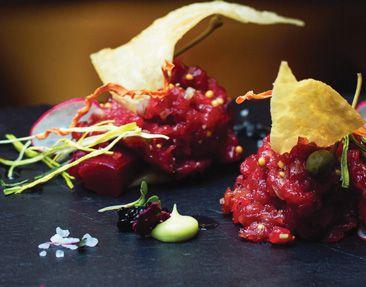

































































be honest, I don’t think it’s ever coming back to 40 percent for us,” Conrad says. “Because people have figured out how they’re going to live their lives and adapt, and it hasn’t included eating in, at least as much, at quick-service restaurants as they used to.”
Roy Rogers has started to reexamine footprints and shrink square footage accordingly. Fewer seats can equal a lower development cost, Koffler says—“an unintended consequence of the pandemic.” And also a pretty clear answer to whether quick serves, broadly, need dining rooms as large as before.
“It gave us an opportunity to really look at what we do in our physical building and how do we increase the value proposition for our franchisees overall,” he says. “Wendy’s and Taco Bell and their new prototypes are shrinking their footprints 500–700 square feet for a restaurant, which is a big deal in the [quick-service restaurant] space.”
If COVID has proven anything, though, it’s that you can’t paint a single stroke for any trend.
Jinya’s Bartek is seeing franchisees actually build larger spaces than ever. “It’s a product of the way the real estate market was and how some things became available that weren’t there before for our guys,” he says.
Lisa Lee, vice president of marketing at SPB Hospitality, a group that owns, among other concepts, Logan’s Roadhouse, Old Chicago, and J. Alexander’s, says the scope of dining rooms and what development looks like is another guest reaction that brands need to stay on top of.

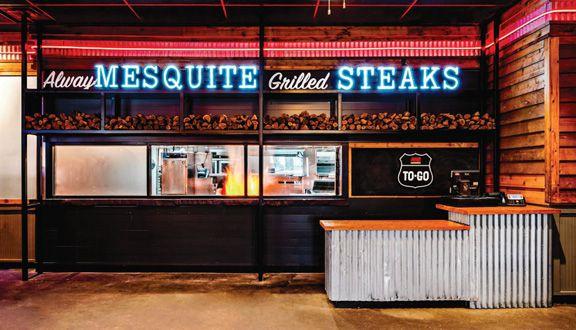
“In my mind, the shrinking of the space, the adaption of technology, all of those kinds of business needs that we’re talking about, they will work when they work for the consumer,” she says. “And, at the end of the day, when the guest has a better experience because of the technology that we have embraced or the new design that incorporates third-party pickup or a better to-go experience, or more convenience … that’s when we all win.”
Put another way, some of the elements that came with COVID—those that maybe were reactionary items but not experience-driven ones—won’t last.
“And it will be interesting to see what happens three years from now,” Lee says. “What sticks and what doesn’t. And I’m not 100 percent sure there will always be QR codes on tables. But, 10 years ago, I didn’t think they would exist in our future. And here they are.”
“The problem-solving technology is the one
that will win,” Hughes adds.
In some ways, the flush of off-premises business could help the dining room. Experiential dining is at the heart of everything On The Border has done to bring people back, Ramey says. There’s a certain marketing element to remind diners it’s OK to celebrate again. And with that, more advertising around alcohol, events like wine dinners, trivia nights, and other experiences that crystalize the value proposition of in-store versus off-premises dining.
On The Border has stretched this inside and outside restaurants, with family bundles still mixing a significant portion of sales. Leaning on tech, the brand used its new loyalty program to incentivize visits and talk to guests. “Remind them of who we are,” Ramey says. “Remind them to celebrate by remembering their birthdays, their anniversaries, the last time they came in. And then just talking to them about all the great things you can do to celebrate coming back to us.”
At Olive Garden and LongHorn parent Darden, Sunday has become a legitimate sales day in its fine-dining division ( The Capital Grille, Eddie V’s, and Seasons 52),

BETTER QUALITY FOOD
Less moisture lost in cooking process gives more succulent food and 50% less shrinkage than standard charbroiler
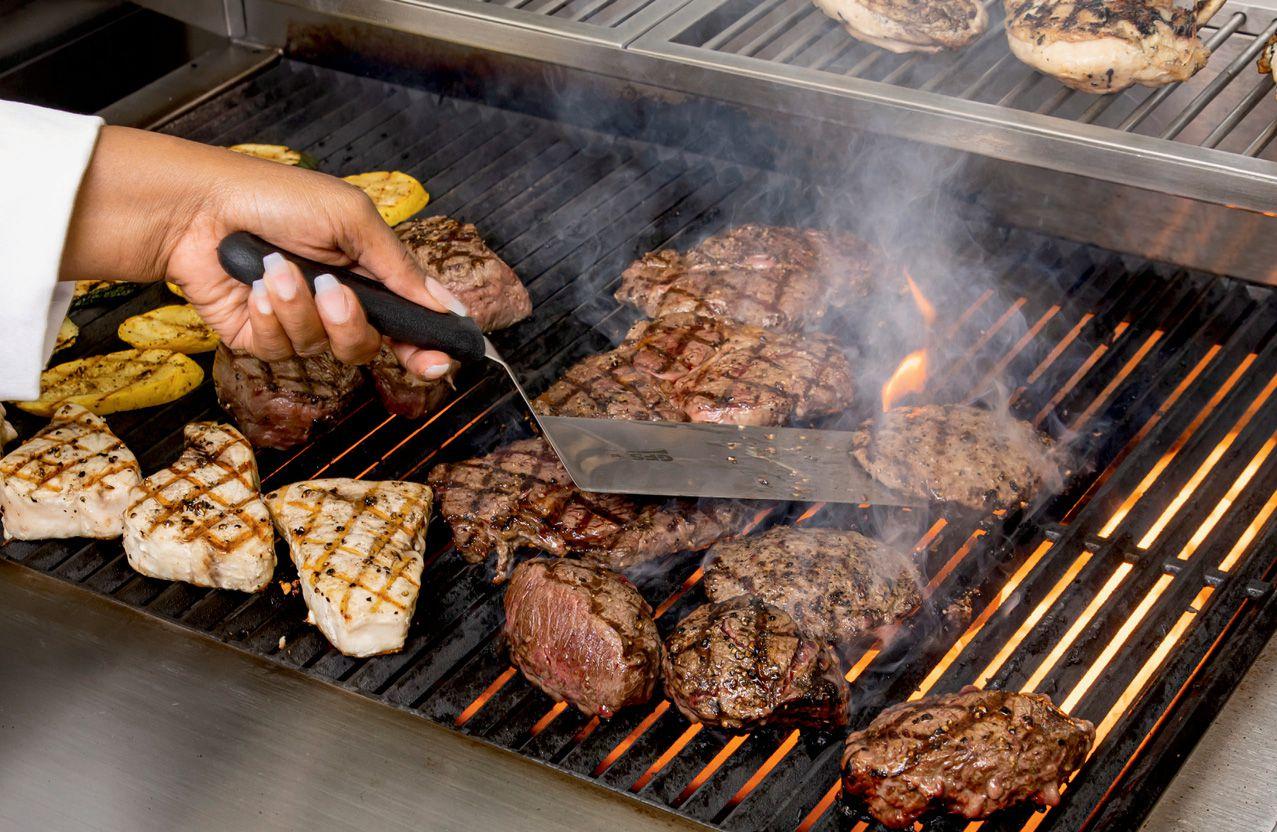
CALCULATE SAVINGS
Our easy to use calculator
Garland XHP Broiler could save you. Try it out! Scan QR code:
ENERGY SAVINGS
Patented gas burner
SAFE AND EASY TO USE to turn on. Flame failure



 BY KEVIN HARDY
BY KEVIN HARDY
CUSTOMERS
Many still harbor lingering pandemic fears of big gatherings, dining inside restaurants, and trips to any environment with strangers.
But a large share of consumers are ready to go out and visit anywhere that’s not home. After two years of postponed parties, dates, and nights out, they’re ready to hit the town again.
T.J. Schier, chief operating officer at eatertainment concept BigShots Golf, wants to take full advantage of that opportunity.
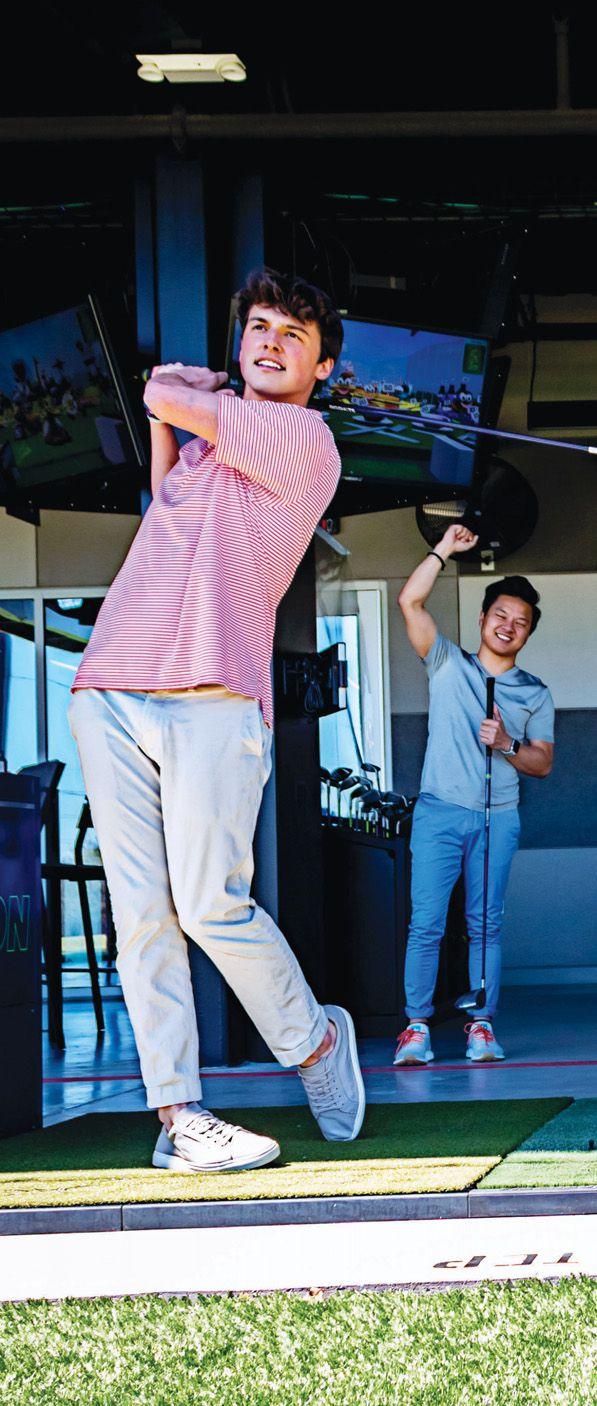
“We feel fairly well-positioned,” he says. “The majority of people have that pent-up demand and want to go out. But I think they’re going out only to the places they trust.”
And mostly outdoor venues like BigShots can make a strong case that their environments are distinctly safe compared to crowded indoor destinations. The stalls that host tech-enabled golf games are spread out and guests can spend most of their visit outside if they choose.








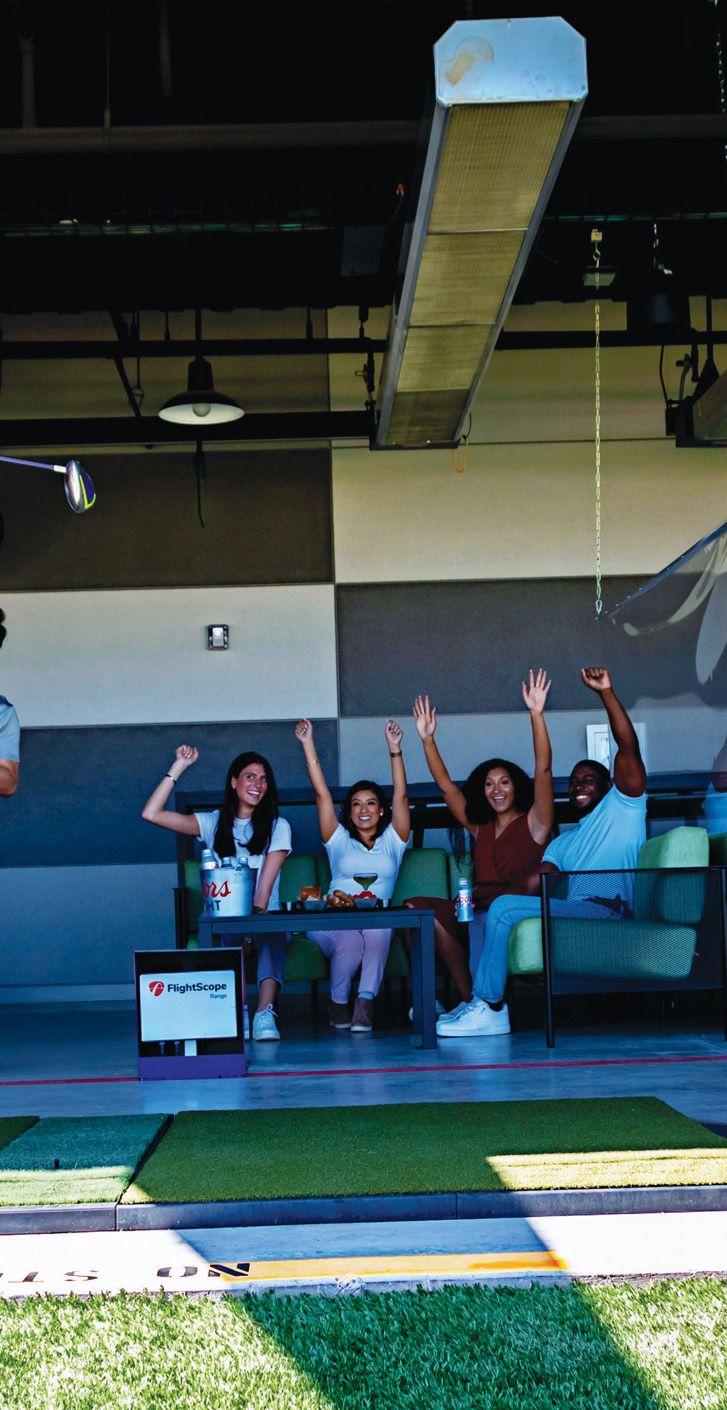


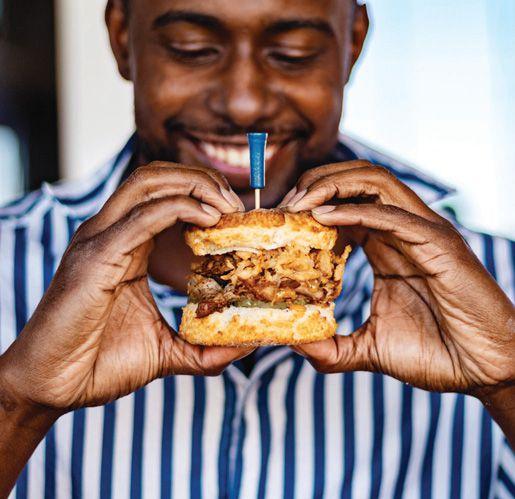

Although business boomed amid virus concerns, Schier says the brand aims at expanding beyond just golf to drive more sustaining traffic in the months to come, when, hopefully, the nation finally crawls out of the pandemic.

BigShots is trying to round out its experience, giving more guests more reasons to visit more often. It’s added firepits and outdoor gathering spaces and has played up its bar as a game-night destination. Similarly, BigShots plans to rebrand its in-house restaurant to help it shine as a standalone feature.
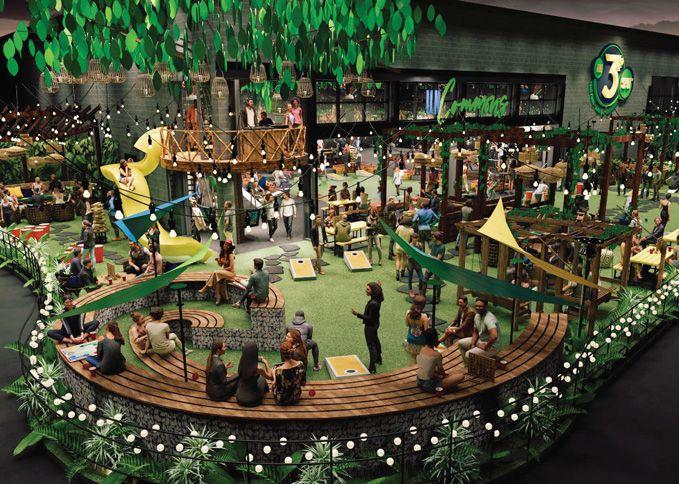
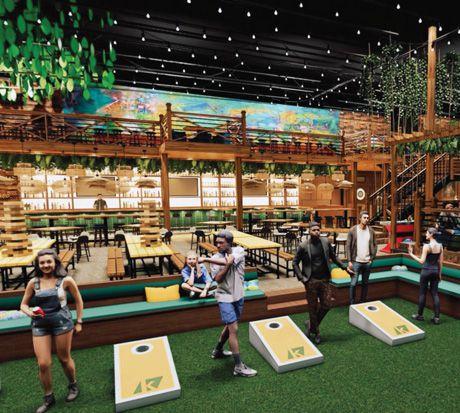
While other restaurants pivoted to curbside and third-party delivery early in the pandemic, Schier says eatertainment concepts like his were largely left out. But that won’t be the case in the future, he says.
“We’re proud of the food that we serve; it’s elevated sports bar food, and it travels well,” he says. “We want people to order our food to-go. They don’t even have to come here.”
While the pandemic drastically altered operations for quick-service, casual, and fine-dining concepts, it upturned the world of eatertainment. Stay-at-home orders left those large venues dark with little business in the to-go and delivery space that was critical in keeping other restaurants afloat.
Now, experts believe eatertainment—a category defined by its combination of restaurant dining and games—is uniquely poised for a big rebound in the recovery from the pandemic, whenever that may occur. People are craving social connections and hands-on experiences—partic-
ularly ones out of the house. And many yearn to do more than just go out for a meal; after all, consumers kept frequenting restaurants throughout the pandemic, even if they never sat down inside for a meal.
“What they’re missing is the opportunity to go out and have fun,” says Gary Stibel, founder and CEO of the New England Consulting Group. “There’s a lot of pent-up demand, pent-up energy. So, they are better positioned to come out of this at a position of strength.”
Still, Stibel says those brands, whether they specialize in golf, bowling, or arcade games, should go on the offensive with marketing and special promotions. That will help pull consumer attention back to those concepts and allow the venues to communicate the ways they are putting health and safety front and center.
“They’ve got to go out of their way to market to the kid in all of us, whether it’s the 35-year-old who wants to get back in a miniature racing car, the 18-year-old that wants to collect tokens at a Dave & Busters, or a 12-year-old that wants to have a real birthday party at a Chuck E. Cheese,” Stibel says.
Consumers flocked to outdoor venues, particularly in the months before coronavirus vaccines were widely available. Golf may have become more popular than ever, a phenomenon that spilled over into putt-putt courses and technology-driven concepts like Topgolf and BigShots. But Stibel warns these operations shouldn’t take their pandemic surges for granted.
“If they lock in their newfound guests with loy-
“COVID did what their own marketing failed to do: It put people into their venues. If they aren’t capitalizing on that with loyalty events and follow-up promotions, then shame on them.”
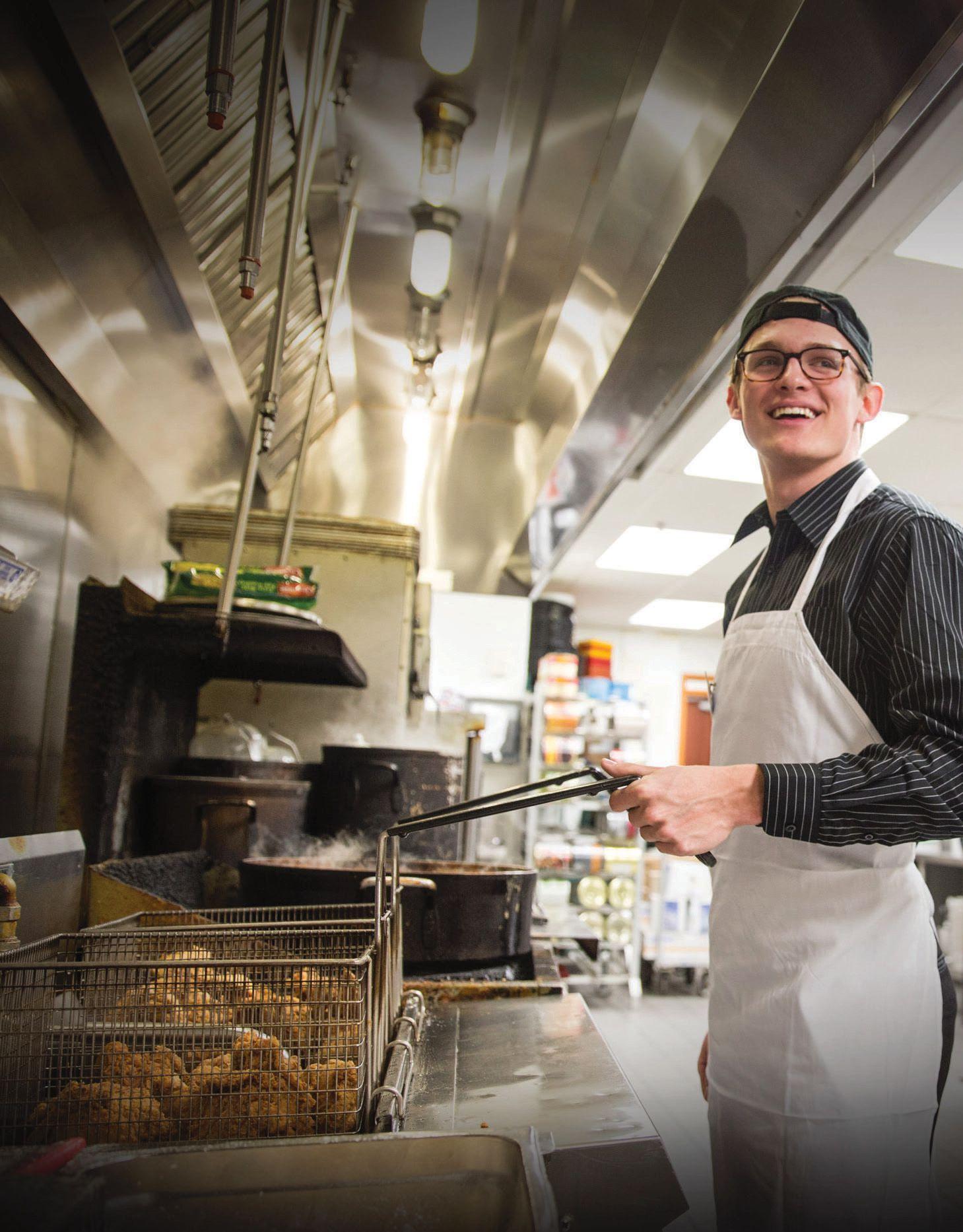

alty programs, promotions, and events, they will be as good as gold,” he says. “Because COVID did what their own marketing failed to do: It put people into their venues. If they aren’t capitalizing on that with loyalty events and follow-up promotions, then shame on them.”
When Your 3rd Spot opens its first location in the second quarter of this year, founder Joshua Rossmeisl is optimistic the pandemic will be more controlled. But whatever the landscape, it will open in an era where operators know how to keep the doors open and ensure guest safety, he says.
This approach allows his brand to make safety changes upfront rather than trying to retrofit existing spaces like many restaurants did over the last two years.
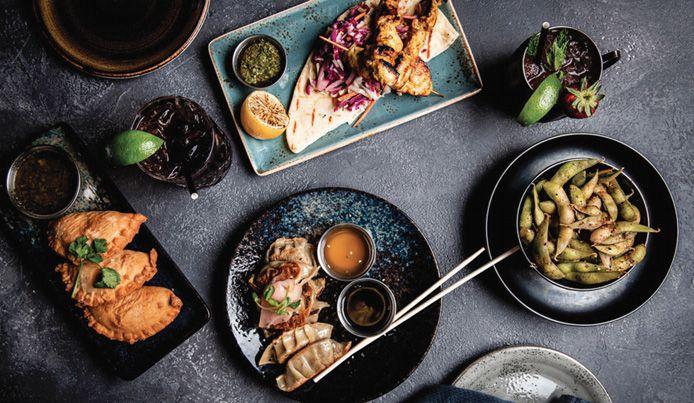
“It’s not as scary as it was about a year to a year and a half ago when there was no information about it,” Rossmeisl says. “We can actually
build it that way from scratch to give people that sense of safety, not just from COVID, but safety in general.”
The inaugural location in Atlanta will include an enhanced ventilation system, touchless features in the restrooms, and a 4,000-square-foot patio for outdoor dining, drinking, and playing.

“I never thought to put in a patio that large,” Rossmeisl says. “But it’s so commonplace now. It’s what people are looking for.”
Your 3rd Spot is so named because it aims at becoming a regular destination, just behind a customer’s home and place of work. The restaurant will feature a high-end bar and food menu, bowling lanes, arcade games, and table games. Some 20–30 years ago, Rossmeisl says dining out was experience enough for most customers, but now they want more of the places they spend their time.
“For people to just go to a bar and stare at

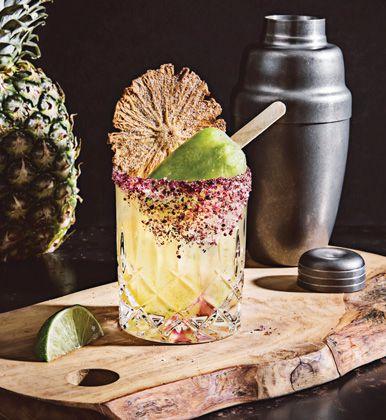
Our new sashimi-gradeYellowtail ishumanely ocean-raised,freeof contaminants,and highin omega-3s.It’s a sustainably deliciousfish that’s good for the people and the planet.










Request your FREE SAMPLE of NEWForever Oceans TM Yellowtail atForeverOceans.com/samples.

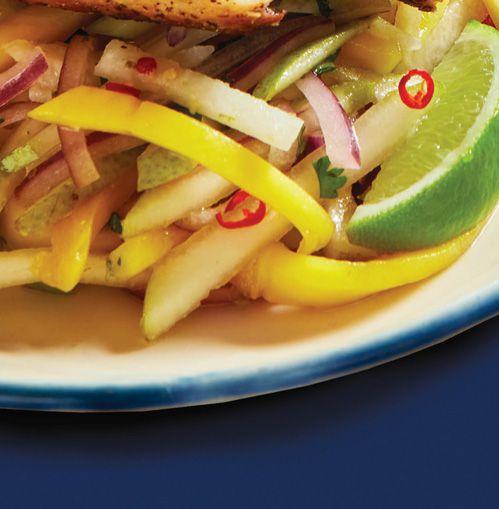
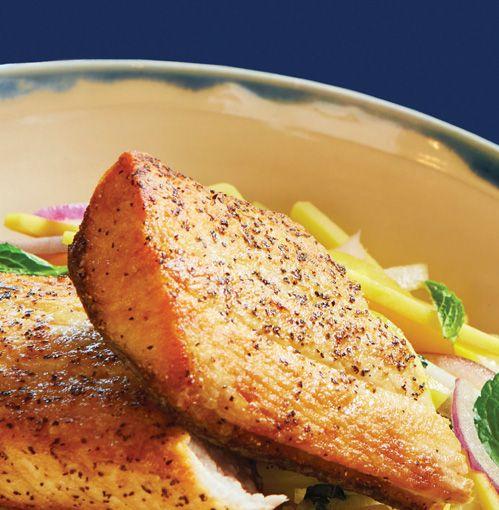
a bartender and a bottle of alcohol … is not an experience,” he says. “People are really craving experiences. Adults in particular are looking for a place they can go that’s really built for adults.”
The experience will be largely controlled by customer apps, which will make for seamless food and beverage ordering and game reservations. Yet Rossmeisl says the venue will purposefully feature more analog entertainment experiences like bowling or retro games—a welcome reprieve for guests after many worked virtually for months.
“We’re all staring at our screens all weeklong,” he says, “So literally the last thing you want to do is stare at another screen.”
The way Joe Vrankin sees it, people have always flocked to the eatertainment segment. It existed well before the pandemic and will persist well beyond it. But what’s changed, he says, is that people realize more than ever the importance of social connections and gathering together.
“People always valued it, but you kind of took it for granted,” says Vrankin, CEO of Puttshack. “You could kind of do it anytime.”
Puttshack is miniature golf’s answer to Topgolf. In the tech-infused game of putt-putt, each ball features a microchip that automatically calculates players’ scores, allowing guests to ditch paper and pencil scorecards. There are beer pong and roulette holes, and each includes hazards and opportunities for bonus points.
The former CEO of Topgolf International, Vrankin says such differentiation from other entertainment offerings will be key in the space, which he expects to expand in the post-pandemic era. Puttshack, like Topgolf, enjoys patent protection on its technology.
“It reinvents the game of miniature golf in a way that no one’s ever played before,” he says. “You can go bowling at one of a dozen places. You can only play Puttshack at Puttshack.”
In the recovery following the Great Recession, concepts like Dave & Buster’s and Topgolf expanded aggressively as consumer demand skyrocketed. Vrankin expects the category to see a similar boost after the pandemic, particularly as those people who remain cautious of lengthy travel look for entertainment and dining experiences closer to home.
Nearly every American city is already home to a bowling concept, a golfing experience, axethrowing or some other entertainment destination. But Vrankin expects to see more innovation in the space in the years to come.
To him, the key for newcomers will be finding a differentiated entertainment offering and providing a top-notch service experience and a restaurant-quality food and beverage program. Puttshack’s food options include everything from a Thai octopus dish to Korean bao buns to Persian chicken skewers.
“In our space, I don’t think you can just do one or the other,” Vrankin says. “Some concepts have great food, and they do some activities. Others focus on the activity, and they have bar food. To me, to be sustainable, you have to be best in class at both.”
The quality of food has been a persistent conversation in the eatertainment space.
While many concepts are working to offer a more refined menu, most customers are coming for the fun, not the food, says Matthew Mabel, president of consultancy Surrender Inc.
He points to Chuck E. Cheese’s virtual brand Pasqually’s Pizza & Wings, which rolled out on third-party platforms in the spring of 2020.
“The reason they called it Pasqually’s is because the client would never know it’s Chuck E. Cheese,” Mabel says.
Inside the restaurants, guests are more forgiving of the food, Mabel says, because they are coming to be entertained. Dave & Buster’s, for example, reported relatively flat financials in the third quarter of 2021 compared to the same period in 2019. But its financials showed an increasing share of game-driven revenue. While games accounted for about 59 percent of sales in 2019, that figure had jumped to 66 percent in 2021.
“So that kind of tells me people are going to play,” he says, “and the food component is not as important to them.”
While no one can predict when the pandemic will truly be over, Mabel is confident that day is coming. But even as new variants emerge and the virus spreads wildly, he noted that many consumers and businesses seem to have already moved on. Some chains hardly mention safety protocols on their websites anymore, and many customers are once again crowding into restaurants and entertainment destinations.
“People are going out,” he says. “We can talk all day about whether consumer behavior is rational or not, but it is behavior. People are going out and going back to places.” ◗
“Some concepts have great food, and they do some activities. Others focus on the activity, and they have bar food. To me, to be sustainable, you have to be best in class at both.”BY DAVINA VAN BUREN












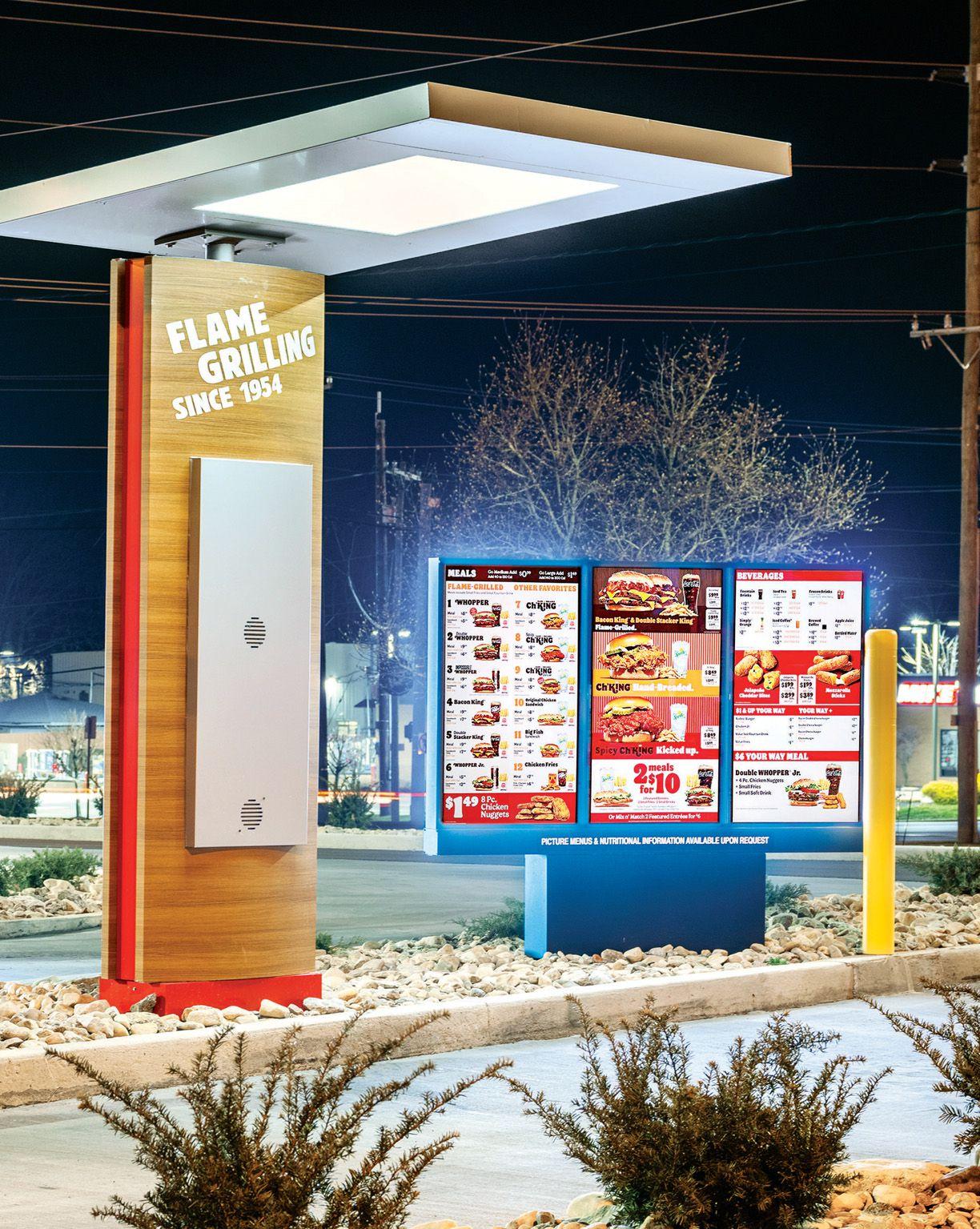
Prior to 2020, digital signage was a trend set by larger chains, and for good reason: It’s critical they maintain a cohesive brand experience across dozens, hundreds, or even thousands of stores. Used primarily to daypart menus and promote limited-time offers ( s), digital signage was a powerful tool that helped brands be more agile and stand out as modern, forward-thinking companies.
As the trend caught on, operators of all sizes realized they could harness the power of digital signage to reduce food waste, decrease drive-thru wait times, and advent of loyalty apps, geofencing, and AI upped the ante even further, allowing operators to provide relevant, customized experiences for guests and gather valuable
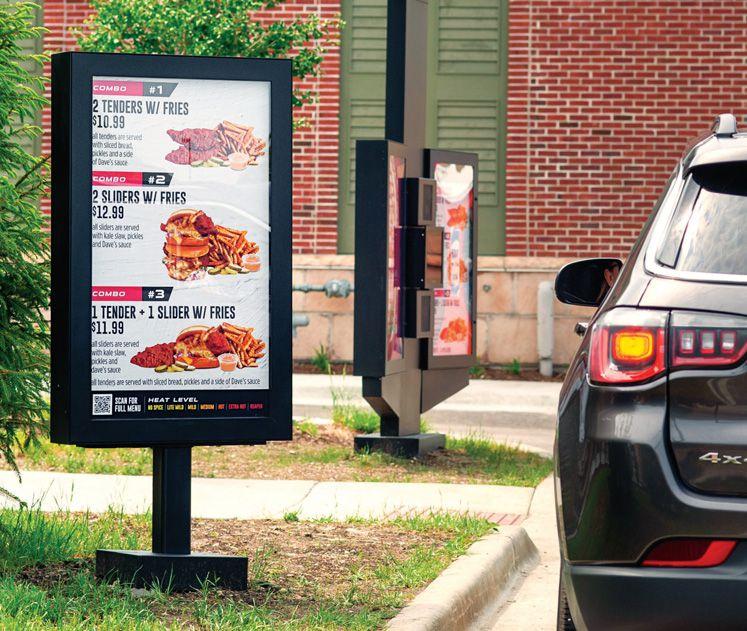
inevitable, but the pandemic accelerated adoption as leading brands bought into the rest of the industry to follow,” says Sho DSA Signage
Because the pandemic forced restaurants to change many aspects of operations at once, they needed a way to clearly communicate with guests in real time. guests and employees and simultaneously dining and delivery. Brands quickly piv-tions, improvised pick-up windows, and enhanced drive thrus to compensate for the lack of dine-in options.
adapt these new practices if they wanted to both guests and restaurant operators
by reducing operating costs, minimizing labor, streamlining operations, and maximizing revenue. It became clear that twoing and digital signage adoption—would become a permanent part of restaurant operations moving forward.
“With the unpredictability of the pandemic, quick-serve and fast casual restau-nicate changes to their customers,” says LSI “Labor shortages, changes to store hours, supply chain issues, and price increases are all problems facing the industry; digital signage helps restaurant managers adjust quickly to these ever-changing factors.”
As a result, operators who may have been on the fence about digital signage are now clamoring for it—not just to put patrons at ease, but to enhance restauthe ongoing labor shortage. As more oper-
“Signage is no longer considered a simple advertising tool—it is now a critical part of the restaurant’s operations.”





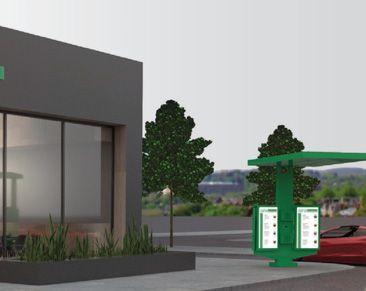


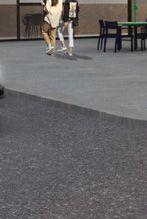



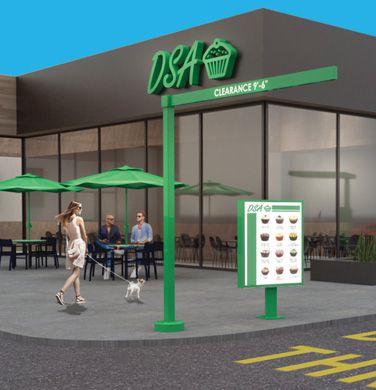




ators get on board and digital signage becomes ubiquitous, early adopters, such as McDonald’s, Burger King, Checkers and Rally’s, Del Taco, KFC, and Shake Shack, are already deep in development of the next wave of digital transformation: store prototypes built to accommodate the “new normal” from the ground up. Equipped with larger, high-tech kitchens, smaller dining areas, and smart digi-

chises, digital signage can help ensure a uniform customer experience regardless of where stores are located. Nowadays even smaller restaurant chains and singlestore operations are investing in digital signage programs.
A standard digital signage platform across various locations is not only easier to manage and service, it builds familiarity and trust between the brand and its
tant operational information faster and in
Digital was also a great way to steer ery, curbside pickup, and discounts for loyalty app members, and with these opportunities came the need for more informational and directional signage. Plus, digital signage makes it easy to inform guests of current COVID protocols and comply with disclosure regulations, such as displaying calorie count and allergen information.
Operators that kept indoor dining open through the pandemic leveraged digital signage for applications such as digital menuboards, informational displays to convey limited menu options, seating restrictions, and other relevant information. “While technically there are other ways to provide this information, such as through mobile devices or apps, the reality is that digital signage is the most practical
it’s ubiquitous and easy to read,” says Dan Smith, vice president of business development at LG Business Solutions USA

Not only has digital become extremely important for communicating with guests, it’s also helping employees work more

tal signage throughout the premises, the restaurants of tomorrow will be built to guide guests along an immersive customer journey curated just for them.
size the need for smart, digital signage as says. “Signage is no longer considered a simple advertising tool—it is now a critical part of the restaurant’s operations as it tions and plays as a true game changer in the customer experience.”
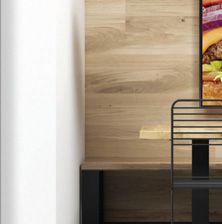
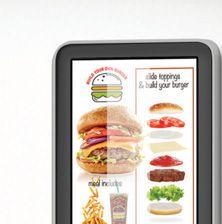
Investing in the right commercialgrade digital signage is a strategic move that may not be right for every operation, but for quick serves, fast-casual restaurants, and brands supporting many fran-
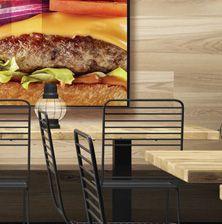


to change or update content quickly.
“At the beginning of the pandemic, so much was changing,” says Gary Kurtz, vice president of sales and marketing at The Howard Company. “Restaurants that had digital could give their customers updates on their hours and other impor-
ment of screens and digital signage in the back of the house for crew communications has become increasingly popular,” says David Vance, vice president of QSR at Mood Media
For example, digital signage in the back-of-house might look like a motivational message from the general manager, an announcement from corporate, or a clean, easy-to-read way to display schedules. It can be used for inventory pur-
Chipotle, it could be a “digital make line.” Instead of preparing orders with extensive customizations from printed paper receipts, Chipotle uses digital signage that displays dynamic food prep instructions to the frontline workers making the food. Not only is this more eco-friendly since it uses less paper, but there is also less room for human error because the instructions are clear, consistent, and out of the way of
“Digital signage is the most practical and effective option in most cases because it’s ubiquitous and easy to read.”LG Business Solutions USA LG BUSINESS SOLUTIONS USA






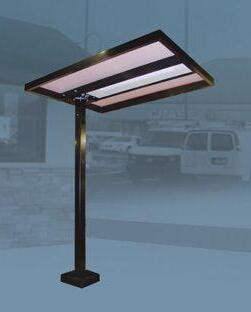
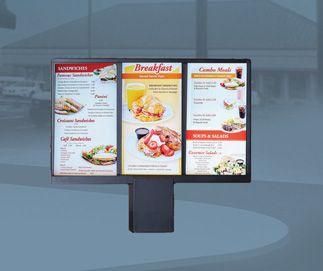



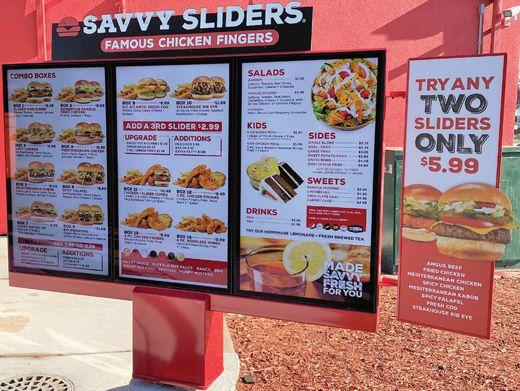
food ingredients where they could get wet or stained.
“We’ve also seen back-of-house integration with mobile delivery apps,” says Sara Grofcsik, senior director of U.S. sales, display division for Samsung Electronics America . “With a back-of-house display, the crew can easily see and track where drivers are on their route to the store to pick up orders.”
ness of your customer,” says Chris Riegel, founder and CEO of STRATACACHE . “Every visit to your restaurant can be unique and tailored. With a combination of digital display, sensors, and AI, your customers will be served an experience that’s relevant, and this relevance is driven by data and insights.”
When paired with drive-thru camera vision that reads and recognizes the
menuboard with healthy choices. Another interesting technology is opt-in geofencing and geotargeting that generates marketing messages targeting smartphone users.”
Self-service kiosks have been on the rise for a few years, and, like other contactless ways of doing business, they’ve proliferated during the pandemic. As
Arguably the most important reason for quick-serve restaurant owners to invest in digital signage is to increase sales. Digital menuboards withalized suggestions to customers that generate more revenue for the restaurant.
Personalization of the consumer experience is a monumental opportunity for operators to increase sales and loyalty. With “smart” digital menuboards, conditional inputs on the back end of the system allow menus to be edited and customized in real time, using conditions in and around the restaurant’s physical space, queue length.
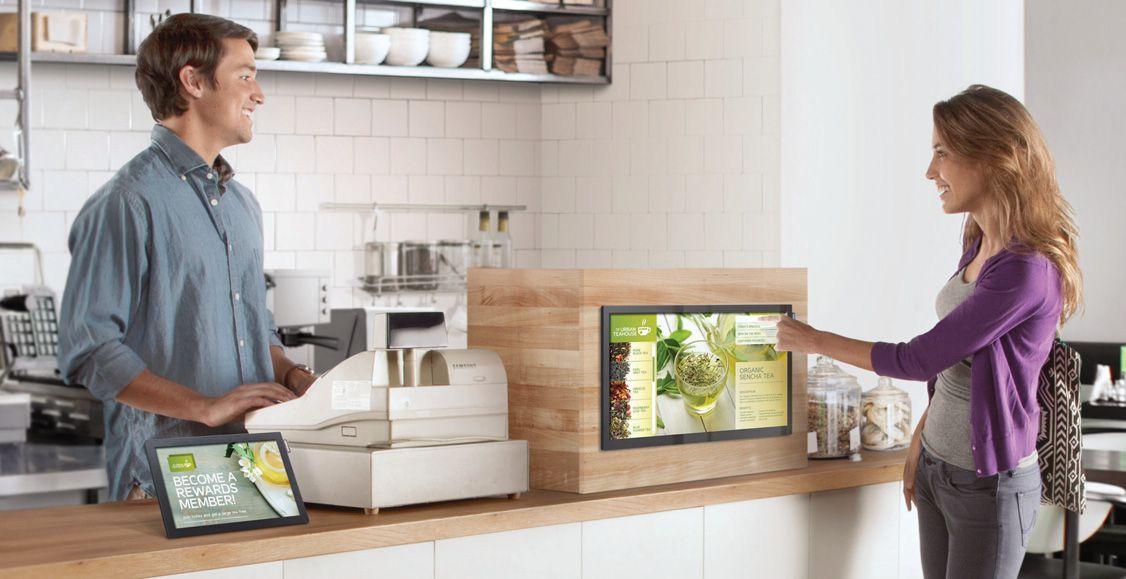
“Using this data combined with guest insights, you can have complete aware-
license plates of repeat guests and integration through a restaurant’s native app, AI can not only customize, but also anticipate a customer’s needs. Permission-based screen messages targeting customers before order placement creates new opportunities for the business and the customer to get exactly what they want from the transaction. For the business, they get covtargeted messages that they are more likely to engage with and actually use.
“Instead of targeting Customer A with orders, for instance, AI can take this a director of Central region for Peerless-AV restaurant’s app, it may detect poten-
to see more indoor touch kiosks, which several ways. First, they’re safe, convenient, and allow the customer to order whatever they want without judgment. Guests can peruse promotions and order food exactly the way they want it, which increases order accuracy and check sizes. And importantly, kiosks are helping operators deal with the labor crisis while also providing valuable analytics. According to Harvard Business Review, self-service kiosks increase sales across practically every industry they touch, including restaurants, retail stores, banks, theaters, and even liquor stores. Kiosks are also moving outdoors to help inform guests and as ordering stations for walk-up customers.

“Restaurants realize the need to communicate order status and wait times with their pick-up customers,” says Robert Heise, executive vice president and general manager for Global Display Solutions
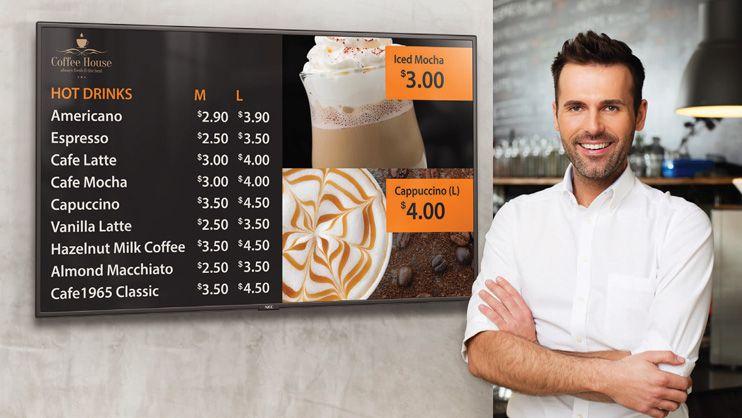
touch kiosks that are tied into the pointof-sale system, especially for operators with robust takeout operations.”
Moving forward, restaurant leaders will see new uses of digital signage in the quick-service space—and the resurgence of old favorites. QR codes have made a big comeback during the pandemic, bringing digital signage messaging directly to guests’ mobile devices.
“Augmented reality will also gain traction in coming years, which should help forge deeper connections between business and consumers,” says Kevin Christopherson, director of product marketing at Sharp NEC Display Solutions. “We will also see the onset of triggered con-
tent, meaning more sensors, people-counting technology, and motion detection to convey safety information and control crowds.”
ROI and brand awareness, expect to see digital displays used in innovative ways inside and outside the restaurant. One such example: highlighting social media feeds in the drive thru or inside the store.
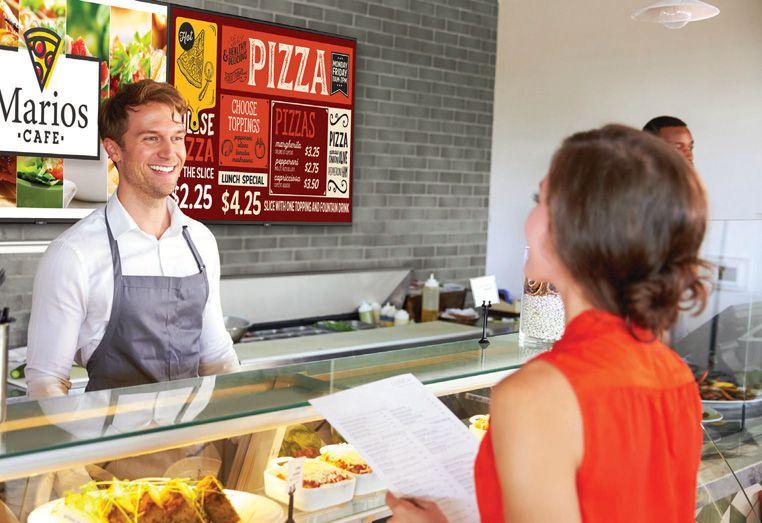
“Millennials will soon be the largest consumer base and they are very engaged
more on fast food than any other. We expect quick-serve and fast-casual brands to use social media to further engage with their audiences to keep them entertained and interested.”
To bring all this exciting new content to life, look for bigger, brighter displays, such as eye-catching video walls and vertically-oriented displays. Before COVID, signage was much more advertorial, with -
encing sales behavior. Now, much of restaurant signage focuses on information in entrance ways or faces outward into parking lots. Additionally, since signage is such an important part of a well-thoughtout digital strategy, it’s critical it can be seen clearly at any time of day.
“Aiding this goal are new form factors and physical enhancements,” Smith says. “Businesses are taking advantage of higher brightness signage that’s viewable virtually anywhere—even under bright sunlight—and free-standing digital signage that’s adjustable for changing layouts. options that can be charged overnight and wheeled out for the workday.”
One bright spot amongst the pandemic embracing technology. Digital signage can completely revamp the brand experience and customer journey.
“Over the last two years, customers have become acclimated to websites, apps, and ‘visual ordering,’” Vance says. “Digital signage is a great conduit for operators to create an impactful and meaningful way to inform, entertain, promote, and inspire both consumers and employees.” SC
“Augmented reality will also gain traction in coming years, which should help forge deeper connections between business and consumers.”



















Day-to-day challenges like labor and supply chain disruptions can put the drive thru experience in jeopardy. STRATACACHE technology delivers proven reliability and one-to-one personalization for drive thru success at scale.



STRATACACHE powers 750,000+ digital menu boards globally Schedule a technology needs check up with our restaurant tech team.
www.stratacache.com/QSRtech











STRATACACHE provides a full scope of drive thru technology including:











































•Smart digital menu boards


•Real-time content management









•Drive thru personalization



•Mobile integration





•Sensor-ready outdoor digital menu boards

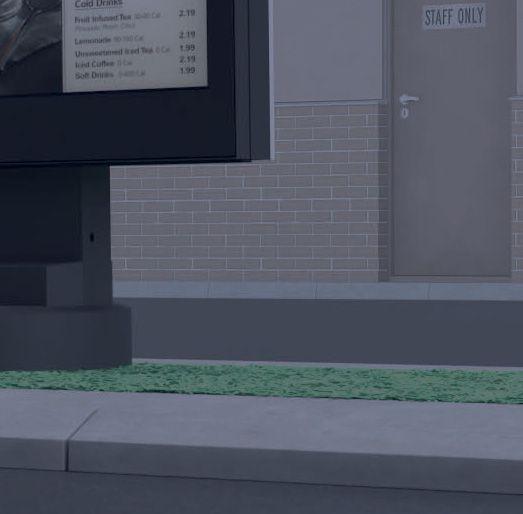
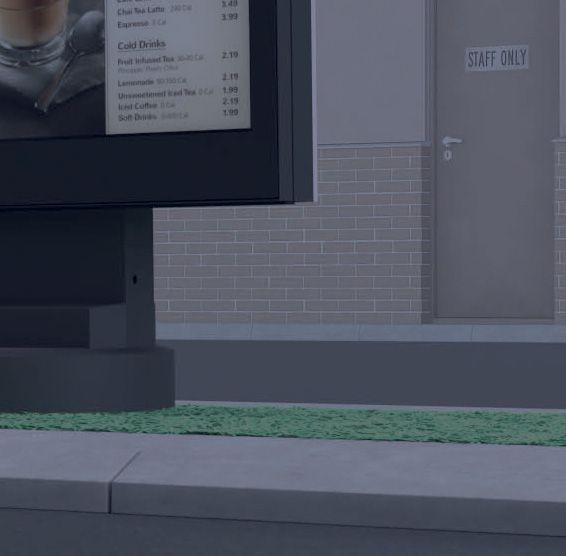
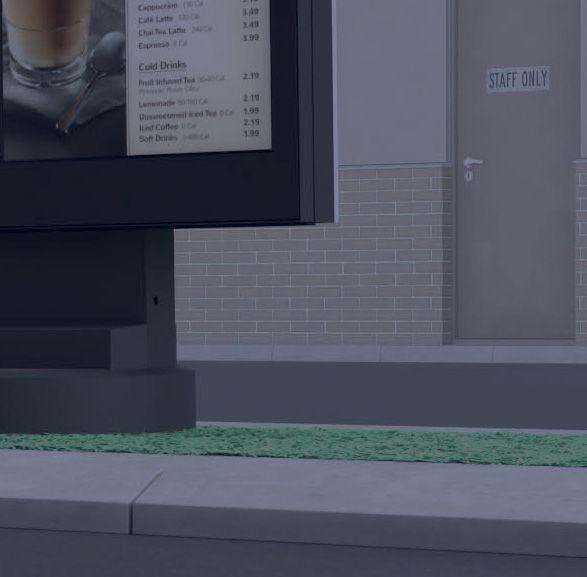
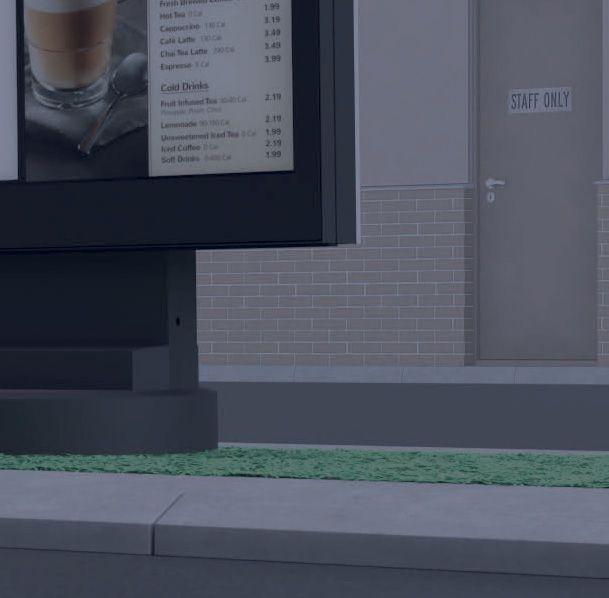

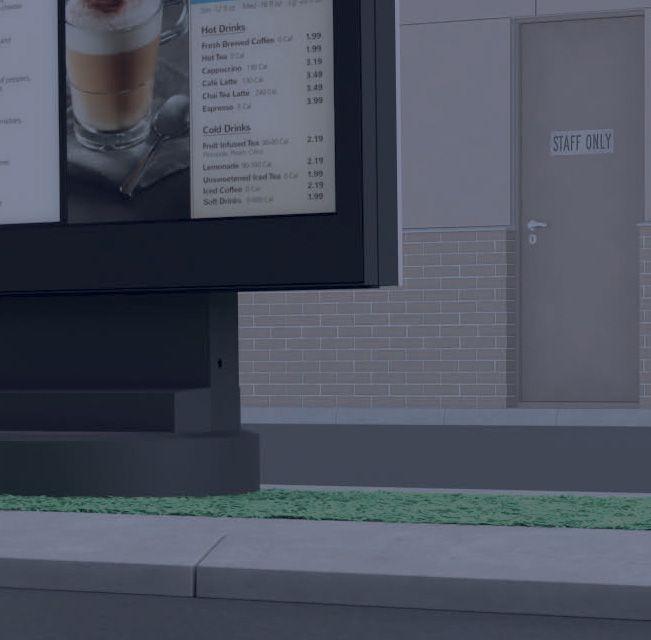
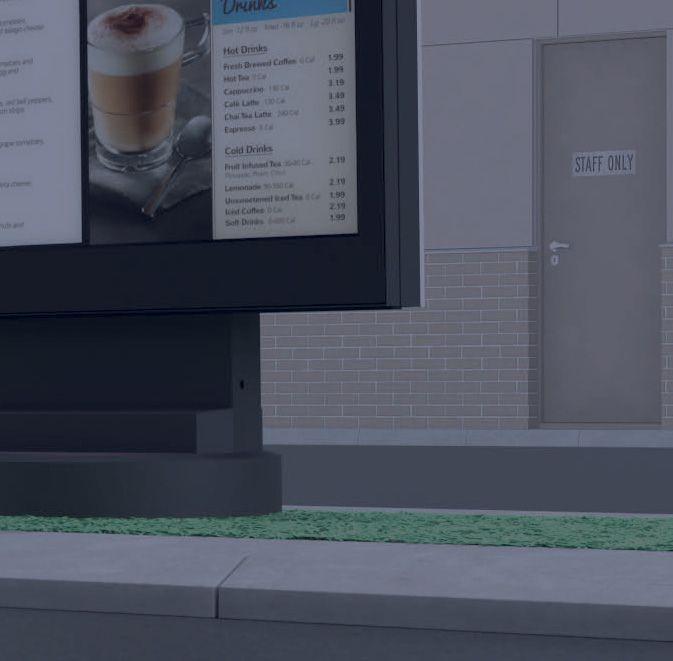
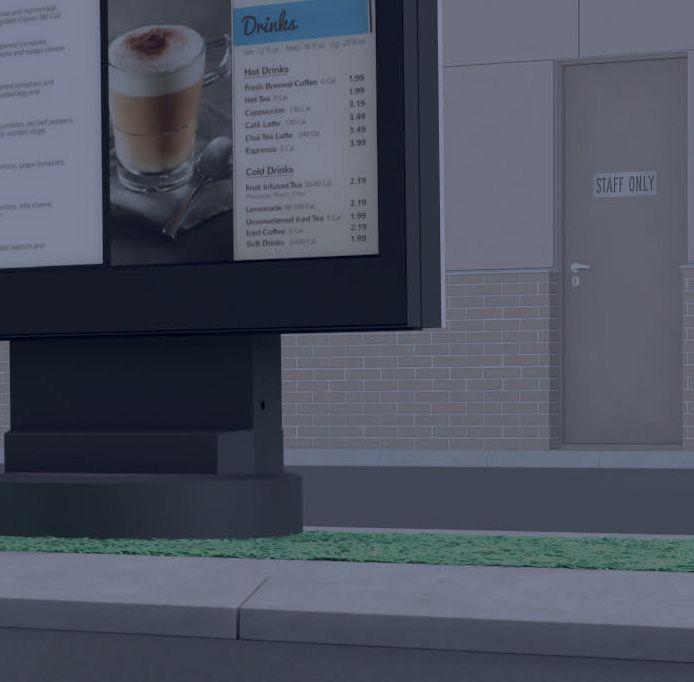
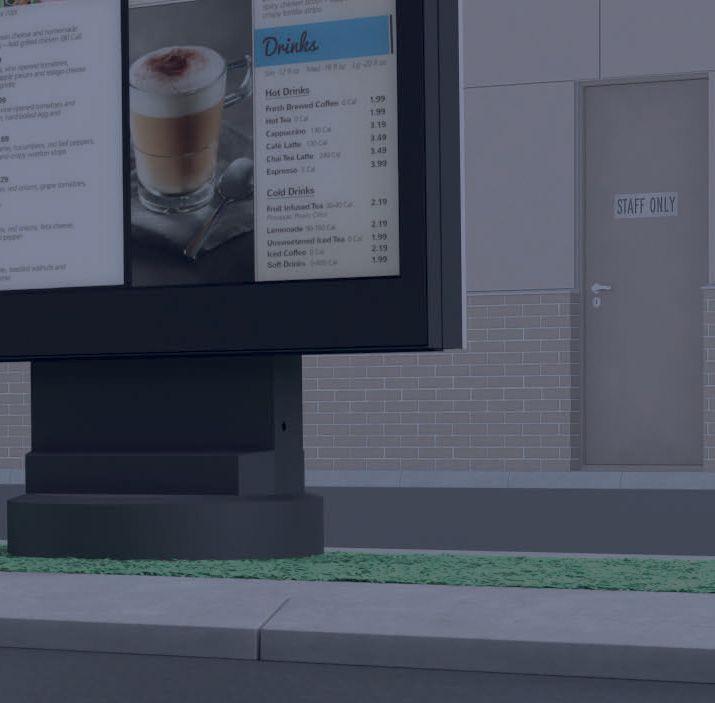
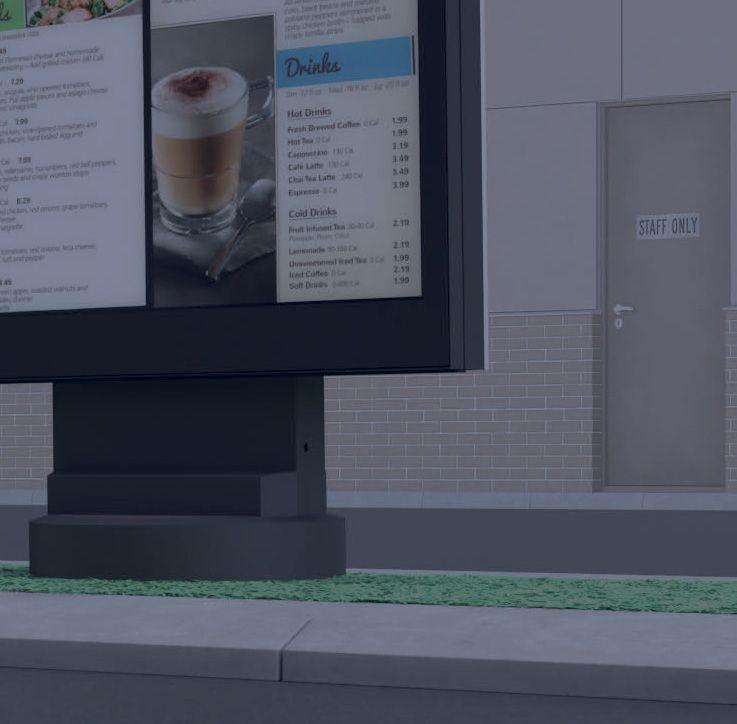

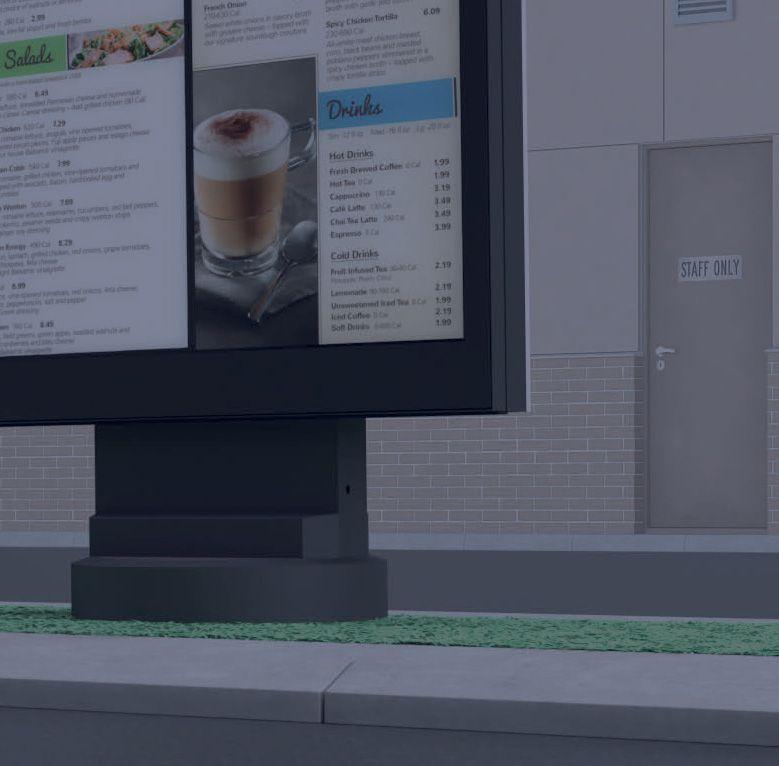
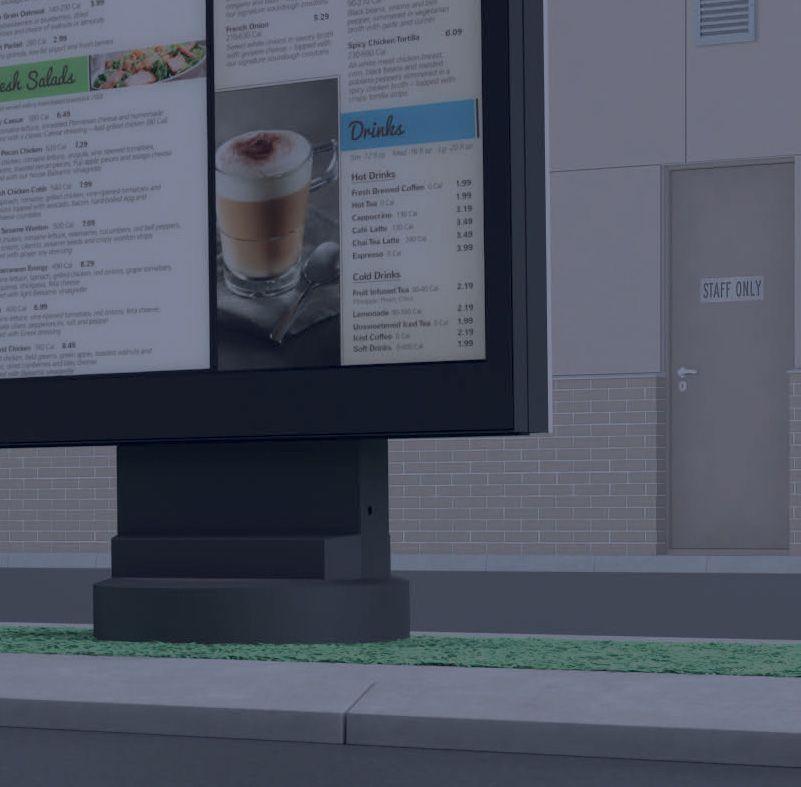

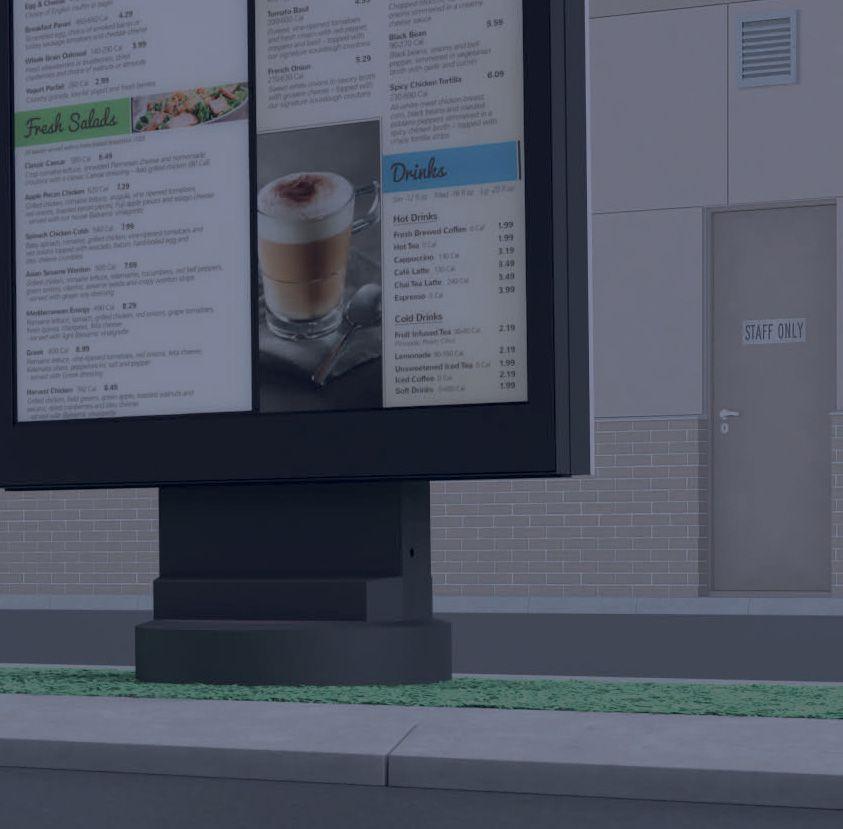
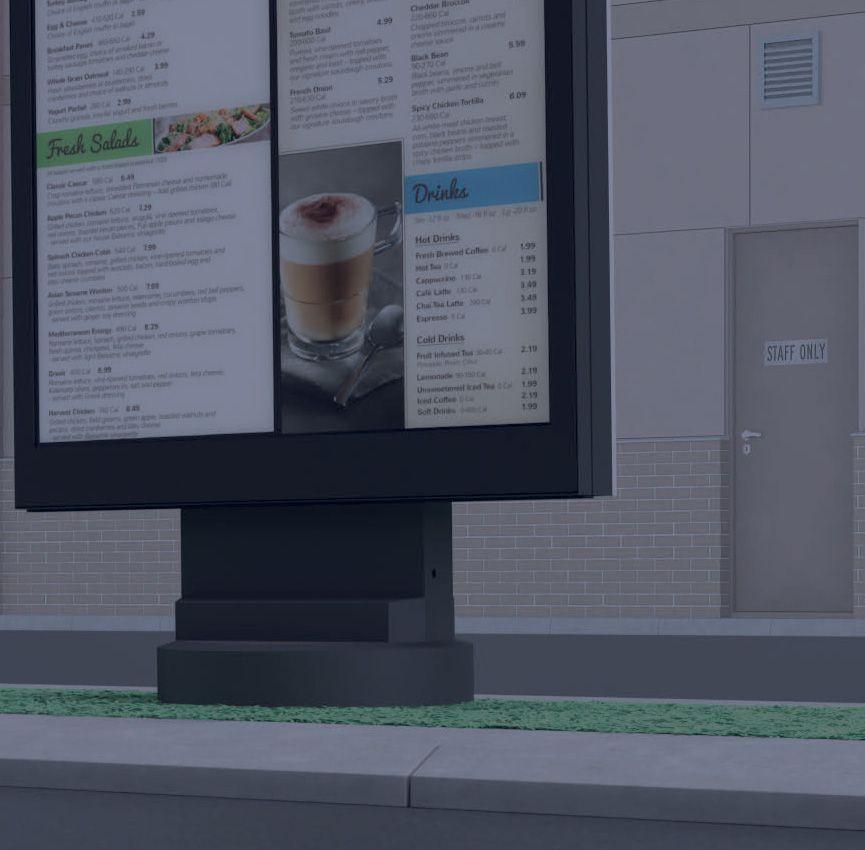


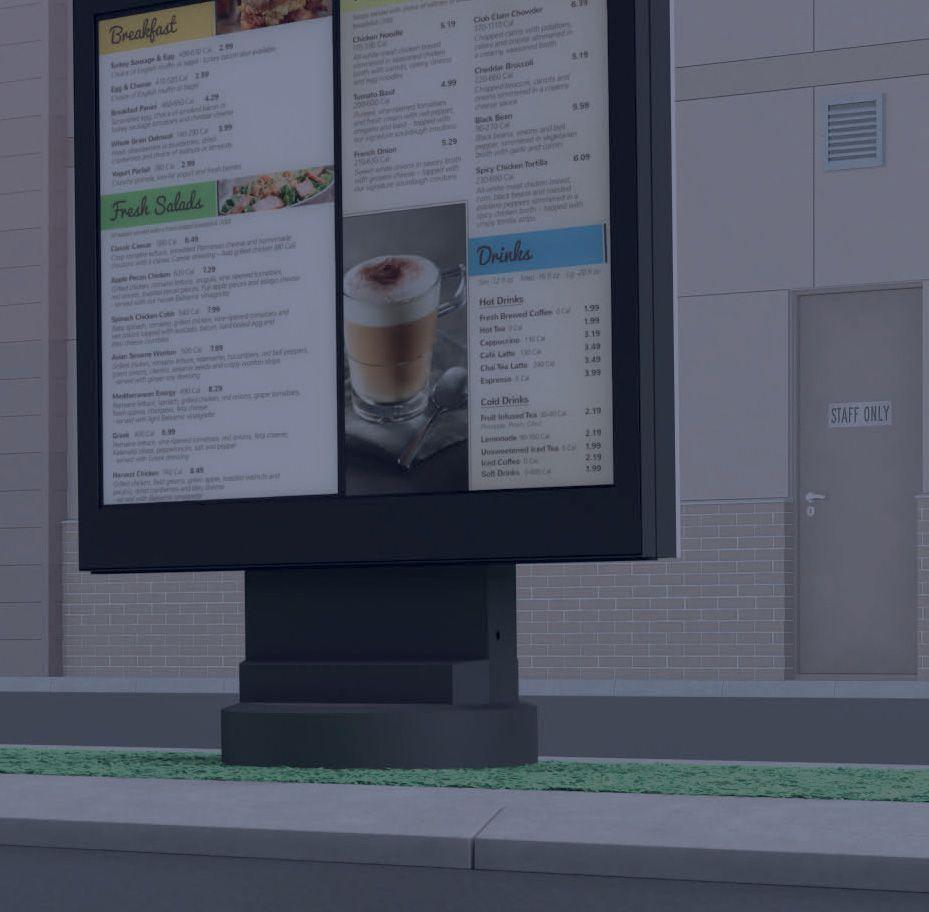
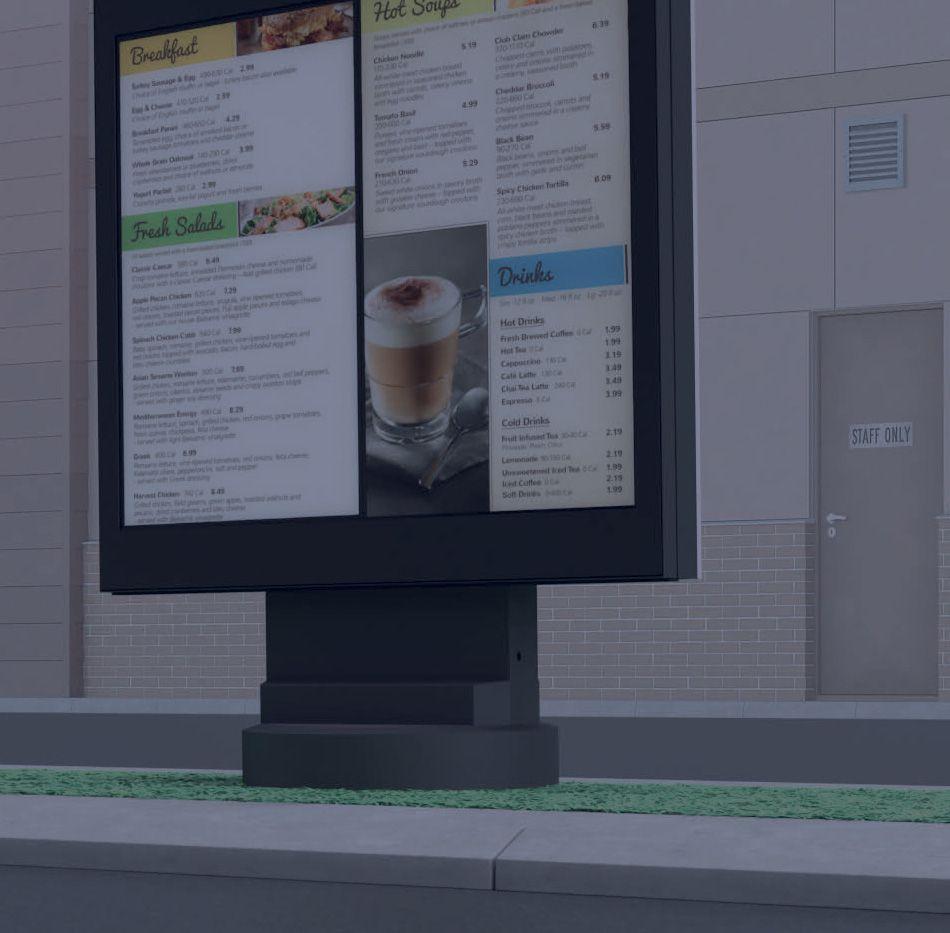
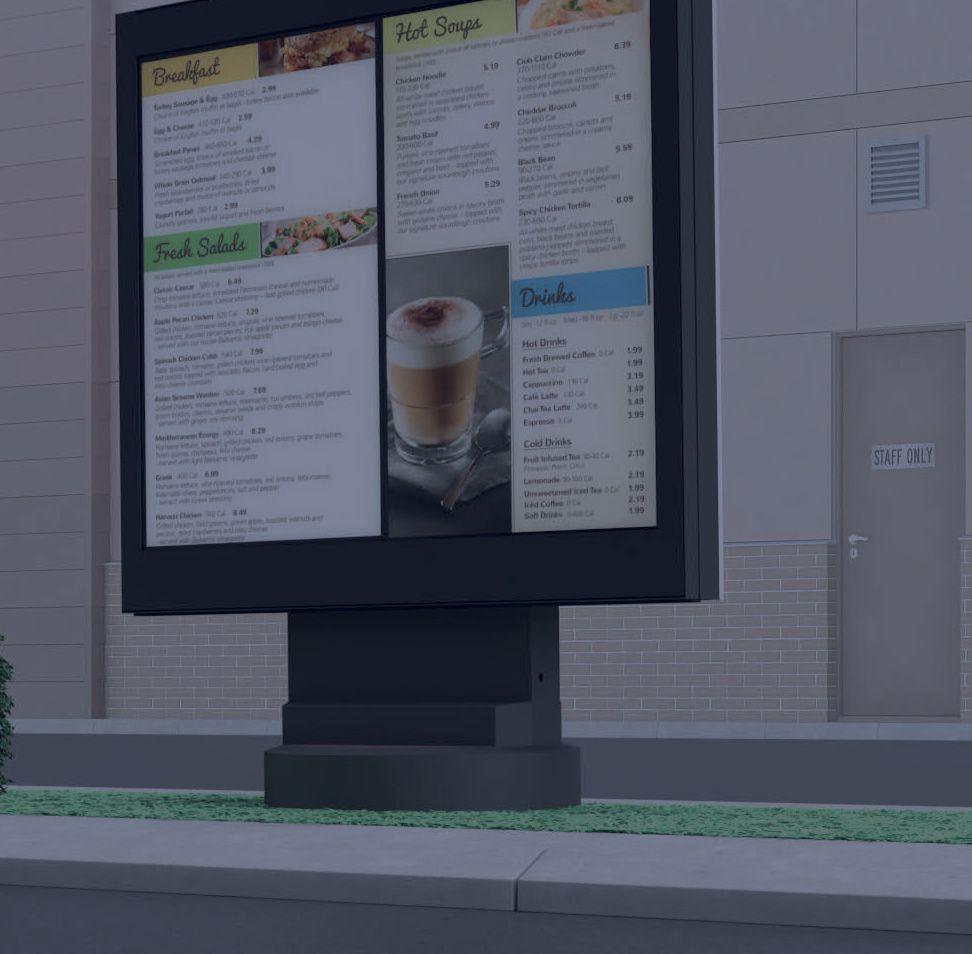
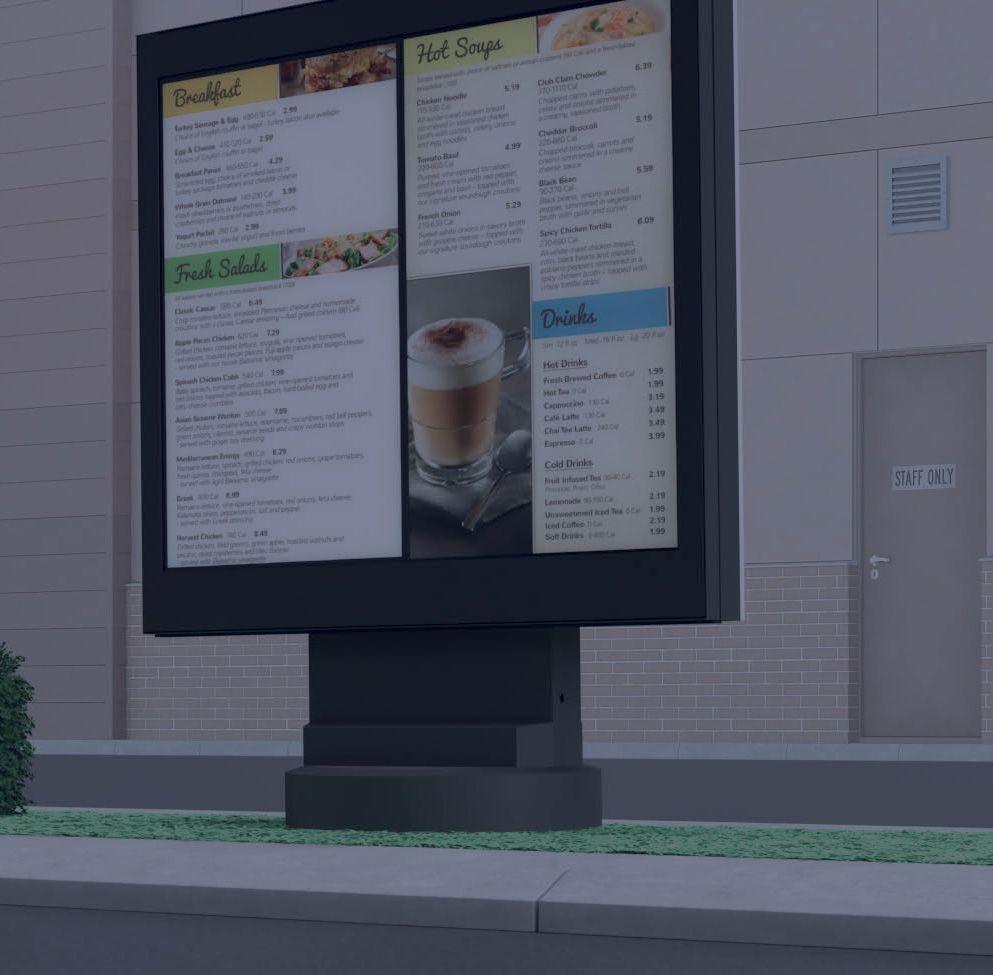
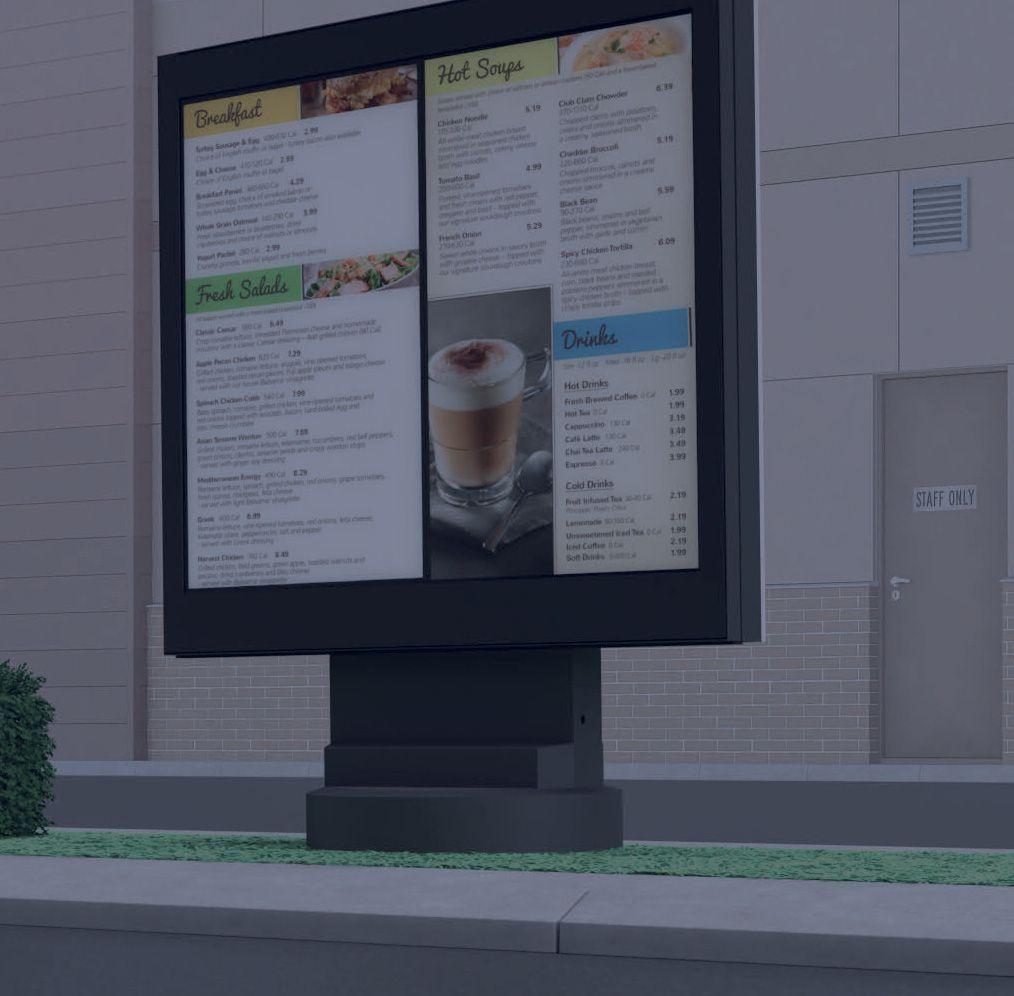






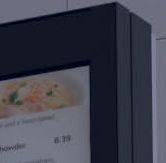

















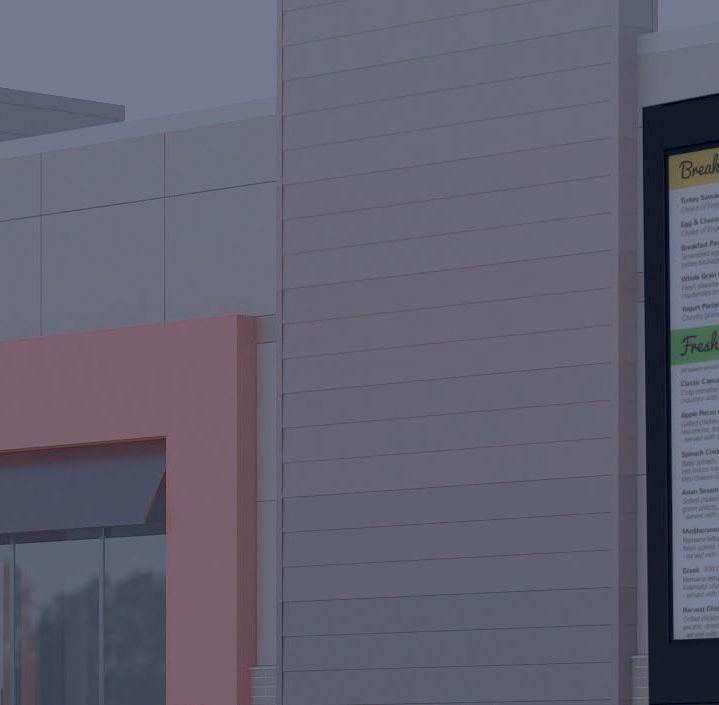
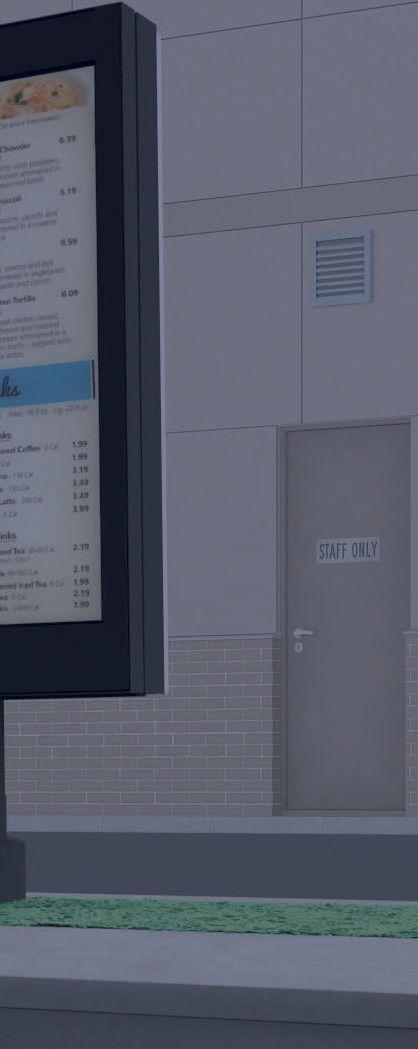
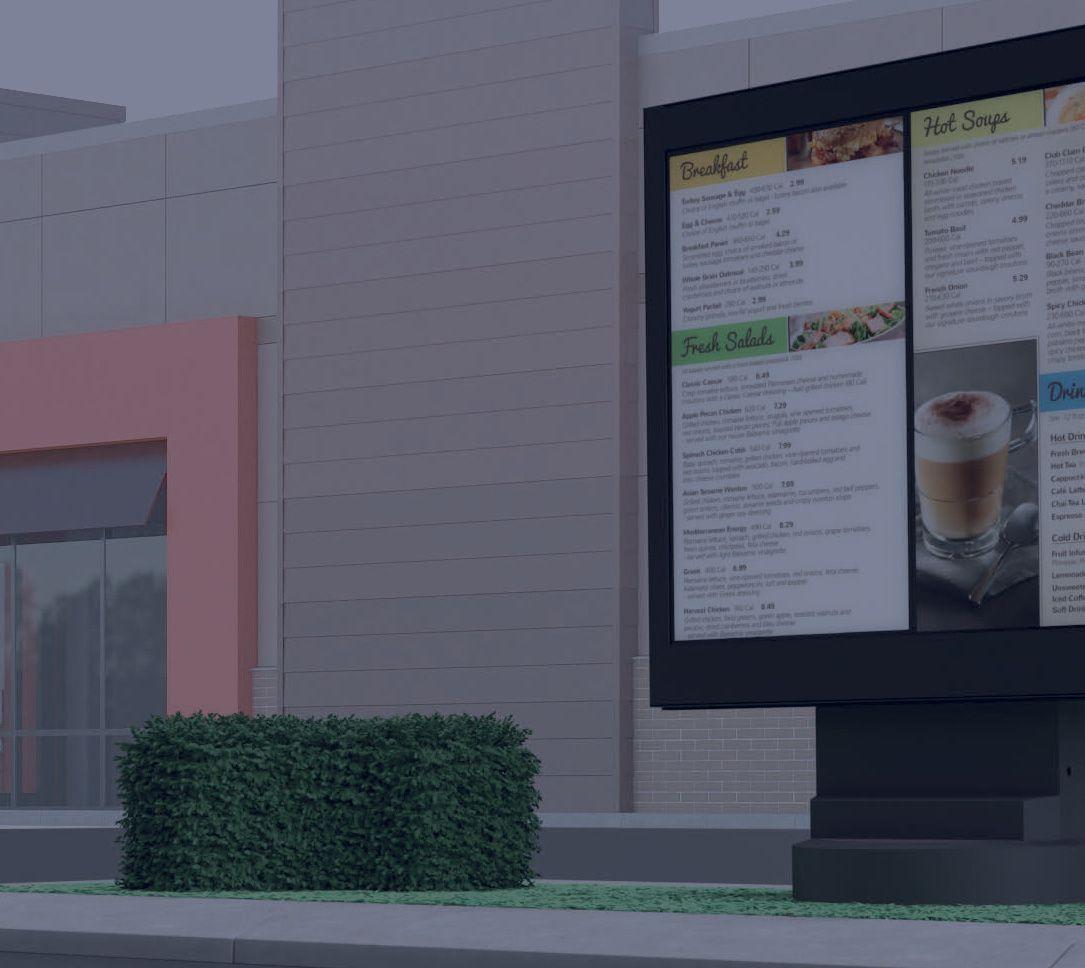
•Smart pickup solutions

From indoor self-order kiosks to largeformat displays that beckon customers from the road, restaurant operators are fully embracing digital signage. No area, however, has seen more digital improvements than the drive thru.

in digital signage pre-pandemic bene-
visible safety messaging, quick changes to menu items and their availability in response to supply chain challenges, or tailoring menu presentation to increase the throughput of customers as drive-thru demand increased,” says Tim Knoblanche, Coates Group
essential part of keeping quick-service restaurants open during lockdowns—in many cases, it was the sole way to serve customers at stores across the country.
70 percent of quick-serve restaurant sales,
and created more demand to use digital signage technology.” says Eric Symon, vice president of Panasonic System Solutions Company of North America. “It became even more critical to reduce wait times and be
informational to the customers’ buying
which forced restaurants to improve drivethru operations. As COVID raged on and new, ever-evolving guidelines, digital signage emerged as a logical solution.
“A lot of operators have updated their drive thrus from static to digital—not only
“It became even more critical to reduce wait times and be informational to the customers’ buying experience.”

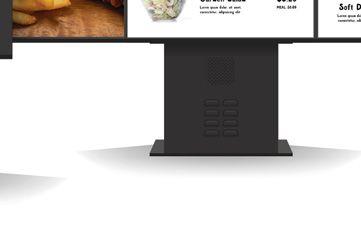
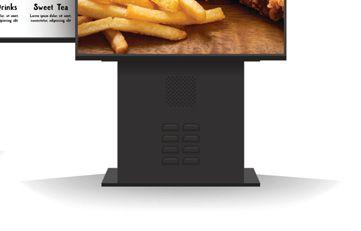


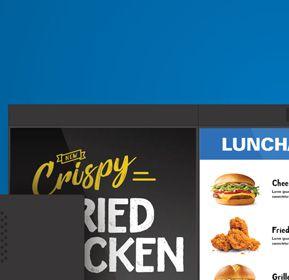
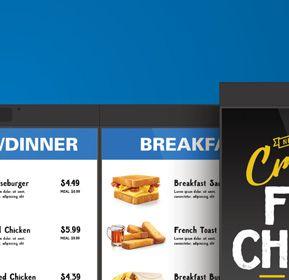













when there are menu changes (for dayparting and out-of-stock items), but to communicate with guests about new store hours or operational changes,” says Sara Grofcsik, senior director of U.S. sales, display division for Samsung Electronics America
One of the main points of communication: closed dining rooms. In order to make up for lost revenue due to closed
“With modern technology, outdoor digital menuboards are an extension of the lobby; customers are able to have a similar experience outdoors as they used to have indoors, but with many additional feaand marketing director at Acrelec one thing that remains the same is the main goal of the drive thru, which is to deliver a great customer experience.”
options. A common cause of drive-thru fatigue at the order station.
“Operators should not overlook the value of digital presale boards,” says CJ Mays, director of design and manufacturing at Uni-Structures
nity engagement and drive customers to decisions before they get to the point of ordering.”
When too many products appear on a digital menu, restaurants face a doubleedged sword. First, the customer takes longer to choose and order; second, increased time required to prep certain items leads to more waiting cars—which racks up precious additional seconds in the drive-
orders. When faced with this obstacle, owners and operators can reduce the time it takes a customer to order by showing only lower rate-of-prep menu items on the digital signage.

“Using a combination of data and AI, digital signage can suggest a smaller number of items that it knows are less complicated to prepare in the kitchen,” Denolle says. “On the contrary, when there is no line at the drive thru, you can display premium products that take longer to prepare on the menuboard to entice customers to purchase.”
the industry pivoted operational focus to drive thru, pickup and delivery.
ital signage technologies such as order menuboards ,and pre-sell promotional displays,” says Ken Neeld, president and CEO of Delphi Display Systems
drive sales, and improve the overall customer experience.”
As a result, more restaurant owners are investing in innovative technologies that enhance the drive-thru journey. Digital signage allows quick-serve brands to deliver dynamic content for their customdards they support.

signs is that they help decrease drive-thru wait times by helping clients make quicker decisions. Clear, easy-to-read menu content—particularly when paired with col-
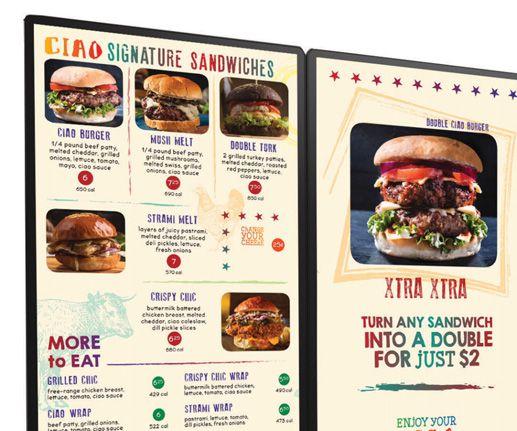
cars, generate higher revenue, and shorten the average Total Time In Lane ( ). By connecting to the brand’s loyalty app, digital signs can take customer service to the next level by identifying incoming guests and displaying their favorite options.
to a menuboard helps with order accuracy, and, therefore, ROI. As the guest places the order, items appear on the screen for er’s order in real time, errors are caught before the order is placed in the POS system and the kitchen starts making the wrong food. Catching errors early in the process improves accuracy and reduces the food waste associated with remaking orders at the pickup window that were placed inaccurately at the menu order
“Digital signage can suggest a smaller number of items that it knows are less complicated to prepare in the kitchen.”

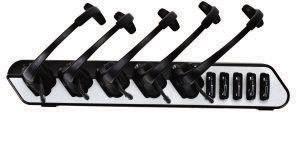




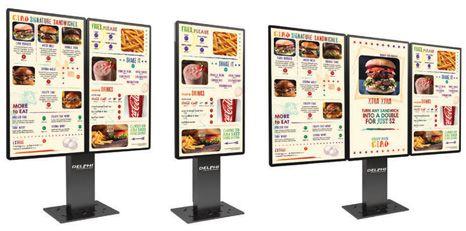


Delphi’s Insight Track™ timing systems provide QSRs with actionable real-time speed of service data in the drive-thru.

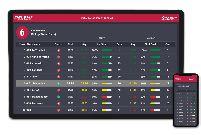
that need attention to keep the drive thru running at maximum based competition ranking leaderboard that allows multiple stores to compete on a variety of performance metrics.
Delphi delivers a wide variety of indoor and outdoor digital available in both LCD and LED formats.
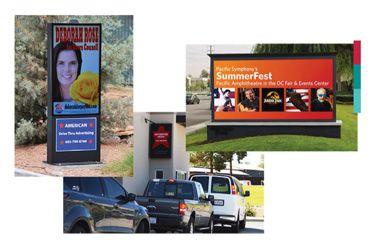


Delphi’s indoor and outdoor digital menu board solutions are designed for QSR and Fast Casual business owners seeking to modernize their restaurant with full control over dynamic menu content via our Insight Engage™ 3.0 cloud-based content management system. The system supports on-screen order most point-of-sale systems. Engage 3.0 has been designed to be and programming requirements. 714.825.3495
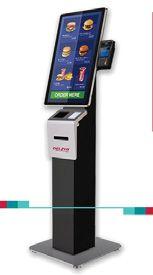
video option to enhance communication with your customers.
Providing clear communications is key to quality customer experiences and productive teamwork in the drive-thru. Delphi as a key component of our total drive thru technology package.
Delphi’s Visera™ line of Interactive Smart Kiosks serve as ideal digital solutions for QSRs seeking to provide interactive engagement and self-service options for their customers or employees.

taking process also reduces speed of ser-tomer experience. -
added as a digital component to a static
using full-screen takeovers to advertise
tors upsell seasonal or promotional items
tive, and sustainable to update content in real time and across several locations.
cal menuboard prints requires at least one
addition of a ‘mobile lane’ to promote
Melitron
ized experiences. Having a dedicated lane
digital signage can solve.
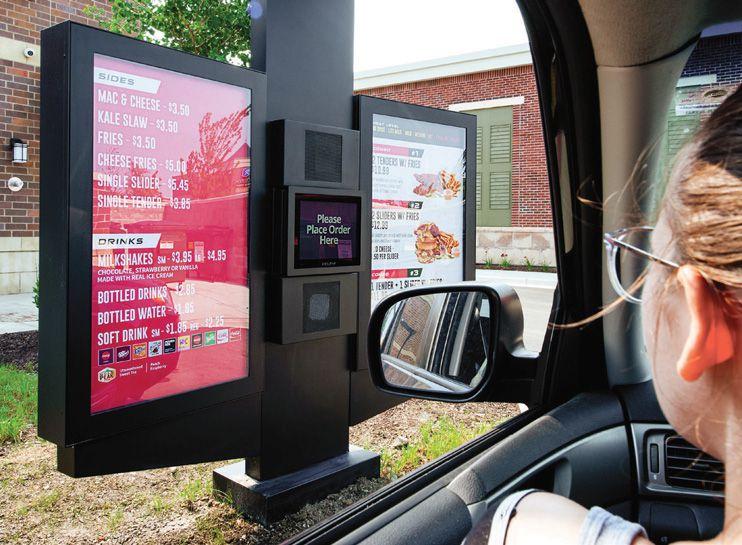
“The deeper the technological integration at the drive thru, the better.”DSA Signage
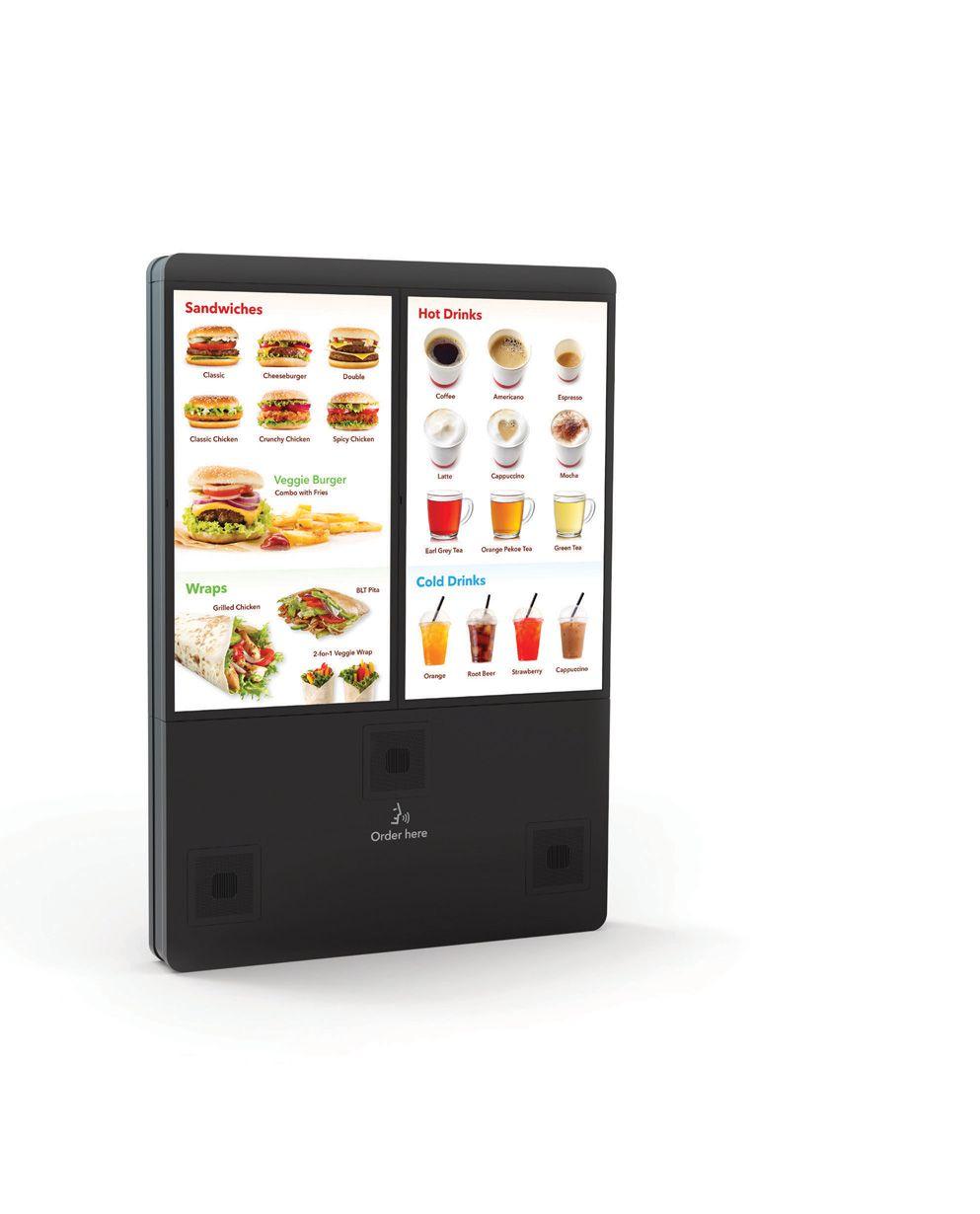

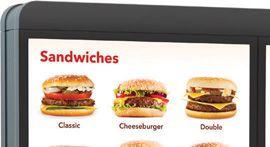
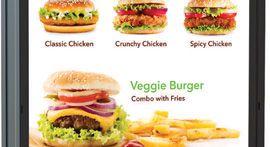

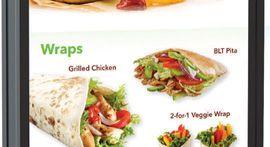





































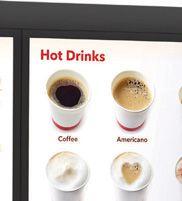




The psychological aspect of digital signage is arguably the most important thing to consider when enhancing the customer journey. Modern society revolves around technology and instant gratification. Everywhere they go, customers expect digitalization, personalization, and to be coaxed along the consumption process.
“Strategically placed signage guides the innovation and marketing director at Acrelec. “For quick-serve restaurants, allo-
the customer to determine their order and for the workers and kitchen to prepare their order is essential for a positive customer experience.”
Promotional and informational digital with the customer throughout their time at the restaurant. It can also help reduce perceived wait times, resulting in a more pleasurable brand experience.
“You want to engage the customer that is waiting as quickly as possible,” says Eric Symon, vice president of Panasonic System Solutions Company of North America . “You can start to help them in their decision-making process, while telling the brand story you want to tell.”
Rather than a static poster with a new product, brands can use animation or captivating creative imagery to help sell a-
nity, or make a playful connection, which engages the customer or encourages them to explore further.
how it can impact customer decision mak-tor of Central region for Peerless-AV.
menu options, LTOs, and promotion of new items to life, presenting options in a way that appeals to customers and takes into account their emotions or purchasing activity to drive up sale opportunities.”
Screen placement is key—customers naturally gravitate their gazes above the counters so typically menuboard systems contain not only menu items but also videos
showcasing specials, new items, and more.
quick and targeted decisions that could lead to higher sales of items that either need to be sold or are testing the market,” says Kevin Christopherson, director of product marketing at Sharp NEC Display Solutions
In the drive thru, screen placement is a critical aspect of an outdoor signage pro-

have high-brightness displays that can be seen in all kinds of weather.
“Pre-sell displays located at the point prior to the menu can be used to engage the customer with new products, special promotions, loyalty programs, or branding content that is designed to inform the cus-
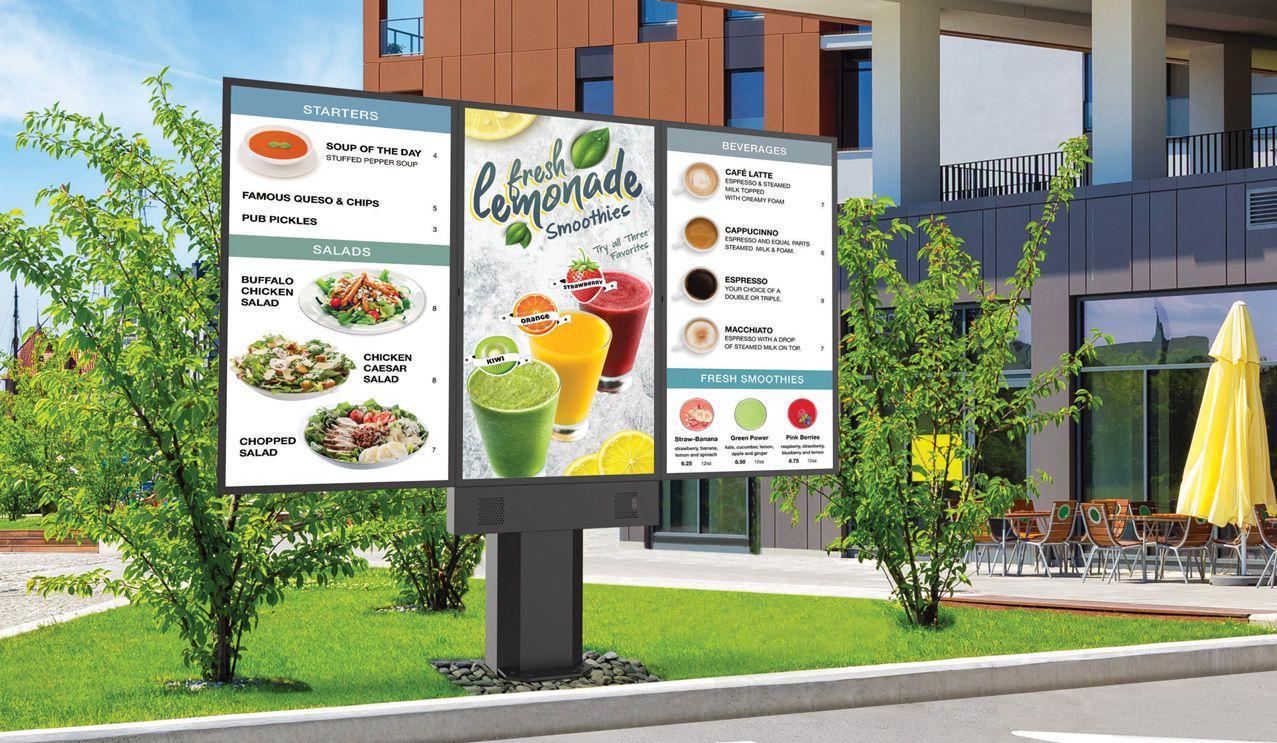



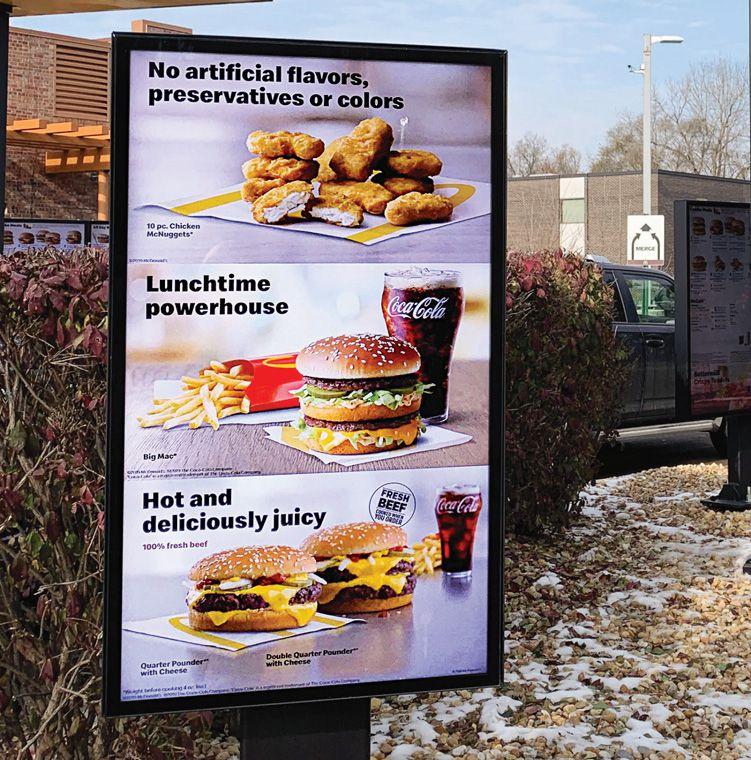
“The key is to keep it simple, yet meaningful.”
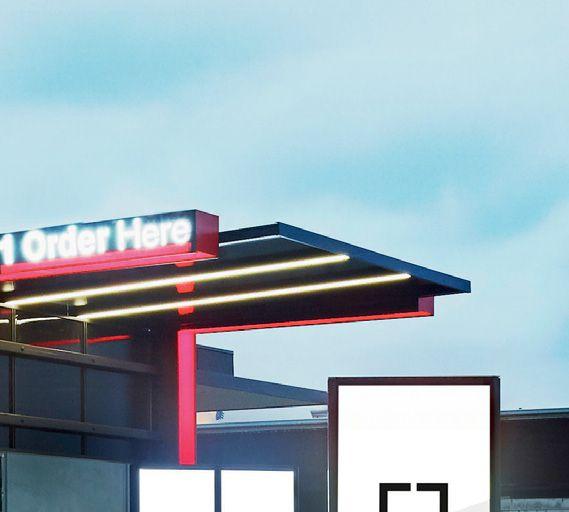
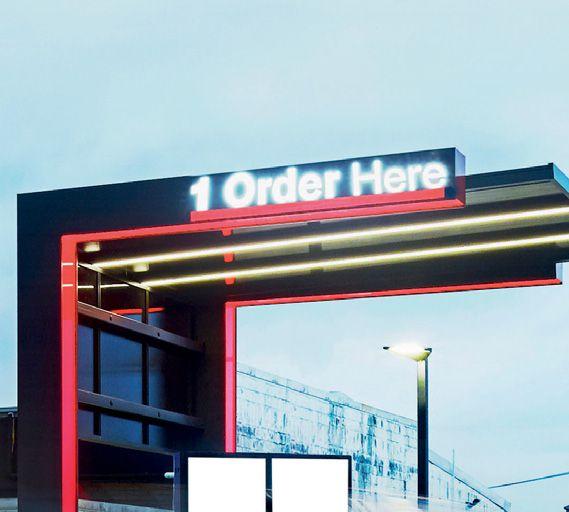

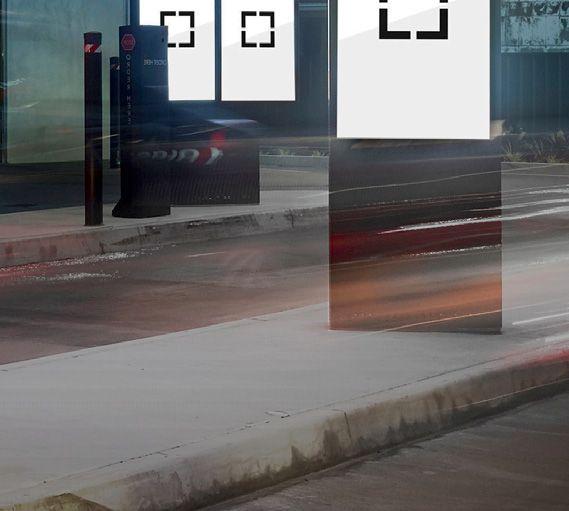
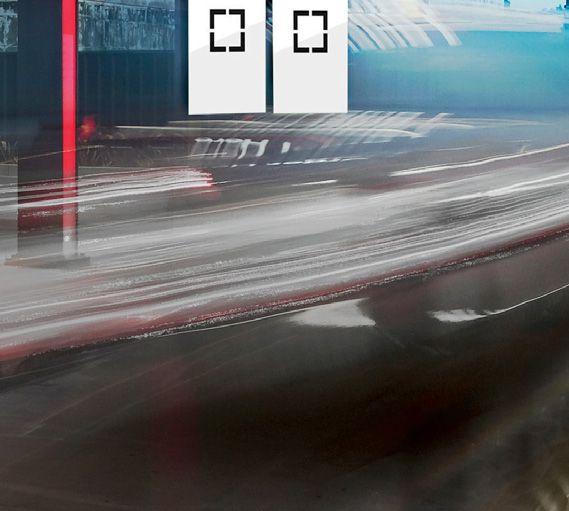



1327 W. Washington Blvd.
Chicago, IL, 60607 (877) 334-9737
acrelec.com
Acrelec is a global technology company focused on reinventing the customer experience for restaurant and retail brands. Leveraging decades of software, hardware, and service expertise, we develop and integrate new platforms that increase customer engagement, optimize efficiency, and improve operations for the world’s leading smart stores.

112 North May St. Chicago, IL 60611 (312) 374-1365
coatesgroup.com


Coates Group is a global technology and digital merchandising solutions provider creating immersive experiences for some of the world’s leading brands. Our proprietary content management system, Switchboard, enables dynamic and personalized customer journeys across our range of innovative hardware products—a suite of indoor and outdoor digital solutions, self-order kiosks, and more.

3550 Hyland Ave.
Costa Mesa, CA 92626
(800) 456-0060
delphidisplay.com
Innovator of best-in-class consumer engagement and business optimization solutions, Delphi Display Systems has been a technology leader in the quick-service restaurant industry for over 20 years. Offerings include indoor and outdoor digital menuboards, order confirmation displays, drivethru timing systems, cloud-based content management systems, and real-time performance ranking leaderboards.
16961 Central Ave. Carson, CA 90746
(866) 333-0670
drivethru.dsasignage.com/buildyourown
DSA Signage is a U.S. manufacturer of UL-listed signage solutions, including indoor and outdoor, digital, and illuminated menuboards. Our inhouse team of engineers can work with an existing design or create a new solution, using only the best components for extended durability and offering competitive lead times.


5217 28th Ave. Rockford, IL 61109 (815) 713-2439
displays.gds.com
For more than 40 years, GDS has been a technology leader and leading manufacturer of LCD and e-paper display solutions for indoor and outdoor quick-service applications. GDS’s position as the chosen partner of some of the world’s leading blue-chip companies is achieved and maintained by providing best-in-class solutions, products, and services.
1375 N. Barker Rd
Brookfield, WI 53045
(262) 782-6000
howardcompany.com
The Howard Company is the nation’s leader in digital menuboards and drive-thru equipment. We provide digital indoor and drive-thru menu systems, illuminated and non-illuminated menuboards and marketing products, and permanent and semi-permanent POP retail merchandising displays. We connect our customers with their customers.


2000 Millbrook Dr. Lincolnshire, IL 60069 (888) 865-3026
lg.com/us/business
LG Business Solutions USA serves commercial display customers in the U.S. lodging and hospitality, digital signage, systems integration, healthcare, education, government, and industrial markets. With its dedicated engineering and customer support team, LG Business Solutions USA delivers business-to-business technology solutions tailored to the particular needs of business environments.

10000 Alliance Rd. Cincinnati, OH 45242 (513) 793-3200
lsicorp.com/markets/qsr
LSI Industries is a leading provider of digital solutions and program implementation for quick-serve restaurants. Quick-serve restaurants looking to grow their business, reduce wait times, and provide exceptional customer experiences turn to LSI. As an extension of your team, we bring vast experience, creativity, and capabilities to every project.
404 Silvercreek Pkwy. North Guelph, Ontario, Canada N1H 1E8 (519) 763-6660
melitron.com/digital-signage
Melitron provides indoor and outdoor digital signage and menuboards for some of the world’s top quick-service restaurants. Bright, sleek, durable multimedia menuboards and digital signage featuring Samsung and LG HD displays are fully customizable in technological design, color, graphics, and lighting.
2100 S. IH 35, Ste. 201 Austin, TX 78704 (800) 345-5000
us.moodmedia.com/qsr
Mood Media is the world’s leading in-store media solutions company dedicated to elevating the customer experience. We create greater emotional connections between brands and consumers through the right combination of sight, sound, scent, social, and systems solutions. We reach 165 million consumers daily at 550,000 subscriber locations in 130 countries.
2 Riverfront Plaza Newark, NJ 07102 (877) 726-2767
na.panasonic.com/us

For over 40 years Panasonic has provided unparalleled solutions to the foodservice and retail industry, partnering with some of the world’s most recognized brands. As a turnkey solutions provider, Panasonic provides your operation with smart food lockers, self-ordering kiosks, POS hardware and software, BOH Solutions, and drive-thru communications.
2300 White Oak Circle Aurora, IL 60502
(630) 375-5100
peerless-av.com
For over 80 years, passion and innovation continue to drive Peerless-AV forward. We proudly design and manufacture the highest-quality products ideal for restaurant applications, including outdoor displays and digital menuboards, dvLED and LCD video wall systems, complete integrated kiosks, and more. Peerless-AV develops meaningful relationships and delivers world-class service.

85 Challenger Rd #6th Ridgefield Park, NJ 07660 (855) 581-6892
samsung.com/quickserve
Samsung’s food and beverage solutions are designed to make the restaurant and in-store experience more compelling. With indoor and outdoor display solutions, Samsung makes it easy to drive customer traffic, boost order size, and streamline back-of-house processes.
3250 Lacey Rd., Ste. 500 Downers Grove, IL 60515 sharpnecdisplays.us/
Sharp NEC Display Solutions of America is a leading global provider of professional and commercial visual technology and digital signage solutions. The company offers one of the broadest visual solutions portfolios in the industry, innovating in LCD displays, projectors, dvLED, 8K and 5G technology, collaboration solutions, IoT, and AI driven analytics.
40 N. Main St. Dayton, OH 45423 (937) 443-0900
stratacache.com

STRATACACHE provides a full scope of technology solutions across mobile, kiosk, counter, and drive thru. Through a combination of smart digital menuboards, sensor systems, and AI, our technology improves the guest experience and loyalty through customization. STRATACACHE is trusted by 7 of the top 10 quick-service brands.

8540 Cobb Center Dr., Suite 100 Kennesaw, GA 30152 (770) 499-2000
unistructures.com
Uni-Structures, Inc. manufactures, ships, and installs drive-thru components to create solutions that will maximize through-put and enhance customer satisfaction.

3420 Toringdon Way, Ste. 400 Charlotte, NC 28277 (855) 936-4251
xenial.com
Xenial (pronounced zee/nee/ul) comes from the ancient Greek word for hospitality, and our namesake drives our obsession to power your enterprise’s hospitality success. Xenial is a single technology platform that offers enterprise-ready restaurant solutions, customer engagement tools, and global reach.
The aftermath of COVID offers an opportunity for restaurants to reinvigorate the on-premises experience.
BY DON FOXFOR DECADES, it was perhaps the most common question asked by quick-service front-counter cashiers:

“Will that be for here or to go?”
That question, which was simply a functional part of the order-taking process, has taken on unprecedented significance in 2022. Today, the number of people responding “for here” is a far cry from what it was before the pandemic, and the degree to which the answer changes in the future will shape the way restaurants are designed and operated for years to come.
When reflecting upon the future of dining rooms and on-premises dining, several questions loom large. Will dinein occasions ever return to what they were, both in the frequency and nature of the experience? Might we go beyond the pre-COVID era and see a renaissance in the dine-in experience? If so, what might fuel that change in consumer behavior? Now, two years after the start of the pandemic, have dine-in occasions peaked, meaning that today’s world represents the new normal?
What makes these questions so difficult to answer is the lack of precedence. There is nothing in the history of our industry that resembles, even remotely, the dynamics that led to the closure of dining rooms across the U.S. virtu-


ally overnight.
The beginning of the pandemic struck the restaurant industry like the proverbial asteroid that led to the extinction of the dinosaurs. In a matter of days, dine-in occasions were vaporized by a combination of sweeping mandates, fear, and uncertainty.
The occasions that remained were off-premises, and the survival of many a species of restaurant depended upon how quickly and how well they could adjust their operational models in favor of a quality off-premises experience.
Quick serves with drive-thrus, delivery programs, and digital channels had a significant advantage in the marketplace. Virtually everyone else was playing catch-up.
But the pandemic would ultimately fall short of a mass extinction event for dine-in occasions. It would be a hyperbole to suggest that the evaporation of on-premises dining was ever a realistic outcome, but it is not a stretch to say that the impact of the coronavirus will resonate for years to come.

The 64-seat question is this: What does the future hold for dine-in occasions as it relates to quick-service and fast-casual restaurants?
While the mass closure of dining rooms has no precedent, we can learn much from the past when it comes to consumer behavior related to on-premises occasions. At Firehouse Subs, we started experiencing a drop in our dinein business in 2013. What was once

more than 50 percent of our business became slightly less than that by the end of 2014. Trends are just that, and they take time to develop, so it wasn’t until well into 2015 that we recognized it as such.
I don’t believe we were alone, be it in the sandwich category or the broader quick-service segment, but what made it more salient for us was the fact that, as a sandwich concept, having more than 50 percent of our business prepared for on-premises enjoyment was a point of differentiation.
Like some others in the industry, we started sharpening our off-premises tools (and it was a good thing we did, as we would have not been in such an advantageous position when the pandemic struck). In my opinion, the answer to what lies ahead rests heavily on understanding the drivers of consumer behavior and the decline in on-premises occasions during the years
leading up to the pandemic. Technology—digital and mobile tech in particular—is at the forefront in terms of bringing about behavioral change.
At the most basic level, e-commerce has created a significant shift in how people spend their time, not just their money. A person’s day, if we were to map it out, is simply not what it used to be. The human experience, driven by more choices than ever before, is also more diversified than it once was.
These forces are powerful—as powerful as any I have seen in my 48 years in the industry. One of the most compelling pieces of evidence: It is not unusual for guests to favor a certain restaurant for off-premises occasions even if they give that restaurant higher satisfaction ratings when dining in.
Can a restaurant evolve their menus, service methods, and technology to tap into these forces and optimize them to drive consumer occasions, whether for
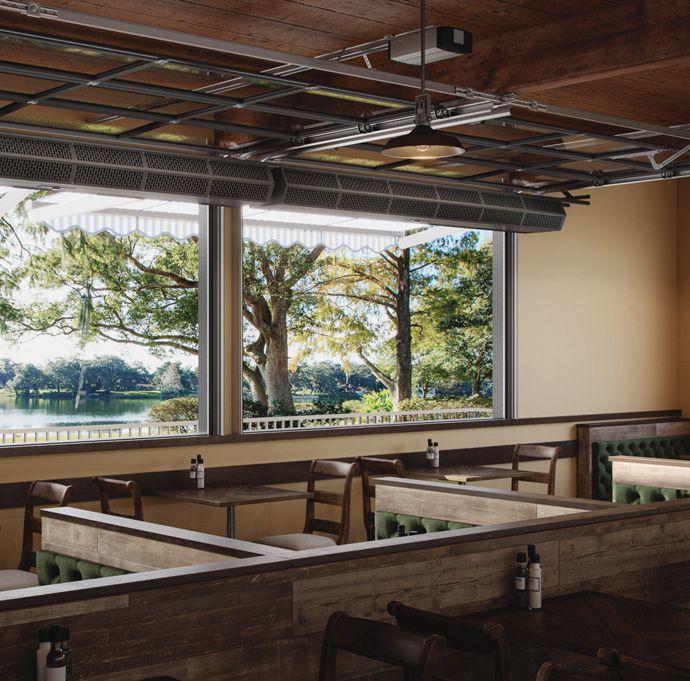
on-premises or off-premises consumption? Certainly.


The COVID-19 meteor did not bring about the death of the dine-in experience. But it did change it, primarily by being an accelerant that brought the consumer to a point they would have otherwise arrived at on their own over a longer period.
In this parable, the only species that need fear extinction is the restaurant operator who fails to adapt in the face of these seismic changes to the way we all live our lives. ◗
DON
THE STRATEGIC GROWTH OF

SUBS. Under his leadership, the brand has grown to more than 1,190 restaurants across 46 states, Puerto Rico, and Canada. Fox sits on various boards of influence in the business and nonprofit communities. He is also a respected speaker, commentator, and published author. In 2013, Fox received the prestigious Silver Plate Award from the International Food Manufacturers Association.
the best representation of our industry; they were opportunities for change. The other piece of this was women coming to me asking for coaching, navigating the political ladder, negotiating for that next big raise, knowing your worth, and moving into a different segment. I realized there was a much bigger need to connect across segments, whether it’s CPG, retail, foodservice, or B2B.
How are you approaching the challenge of achieving gender equity?
As a platform, we’ve really taken a 360-degree approach. Women are represented in only 16 percent of senior executive positions across F&B, and through the pandemic, we see women leaving the workforce at a greater rate than ever before.
Success looks different to every woman, and sometimes it’s just having somebody open a door or make an introduction. If you’re working in a role in which you may be the only woman in the room, having this trusted community to go to, to have those resources and individuals in your circle and rooting for you is key for a successful career.
BY FSR QSREVEN BEFORE THE PANDEMIC led to a mass exodus of women from the workplace, most industries (including food and beverage) struggled with gender parity, especially in leadership. And so a few years ago, Angela Dodd, who has spent her career in the ingredient segment, decided to do something about it.
Founded in 2019, Females in Food is a professional network, talent marketplace, and data-driven platform that

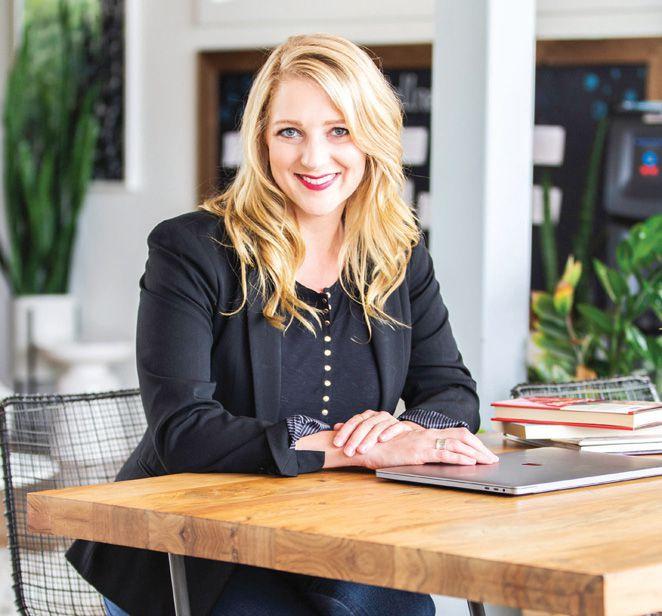
works to advance women within F&B. It does so by building community connections, sharing data insights, hosting webinars, funding scholarships, and more. Recently the organization added a corporate partnership arm wherein companies can share information about themselves and their diversity initiatives with the Females in Food community.
The organization is still in its early years, and Dodd says it has even more in store for the future.
What inspired you to start Females in Food?
My whole career has been in F&B. There wasn’t a moment or a switch that made me decide to start Females in Food; it was more an accumulation of over a decade’s worth of experiences. I’ve had situations across the board that were wonderful and others that weren’t
Ultimately, as an industry, how do we change from an organizational perspective? Females in Food can’t make policy; companies are going to make the decisions. But we can provide the insights and the partnerships; we can advance things that help move the needle for women. If this were an easy solution, we would already be at parity.
How is Females in Food structured?

We have two different membership levels: a collective and a community. The collective is a free membership in which individuals can sign up and gain access to our monthly newsletter and different resources. There are also opportunities to join industry-wide networking events and stay apprised of job postings.
The community is our paid membership in which women receive access to a private communication channel with weekly learning and development resources, industry-topic webinars, professional development webinars, inperson events, and networking events.
With F&B lagging behind in gender parity, Females in Food seeks to balance the scales.
NICOLE DUNCAN
customer groups, they’re tied to their phones anyway ... so it actually works pretty well.”
Based on executed leases, Jinya Ramen Bar will open 12 –15 restaurants in 2022, LaRue says, but aggressive pipelines from some franchisees could add to that total. Currently, the Northeast and Southeast are major targets, in places where Gen Z and millennial age groups “eat, shop, play, and entertain,” as LaRue puts it. Because the concept is able to generate a significant amount of volume in 2,500–3,000 square feet, he adds, landlords are eager to strike deals.
“We’re getting pitched new developments with some of the bigger developers in the country,” LaRue says. “That has led to some new opportunities in new markets. But again, we’re all over the country, and we don’t specifically go out and target certain markets. We follow the strong operators.”
As for Bushi, about five units are planned this year. Think: airports, college campuses, military bases, and food halls. For instance, the bushi location in Glendora is housed in 19,000-squarefoot food hall Glendora Public Market, and the Westwood unit is part of a Kitchen United ghost kitchen operation in a Ralphs supermarket.
Even though malls are declining, LaRue says developers are still pushing food courts at premium, A-rated malls.
Takahashi told QSR that his ultimate goal was to open 100 Bushi outlets by 2024. While lofty, the objective is still feasible, LaRue says, because the concept requires minimal capital and franchisees have the requisite infrastructure to open efficiently.
“Based off current opportunities that our current franchisees are looking at, in addition to new franchisee growth specific to these nontraditional locations, I think 100 is aggressive. But from a corporate standpoint, we do have the infrastructure,” he says. “I think it’s a good target to get close to it.”
Throughout 2021, Jinya added partners to support its franchise growth push. Last April, the company announced an
agreement with FranFast. The management suite features a franchise development manager to accelerate recruitment, a new store tracker to streamline the opening process, a compliance tracker to monitor the franchise network, and a franchisee solution to assist with accounts management, royalty reporting, and other items.
A month later, Jinya revealed that it appointed REAL Companies, a strategic growth advisory service, to help with its real estate process for corporate and franchise expansion. REAL provides market analysis, site selection, transactional assistance, and access to strong retail properties throughout the U.S.
As the restaurant company and REAL search for the best sites, they will do so knowing Bushi and Jinya Ramen Bar can operate in the same market.
“We actually were looking at a scenario right now where it’s a pretty high-end mall, and we’re looking at doing a Jinya Ramen Bar outside of the mall and then an actual Bushi within the mall and its food court,” LaRue says.
The ramen concept is among a growing list of brands operating in both the full-service and fast-casual space, including Buffalo Wild Wings, IHOP, Hooters, and P.F. Chang’s.
The operating expertise required to execute either brand is what one would typically think of; Jinya Ramen Bar needs franchisees familiar with running more labor-intensive, full-service restaurants and Bushi would benefit from nontraditional experience or tech-forward mindsets. In some cases, LaRue says, there’s interest to own both.
From an overarching perspective, beyond the operational differences, Jinya Ramen Bar and Bushi are about giving consumers an elevated ramen experience, Bartek says.
“We don’t even really worry if someone says it’s not as good as this little guy down the street that charges $8,” he says. “We’re not trying to be that. We’re trying to have tapas and all these drinks. We’re trying to have music and an experience.” ◗
We also have a job search accelerator. It’s a series of videos and a robust digital workbook that walks people through how to go about a search, from negotiating and networking to interviewing and positioning themselves with their personal brand or on LinkedIn.
You recently introduced a corporate dimension? Over the past two years, we’ve done a lot of outreach within our community to gain data and insights to help the industry as a whole move forward. Recently, we decided to formalize this into a corporate gender diversity partnership in which organizations are able to have a branded employer profile to reach a broader audience and say why they’re a great place for women in F&B to work. One thing we are finding is that organizations were doing great things to attract and retain female talent, but a lot of women didn’t know about it.
Beyond gender, how do other forms of diversity come into play?
We’ve focused on women in F&B, but that doesn’t mean we have less of a problem when it comes to other forms of diversity. And it’s important to understand that women of color have different experiences within the workplace.
We’ve partnered with one of the career coaches in our community to sponsor two scholarships for the Magnolia Leadership Program for Black Women. In addition to a $6,500 scholarship, the women receive the most incredible experience with professional development and also mentorship with Black leaders. Our goal is to create programs like this specifically within F&B. What’s next for Females in Food?
There’s no shortage of ideas or opportunities to go after. One of the future things on the horizon: We have a lot of female founders and small business owners. They’ve already found ways to support each other within our community, but we can do even better. Some of that is going to be making it easier for them to connect with subject-matter experts. We also want to amplify those small business owners’ voices, so more organizations know they’re out there. ◗





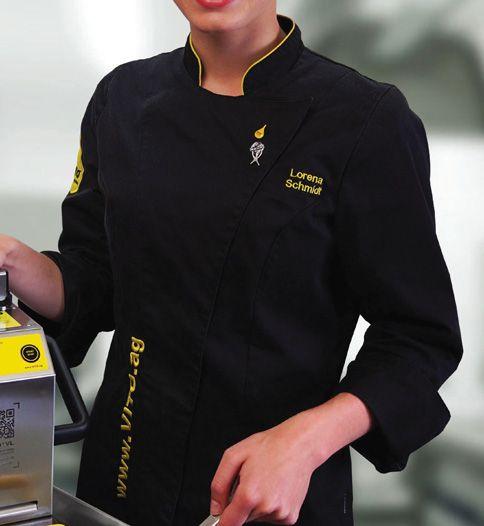
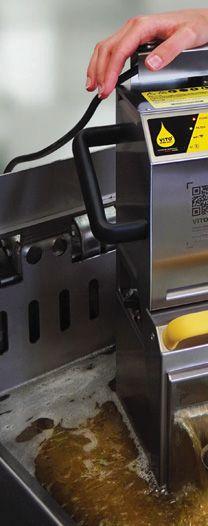
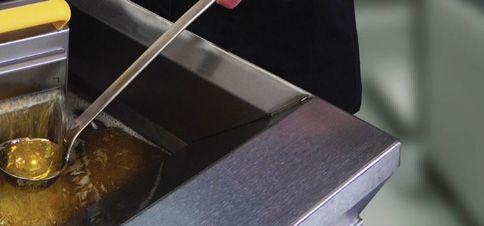















securing franchisees from underrepresented groups. It starts with fostering employees at the restaurant level to rise and achieve ownership, says John Ramsay, vice president of franchise sales.
In the near future, Noodles & Company plans to go on a road tour to recruit in specific markets.
“We as a restaurant industry have not lived up to represent the community that’s out there,” Ramsay says. “And I think we need to. We think that’s really important as it is in society.”
One key barrier to entry for underrepresented groups, including Black Americans, has always been lack of capital. This often comes down to lower generational wealth rates stemming from slavery and racism. These disparities still persist: In 2019, the typical white family had eight times the wealth of the typical Black family, according to a survey by the Federal Reserve.
Noodles’ approach is to work with lenders and nonprofits with similar values to bridge the gap, Ramsay says.
“We believe that partnering with lenders and nonprofits is going to create a whole new channel of capital that’s never been there before,” Ramsay says.
As WOWorks actively searches for candidates under this initiative, it will help match franchisees with the right brand and market. Additionally, franchise and training fees will be lifted.
“This is a very white male–dominated industry, and that’s who has to make the difference,” Roddy says, adding that leaders are the ones who must take action in leveling the playing field.
Beyond company values and social equity issues, there are business advantages to driving diversity. Amid an overarching labor crisis, being a workplace with true diversity and inclusion helps acquire talent—and keep it.
Pathways will be an integral piece of Noodles & Company’s expansion in 2022 as it aims for franchise growth and roughly 8 percent total unit growth.
“I just think that you have to start,” Roddy says. “Every good idea is just an idea until someone takes action.” ◗
of household penetration over the past year, and a significant jump in volume and velocity at retail stores.
Dara Schuster, senior director of marketing at the Frozen Portfolio of Kellogg Company who oversees Incogmeato, says non-meat options are no longer only for vegetarians and vegans, either. There’s been a huge influx of flexitarian consumers for a variety of reasons: affordability, nutrition, and especially of late, environmental impact.
Sustainability has become a higher focus of consumers when purchasing plant-based foods, she says. It wasn’t even in the top-five purchase drivers when the Impossible Burger came on the scene in 2016, but now it’s consistently included in the top three.
When adults consume a meatless meal versus one with meat, the impact on the environment is at least 40 percent less, on average, according to a Comparative Life Cycle Assessment of Plant-Based Foods and Meat Foods from Quantis & MorningStar Farms.
“As consumers look for more diverse protein options, restaurants that provide these options can stay ahead of the curve,” Smith says.
But past providing what may be considered healthier or more sustainable options, restaurant operators can incorporate plant-based meats to attract a new type of customer, especially within the Gen Z cohort. Investment firm Piper Sandler’s annual teen survey found Beyond Meat and Impossible Foods were go-to brands among the group. Roughly 47 percent of Impossible customers are millennials or Gen Z, Woodside says.
“Younger consumers, like Gen Z, are increasingly aware of the environmental implications of their food choices and are voting with their dollars by supporting brands that align with their ideals,” Smith says. “It’s expensive to buy an electric car, but for roughly $6 a consumer can buy the Beyond Burger and make a powerful statement about what they believe in.”
Drawing in the support of younger generations requires incorporating
interesting flavor profiles alongside plant-based options, Schuster adds.
“Gen Z and Gen Alpha are foodies—they’ve been exposed to a wide array of food even at a young age,” Schuster says. “To meet their cravings, we have to incorporate trending flavor profiles and new ingredients while also balancing the cost of any menu item.”
One way to do that is to develop recipes that incorporate globally inspired flavors, she says.
When the Beyond brand name is leveraged on menus, Smith says, restaurants experience a strong lift in sales. Customers who are more aware of the environmental impacts will likely continue to seek out restaurants with eco-friendly offerings, which often excludes the traditional cheeseburger.
Woodside says eating plant-based is a way to significantly curb future greenhouse gas emissions, and it can happen without making any changes to humans’ global transportation or energy habits.
“Using our food system as a tool to address the world’s climate issues is an extraordinary and untapped opportunity for positive, consumer-driven change,” Woodside says. “While many consumers are not fully aware of the connection between their personal eating habits and their individual climate impact, transitioning away from animal agriculture should be viewed as humanity’s single most powerful way to put the brakes on climate change.”
While some chefs may be hesitant, consumer interest is there. In fact, more than one in four customers said they wanted more plant-based protein menu options in a 2019 Plant-Based Protein Study from Datassential.
“We know that many chef-operators are cautious to add plant-based alternatives, fearing the product won’t perform back-of-house or drive traffic and sales,” Schuster says. “However, the reality is the opposite. Plant-based options offer operators not only consistent quality and performance, but also versatility across dayparts.” ◗







CEO Gene Lee said last September. Those brands captured $168.8 million in Q1 business, a 24 percent leap versus pre-COVID during a late May to late August spell that traditionally represents the slowest of the year. Average weekly sales were $148,372, up from $79,223 in 2021 and $131,757 in 2020.
Cracker Barrel CEO Sandy Cochran also observed a “general consumer preference coming out of the pandemic for more celebratory, higher-check occasions than we are known for.” So did Ruth’s Chris Steak House CEO Cheryl Henry, who described it as a “pent-up celebratory occasion.”
As always, all of this comes back to labor and how restaurants can actually serve that dining room demand. Technology is going to play a lead role in stripping hours out of the equation. But can it be done in a way that doesn’t threaten the customer experience?
In recent months, Huddle House and Perkins have started consumer tracking studies again. “I think with the sit-down concept, there are two things that are important: One is food, and the other is the social experience,” Delaney says.
When Delaney’s brands shifted toward to-go and got better at offpremises, it was always going to be a temporary top-line focus. “The real secret sauce to the business is being able to gather with family and friends and make it a social occasion,” she says. “So I’m sure we will always only be able to take so much labor out of it because our guests in both brands like seeing people. They like seeing the people in their small towns … that’s something that’s important.”
Huddle House and Perkins’ response was, to Lisa Lee’s sentiment, to look at technology that enhances the experience core to the brands’ respective DNAs. The chains are piloting call centers, Delaney says, to get restaurant employees off the phone and to provide a smoother process for guests.
They’ve seen an “enormous increase,” she adds, in check from orders taken by call center agents or even bots.
Jinya’s fast casual was built to grapple with labor and embrace simplicity. When it opened, there were no seats, just a counter and two people in the kitchen. Everything was ordered on a QR code or online. Jinya added shelves for drivers to pick up. Meanwhile, full-service Jinya isn’t going to drift.
“It is about the service. It is about the ambiance. There’s bars. There’s drink specials. There’s happy hour. It’s a totally different vibe,” Bartek says. “It’s tough to think through those things and what works here may not work here.”
Fazoli’s installed kiosks in company dining rooms pre-COVID, which turned out to be a shaky fit when guests weren’t sure what was safe to touch and what wasn’t in mid-2020. Today, Conrad says, adoption with those kind of self-service options is up again. And Fazoli’s, like Huddle House and Perkins, has witnessed higher check with bots and call center options. “Computers upsell 100 percent of the time,” she says.
Fazoli’s is going as far to plot a test where a robot delivers food to the table. “I don’t know if this is something that will ever come to bear in a Fazoli’s in the future,” she says. “But it’s just one of those things where we feel like we’ve got to have our minds open to try different things.”
Back on the identity angle, the Italian quick serve is known for its breadsticks brought to guests who dine in. Conrad says tech and labor fixes, and however they hold hands, need to consider that brand promise.
“If we can take some of the other responsibilities of people who are managing those dining rooms around cleaning tables, delivering food, so they can focus on ensuring people have their breadsticks, that’s the most important thing for us,” she says.
The challenge to staff dining rooms will remain problematic. In many quick serves, it’s going to keep cafes closed whether regulations ask for it or not. Koffler says Roy Rogers had to open a
recent store as drive-thru only because it couldn’t find enough workers.
“It’s not just us,” he says. “Any [quick serve] you drive by these days, the first thing you see, instead of the LTO banner, you see ‘help wanted.’ Or ‘we’re hiring.’ It’s really quite a dynamic that we’re going through right now.”
With smaller staffs and, potentially, dining rooms, will come renewed focus on efficiency and where tasks get assigned out.
“One thing that we’re seeing is that a lot of the [restaurant] CEOs are very determined that if you’re going to pay staff, you want the staff looking after customers and focusing on your customer to make sure their dining experience is the best possible dining experience you can get,” Hughes says.
Still, there is blaring light at the end of the dining-room tunnel. Sharpe says when he goes out these days, he’s lucky if he can find a restaurant with less than an hour wait. For operators, focusing on throughput is going to prove the separator.
“That goes back to how you solve the labor problem, and everyone is going to have a different spin on that,” he says. “The only thing I can say is our stance is we’re going to be who we are. We’re going to navigate. We’re going to make sure our employees our safe. We’re going to make sure our guests are safe. And we’re going to maintain the vision and the essence of every one of our brands.”
Bartek adds COVID, ultimately, will prove a dark chapter for restaurants, but one that propelled the industry forward. From providers to restaurants, technology leap-frogged prior hurdles. And guests are more accepting and adept. “We know these people want to come back to us,” he says. “We know what they want. It’s just going to take some time to deliver that experience back, but I think we’re getting in a good place. … The brands that are winners are going to continue to win.” ◗
National Honey Board . . . . . . . . . 14 303-776-2337 | Honey.com
NorthAmerican Bancard . . . . . . 109 866-481-4604 | NYNAB.com

Lamb Weston.
800-766-7783 | lambweston.com
McCormick Frank’s
23 800-322-SPICE McCormickForChefs.com/Franks-Means-Buffalo
McCormick Culinary
8, 67 800-322-SPICE | McCormickForChefs.com/ McCormick-Culinary
Mike’s Hot Honey.
60-61 212-655-0574mikeshothoney.com/sample
Mrs. T’s Pierogies Foodservice . . 29 800-743-7649 | mrstsfoodservice.com
Progressive Commercial . . . . . .
13 888-852-5719 | ProgressiveCommercial.com


25 888-737-3832 | perduefoodservice.com
Red Gold Foodservice . . . . Back Cover 866-729-7187 | RedGoldFoodservice.com
Restaurant Technologies, Inc. .



. 77 888-796-4997 | rti-inc.com
RF
5, 11, 111 800-598-2370 | rfdrivethru.com
Smithfield


A lifelong Taco Bell fan, chief food innovation officer

Liz Matthews relishes building craveable menus.
between craveability and responsible dining. Everyone should feel great about their Taco Bell order, each and every time.
Throughout last year, in particular, my team and I were busy making good on our continued commitments to our fans. We’re always listening to them. In 2021, we tested or launched everything from the Crispy Chicken Sandwich Taco to the Naked Chalupa with a Crispy Plant-Based Shell. We’re constantly developing unexpected menu items that everyone can enjoy, whether flexitarian or veggie-curious.
What was your first job?
I started out working in restaurants when I was young. Starting as a hostess, I continued to take on a variety of roles over the years and work my way up.
What’s your favorite menu item at Taco Bell?
I grew up on the Burrito Supreme, and it will forever remain my personal favorite.
What’s your favorite cuisine aside from Taco Bell?
I MAY BE BIASED, but I have one of the coolest jobs and greatest teams out there. I lead Taco Bell’s food innovation team and the masterminds of our famous test kitchen. Whether you’re enjoying a limited-time food offering or menu classic, my team plays an important role in bringing delicious food innovations to your plate.
I grew up on Taco Bell and loved how I could access a whole menu of flavor with even just $1. But I actually went to California State University to study psychiatry. One semester, I took a nutrition class. That was a pivotal moment where my interests shifted, and I ended up going to school for food science and nutrition. Later, I ended up in the manufacturing space. I knew I wanted to make my way back home to the L.A. area, and I found Taco Bell. For over two decades, I’ve been working to make sure our fans don’t have to choose
Not only do we want our food to be unique and craveable, but we also want it to feed people’s lives with good. We’re on this exciting path that we call our Food For All journey, where we constantly evolve our menu to make sure we’re offering food that fits each and every lifestyle. Over the years, we’ve done everything from reducing sodium and removing artificial colors to sourcing only cage-free eggs and chicken raised without human antibiotics.
I’m also proud of our work to leave a lighter footprint. With thousands of restaurants, we understand our responsibility to make a positive environmental impact. We made a global commitment to ensure all of our consumerfacing packaging is recyclable, compostable, or reusable by 2025. Yes, all of it. We’ve launched a partnership with TerraCycle, we’re generating demand for unwanted recycled materials, and we’re even repurposing used cooking oil in some restaurants. We have lots more in the pipeline for the rest of 2022. ◗
Super hard question as I love it all. I would say behind Mexican, it would have to be Japanese—sushi, udon, ramen, soba.
Who inspires you as a leader?
Right now, it’s this next generation. I have inspiring teenagers, and they are nothing like I was when I was a teen! Young people across the world are teaching us all so much about the past, the present, and different ways of thinking about the future.
What’s the best piece of advice restaurant executives should hear?
Always listen and observe. I am not the consumer or a team member that works in the restaurant anymore. Your team members have so much insight to the business and have amazing ideas.


